Want to create or adapt books like this? Learn more about how Pressbooks supports open publishing practices.
Instructional Strategies and Engaging Pedagogies

2 Problem and Project Based Learning
Amena Karimi; Fatima Nasiry; and Zainab Mirzaie
Learning Objectives
After reading this chapter you will:
- Be able to differentiate between project-based and problem-based learning.
- Know effective strategies to improve students’ critical thinking and creativity skills.
- Develop projects that foster students’ independence, teamwork, and communication skills.
- Teach students how to organize, develop, and manage successful projects.
- Relate problem and project-based learning to the real world.
- Break down problems into components to process and provide solutions.
This chapter contains an overview of the problem and project-based learning, its advantages, and challenges. The main focus of the chapter is on the effective tips and strategies for implementing this pedagogy in the k-12 setting. Moreover, it states how problem and project-based learning pedagogy is different from a traditional classroom while outlining its impacts on solving real-world problems and students’ life. This chapter is written based on reviewing several kinds of literature and their findings and also, real experiences of teachers from the internet and a podcast interview, which is included here as a source of information and knowledge sharing for instructors.
Introduction
Problem-based learning (PBL) is a student-centered approach where students learn about a subject or course by working in groups or individually to find the solution for an open-ended problem (Cornell, n.d.), and project-based learning (PBL) or project-based instruction is an instructional approach that gives students the opportunity to acquire knowledge and skills through interactive projects, along with the challenges and difficulties they may confront in the real world (M, K, 2022). Thus, problem- and project-based learning, when combined, is a learning method that allows students to enhance their understanding by experimenting with a project practically (Thomas, 2000). It requires them to design, execute, and assess projects that have real-world applications outside of the classroom (Westwood, 2008). According to Affandi et al. (2016), project-based learning and problem-based learning are terms that are employed in order to define a variety of instructional strategies. These approaches focus on students and provide them the opportunity to ask the teacher a question or several while working (Bell, 2010). The advantages of these approaches are to allow students to make decisions, find solutions to problems while learning, and develop their ability to think critically (Ndraka, 1985). PPBL has a wide range of applications in the student-centered method, in which students learn by experimenting and the teachers play a significant role in facilitating the instruction for the students.
This chapter discusses the problem and project-based learning, their differences, along with their advantages and disadvantages. In addition, the practical strategies to improve the student’s critical thinking and creativity skills include several ways the teachers use in their classes to enhance the student’s critical thinking and creativity skills. Furthermore, it includes tips on how to implement an effective PPBL that fosters student independence, develops student teamwork, and improves student communication and collaborative working skills. It also includes the key elements to consider for a successful project and ways to prepare the students to organize, develop, and manage projects. Moreover, this chapter covers the role of the problem- and project-based learning in solving real-world problems and the relationship between PPBL and traditional learning methods as well as how it is used in K–12 settings.
Problem-Based Learning
One educational strategy is problem-based learning, where students spend a lot of time researching and responding to solve challenges, and problems but authentic questions to gain Knowledge and skills (Hartman et al, 2013, p. 2). PBL is a targeted, practical form of education based on the evaluation, defense, and resolution of significant problems. students in this method learning practice many skills in a group to become skillful (Loyens et al, 2011 p.5). To facilitate student learning through the learning cycle, the instructor is a facilitator (Hartman et al, 2013, p. 2). Throughout the cycle, the students are presented with a problem scenario. By selecting the crucial information from the event, they construct and analyze the problem, representing the issue and developing theories regarding potential solutions.(Hussain et al, 2014 p.51). Finding knowledge gaps about the issue is a crucial step in this cycle, When students engage in self-directed learning, these knowledge gaps turn into what is known as learning difficulties (Loyens et al, 2011 p.4). Students then put their newly learned knowledge to use by applying it and evaluating their hypotheses in light of what they have discovered SDL. The teacher assists students in acquiring the cognitive skills required for cooperation in problem-solving. (Silver, 2004, p.237).
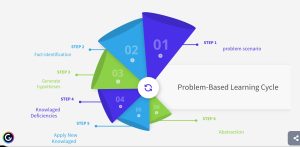
Figure 1 The process of problem-based learning
Problem-based curricula give students supervised opportunities to learn by resolving challenging real-world issues. according to Silver (2004), PBL was created with several significant goals which are listed below.
- It is intended to support students in building a broad and flexible knowledge base,
- Effective problem-solving abilities,
- Self-directed,
- Lifelong learning skills,
- Effective collaboration abilities, and intrinsic motivation to learn.
Project-Based Learning
PBL is a teaching method based on practical assignments that pose challenges for students to solve as well as learning activities. Also, PBL is described as a student-driven (student-centered) approach to learning in which students are obliged to engage in a real project by formulating a topic or inquiry and working under the guidance of teachers to produce a project to present to a select audience (Le, 2018 p.2). In other words, students are involved in creating their research questions, organizing their research, planning their learning, putting into practice a variety of learning methodologies, and evaluating their projects that have applications outside of the classroom. These tasks allow students to work largely independently for lengthy periods and result in realistic presentations or products (Colley, 2008, p.27).
The same to problem-based learning, project-based learning works through a cycle. This cycle includes Orientation, a project’s identification, Planning, implementing a project, reporting project findings, and evaluation. Students will be familiar with the project’s question, significance, methodology, resources, and timetable by the end of this cycle. Then they define each member’s function and accountability. Finally, they need to assess their workflow (Colley, 2008, p.27).
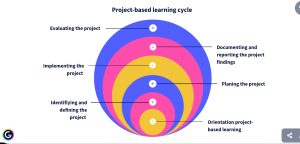
Figure 2 The Process of Project-Based Learning
After suffering for a while in most academic contexts, many students discover the purpose and justification for learning by working on projects. Project-based learning can assist students in meeting state requirements and preparing for state exams by aiding the acquisition of subject-matter knowledge as well as reasoning and problem-solving skills. It shows that PBL’s ability to engage students and motivate those results in high achievement. A larger variety of learning opportunities can be introduced into the classroom through PBL. According to Le (2018), PBL in teaching and learning provided these significant goals which are listed below.
- Students’ academic achievement
- Students’ understanding of the subject matter
- Students gain an understanding of related skills and strategies
- Students’ positive attitudes toward learning
- Perceived changes in work habits and other PBL process behavior
What Is the difference between Problem and project-based learning
Problem-based learning and project-based learning are frequently mixed. This may be partially because the abbreviation PBL is commonly used to describe both techniques. Although they are similar, problem-based learning and project-based learning differ in a few significant ways. Students participate in both PBLs by striving to provide answers to or resolve issues. In both approaches, students are tasked with coming up with a unique solution to challenging problems that lack an obvious solution. The result that students produced is the primary distinction between problem- and project-based learning. In a problem-based learning class, students just emerge a solution to a problem. While Students in project-based learning must develop their concepts and finish a comprehensive project (Lynch, 2017). One type of problem-based learning is project-based learning (PBL), which differs from other kinds of PrBL encounters in a few key ways. Both PBL and PrBL begin with a real-world problem, but the two have slightly different processes and results (Segar, 2021).
Video 1 Difference between problem and project-based learning
Advantages and Disadvantages of Problem and Project-Based Learning
According to Jones (2006) and Mihic and Zavrski (2017), problem and project-based learning have several advantages in the learning process, while it has some challenges either, some of which are listed below.
- Avoiding overload of information and focusing on learning fundamental information that is applicable to real-world circumstances.
- Fostering the development of significant transferrable skills that are beneficial for lifetime learning. They include team leadership, communication, and problem-solving.
- Allows control over and opposition to the learning process. encouraging pupils to be responsible for their own learning. This is a key skill for medical specialists who actively participate in their own ongoing professional progress throughout their careers.
- Strengthens analytical reasoning. Learners are more motivated to learn when learning is centered on “real-life” occurrences.
- Improves problem-solving and higher-order cognitive abilities. It promotes a deep rather than a surface-level approach to learning by requiring students to interact with the content in greater depth and on more levels than in typical teaching approaches.
Disadvantages
- Because the facilitator job has taken the place of the traditional teaching role, it could be difficult for trainees to emulate effective teachers as role models.
- Teaching staff members should foster learning rather than quickly transfer their knowledge. To academics, this could be perceived as unproductive and even demotivating.
- Why Information acquired through PBL is less structured than information acquired through traditional learning.
- Training facilitators can be difficult, and there aren’t many academics that have facilitating abilities in addition to more traditional teaching ones.
- The time commitment that trainees must make to PBL. For aspiring anesthetists or prospective doctors of acute care, this can be particularly challenging.
- Time limitations on the creation, administration, and administration of PBL courses.
Effective Strategies to Improve the Student’s Critical thinking and Creativity skills
Problem-and project-based learning is an essential pedagogy for developing creative thinkers and learners. Students answer genuine problems by creating their own queries, making plans for their own learning, arranging their research, and putting a variety of learning techniques into action. Students thrive in this student-centered, motivating learning environment and develop valuable skills that will lay a reliable foundation for their success.
Critical Thinking
The skill to interpret data, draw assumptions, demonstrate points effectively, analyze data, and assess data is referred to as critical thinking. However, the student’s critical thinking skills are still developing (Anazifa et al., 2017). Critical thinking, which also refers to higher-level thinking (higher-ordered thinking or higher-level thinking), consists of the top three competencies in Bloom’s Taxonomy: the capability to analyze, summarize, and assess (Bookhart, 2010; Moore & Stanley, 2010). Critical thinking skills can be developed through open-ended or distinct questions. Anazifa et al. (2017) cite that open-ended questions are those that have multiple right answers. Hence, problem-based learning is among the learning methods that promote critical thinking skills, particularly in science. Problem-based learning introduces problems that motivate students to consider not only the reason but also the method for addressing the issue (Strobel & Barnevel, 2009). Students’ abilities to think critically can be developed and improved through problem-and project-based learning.
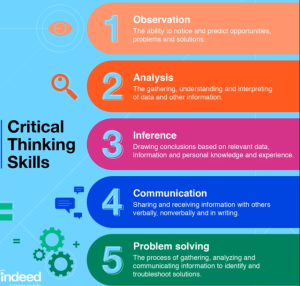
Figure 3 Critical Thinking Skills
Creativity S kills
The goal of creativity development is to train students to confront challenges while working in groups or individually (Kind & Kind, 2007). According to Trilling and Fadel (2009), creativity can be discovered in an environment that promotes queries, persistence, willingness to explore innovative ideas, high trust, and acquiring knowledge from failures and mistakes. Continual practice can assist in increasing the student’s creativity. For example, learning through projects to solve real-world problems is among the most effective methods for fostering creativity. In addition, Anazifa et al. (2017) cite that creative thinking has a significant impact on students’ academic achievement along with PPBL.
How to Improve Critical Thinking and Creativity Skills ?
There are several ways for improving critical thinking creativity and abilities, Jamie Birt. (2019):
- Increase S elf- A wareness: The student should think about their thought processes, values, morals, integrity, and other perceptions as their self-awareness grows. The teachers should teach them to consider their preferences and dislikes with objectivity. The teachers can better understand their students’ perspectives by becoming more aware of their personal preferences, areas of strength, and prejudices.
- Recognize the Student’s C ognitive S tate: The way students obtain and apply relevant data should be determined and analyzed. It is crucial to understand a person’s listening, perceiving, and responding processes in order to improve cognitive productivity in group or individual work. Being a critical thinker involves being aware of our prejudices and how they impact our decisions and choices. The students must take some time to consider their thought processes before attempting to make a decision. They will be able to react more logically as a result.
- Develop Vision: Students should be taught to consider how others might respond to a circumstance or decision they make. It’s important to consider a condition’s possible consequences as well as any factors that could have a positive or negative impact on it. Making the best choice will be facilitated by having the foresight to foresee the reactions that their behavior in collaborative work will result in.
- Practice Active Listening: Critical thinking requires active listening as a fundamental skill. While collaborating with their peers and being guided by their teachers, students must be attentive and listen intently. They should practice empathy and concentrate on comprehending the viewpoint of their adversary. Understanding what they want, need, or anticipate in great detail can help them respond positively and produce positive results.
- Ask Questions: Students must always ask their teachers for explanations if they have questions. They could, for instance, ask about the things they already know to make sure that everything they already know is accurate, or they could ask follow-up questions to find out if there was any specific information that was overlooked or misunderstood. This step can help students give information a purpose and value.
- Examine the Available Evidence: The students must practice critical thinking to reach their final decision, which they must support with evidence from their past experiences. By conducting experiments, organizing facts, and using prior experience as available evidence, students can come up with a more appropriate and effective method for working within the present.
In addition, Jamie Birt (2019) states that taking part in team-building exercises, looking for leadership positions, and seeking assistance from an instructor can all help students develop their critical and creative thinking abilities.
How do Problem and Project-Based Learning foster students’ independence?
Independence or self-directed learning is the learning that students learn by doing on their own. It does not mean students take isolated from others but students for learning communicate and take guidance from others. In self-directed learning, the teacher is not the one who teaches each and single part of the subject, but students independently go to search and learn (Kapur, 2019 p.1). The importance of self-learning leadership is that the student is not limited to the teacher’s method, theory, and plan, but seeks different and new ways to learn and complete her or his project (Tripon, 2015 p.40). This makes the student learn and gain experience beyond what is expected (Kapur, 2019). These project-based learning techniques enable students to engage in self-directed learning (Bagheri et al. 2013 p.19):
- The organization of learning around real-world problems
- Student-centered instruction
- Collaboration
- Teacher as facilitator
- Authenticity through the use of authentic materials and audiences
- Formative assessment
- And the production of authentic artifacts
Teamwork Development in Problem and Project-Based Learning
Teamwork is small group students accomplishing unit goals work together on one project. Teamwork has several advantages it encourages students to learn from one another, students get social support for individual efforts, and students through teamwork learn different skills (Campbell & Siha, 20015 p.2). A successful team has these characteristics, it helps the member learn from diverse knowledge, skills, experiences, and interests of team members; the team helps members find creative responses to challenges; the team accelerates the product, services, and profitable strategies and the team directed the challenges to a productive direction (Serrat, 2017 p4). In today’s world, most organizations in different parts accept teamwork because they think the team is more helpful for solving problems than the individual. Mainly the problem with these features (Serrat, 2017 p2.3):
- The problem is relatively complex, uncertain, and holds the potential for conflict
- The problem requires inter-group cooperation and coordination.
- The problem and its solution have important organizational consequences.
- Deadlines are tight but not immediate.
- Widespread acceptance and commitment are critical to successfully implementing a response to a situation, condition, or issue.
In PPL, the teacher typically assigns a group project that the students must complete by the end of the term. Working on projects helps students develop a variety of abilities, including active listening, communication, problem-solving, team building, task allocation, and team relationships, also learning delegation, quality standards, and goal-setting techniques (McCuddy et all, 2002 p.7).
Improving Students’ Communication Skills via Problem and Project-Based Learning
A meaningful exchange of thoughts, opinions, ideas, viewpoints, or messages between at least two people is often regarded as communication or it may also be seen as an exchange of concepts and knowledge to create a shared understanding for the efficient operation of business associations. (S U Putri and S Hidayat, 2019 p. 2). Good communication has these qualities: First, it is clarity. Good communication must transform the messages clearly without any wrong pronunciation, grammar matters, and wrong spelling words. Also, the information must be unity and coherent. It helps there not be any doubt or misunderstanding for the receiver. Second, good communication is brevity, we should communicate with few words. It means in a short time try to transform your message into simple and short words instead of long phrases. Conciseness, avoid misunderstanding and confusion among receivers. Third, communication should be complete. It should include facts and necessary information. Communication shows the personality and images of a person and organization. Incomplete information is the waste of time and shows the weakness of the sender. Additionally, in good communication sender considers the feeling and wishes of the receivers. Finally, listening with patience is one of the most important characteristics of communication related to the receiver. The receiver should pay attention with patience does not harry to respond especially in oral communication (Girdhar & Malik, 2018 p1.2). Problem-based project-based learning encourages students to practice their communication skills throughout each term of their academic careers, it means Students can connect and communicate with one another while working on a project by engaging in activities, and as they complete the project, they use their persuasive skills to share ideas and persuade one another(S U Putri and S Hidayat, 2019 p. 8). By the way, Students will learn how to communicate effectively by practicing how clarity, conciseness, completeness, and consideration communicate.
Elements to C onsider for S uccessful P rojects
Problem and project-based learning enable the students to work collaboratively with their classmates to share their team working skills and design a successful project. Realistic projects typically require success criteria. However, PBL requires students to tackle real-world issues (Bell, 2010).
According to Wyman. (2020), the elements to be considered for making a Project successful are;
- Provide meaningful real-world connections : The students need to be given real-life problems to be able to comprehend them thoroughly. Developing a component in real life instills importance while also stimulating curiosity, awareness, and emotional development.
- Make time for practical learning : Students are required to make time for experiential learning elements that require them to examine and experience them through trial and error. Knowledge gained from failed attempts is equally beneficial for implementation as knowledge gained from successful attempts.
- Provide opportunities for team building : Allow students to collaborate creatively so that they can express their views and test ideas to increase participation and class connection. Instead of relying solely on the teacher, students can benefit from one another and gain confidence as researchers and observers.
- Reconsider the driving question : It is critical to stay focused on the question in order to solve the problem and complete the project-based learning project successfully. Sticking to the driving question makes sure that the definition of the component is not lost, that your rubric accurately examines your key goals, and that students are aware of its greater emphasis and benefit.
- Differentiate through teams : Educators must divide the students wisely to verify the type of success the teacher knows they require. Make a distinction based on academic excellence, communication ability, personal preferences, or motivating factors. This provides students with better opportunities of grasping the material in the ways that are most effective for them. This, in turn, helps them feel personally and academically successful within the group.
- Focus on student-driven learning : Once the problem and project-based learning projects are underway, remember that students will need this time to research and discover new thoughts by the teacher’s guidelines.
- Include self-assessment : Accountability and in-depth interpretation are encouraged when students are asked to evaluate their work and performance as valuable teammates, leaders, observers, and collaborators. If these assessments have been a regular practice, students frequently begin to recognize how they have enhanced their interpersonal skills.
- Reflect on your progress : These reflections help teachers improve each element of project-based learning so that it gets better with every iteration and the students get the most out of it.
Ways to P repare the S tudents to O rganize, D evelop, and M anage P rojects
Project organization, development, and management have emerged as essential skills for learners who have started organizing their work in the form of projects led by groups of students with the goal of achieving successful objectives for their project (Kloppenborg. et.al, 2016). Furthermore, Kloppenborg et al. (2016) cite that to meet project criteria and deal with various challenges while working on a project, project management necessitates applying skills, tools, and methods for executing the project. (PMI, 2000, p. 6)
The following are some ways that problem and project-based learning can help students prepare. (Method Schools Team, 2017):
- Time management: A successful project needs an incredible quantity of time management to be developed and presented in order to be organized, developed, and managed. To accomplish a project by a specific deadline, the student should first ascertain how much time they will need to allocate as a whole. They must then divide a certain time period into relatively small, more achievable steps. Students would be more ready to work on complex projects if they had the chance to acquire this expertise through a wide range of projects.
- Organizational skills: Assembling projects teach students the value of organization, both physically and mentally. This is certainly relevant if they are provided with a separate working environment, which they must maintain organized. It also relates to individuals who collaborate in communal environments like group work and are responsible for organizing their own opinions, concepts, and materials.
- Collaboration Skills: The students should be taught how to work collaboratively while working with their peers, which will enable them to enhance their skills by working as part of a group. In addition, it allows the students to look at the importance of teamwork thoroughly, which is an indispensable learning opportunity when it comes to working in a cooperative environment as part of a group.
- Problem-Solving Skills: Traditional methods of instruction necessitate students to learn in an extremely passive way. For instance, passive learning in the traditional school setting involves students listening to long, unsatisfying lectures. However, problem- and project-based learning encourages learners to think outside their comfort zones and find solutions in a new and exciting manner.
- Self-Direction: The ability to divide any activity into achievable pieces in order to determine what to do next is a critical skill that every education system should assist students in developing. It is even more significant to have the motivation to complete those activities. These two abilities combine to produce a person with wonderful work. Thus, problem and project-based learning expand the student’s knowledge to organize, develop, and manage a project with productive results.
- Ability to Find Information: To organize, develop, and manage important tasks, the creator must conduct extensive research. Because lecture-based and memorization-based learning are rarely used in project-based learning, students must conduct their own research. This is a critical step in the procedure because it teaches students how to find helpful information.
- Constant state of Learning: The most incredible positive aspect of problem and project-based learning is the enthusiasm it fosters in students. Students in a project-based learning classroom enhance a long-standing willingness to satisfy their curiosity since the projects designated almost exclusively focus on subjects that intrigue them and also play an influential role in their education. This seems to be best suited for acquiring new abilities and adapting to environments that change frequently. Project-based learning is an excellent alternative to traditional curricula, particularly for preparing students for upcoming group projects for their further education.
Bell (2010) states students complete a self-evaluation at the end of the project. They assess not only their own learning but also the effectiveness of their interpersonal relationships. They consider their communication skills and whether they could communicate with other students in terms of listening thoroughly to their ideas and having their own perspectives heard. Effective implementation and practice of this expertise will contribute to competency and deep understanding over time.
Role of Problem and Project-Based Learning in Solving Real-World Problems
Problem-based learning is about solving real-world problems in unique ways. In problem and project-based learning, students are immersed in real-world issues, helping them to develop critical thinking, metacognitive abilities, creativity, and invention (Devilee, 2008). One of the important characteristics of PPBL is that it uses real-world, relevant problems that are meaningful to learners and makes learning more personalized and practical.
Where did Problem-Based Learning Emerge from?
Problem-based learning was first implemented at McMaster University of Canada in the 1970s (Barrows, 1994; Norman and Schmidt, 1992 as cited in Gallagher, 1997). The McMaster team of the medical school noticed that there are big differences between medical students whose time was passed with textbooks and physicians in their examining room. They discovered that, although medical students had only the correct answers and were not flexible thinkers, physicians were constantly willing to modify their thoughts and build new notions of what was wrong with patients. The McMaster university team came up with the next best thing—simulated patients, who are frequently taken from genuine case files—after seeing that learning environments where students were engaged with textbooks but not real case patients maintained the students as constrained learners. Assigning relevant texts and educating pupils on problems are preferable. By using teachers as problem-solving guides rather than as all-knowing experts, PBL transformed traditional learning into problem-based learning (Gallagher, 1997). It later spread to other disciplines of economy, business, law, and education. Because PBL has a strong emphasis on real-world issues and social processes, it belongs to the social family of educational practices.
Problem and Project-Based Learning Vs Traditional Learning
The concept of one-size-fits-all instruction is associated with traditional education. This type of training makes the assumption that regardless of their innate talents and abilities, all students must go through their education at the same rate and with the same resources in order to reach the same level of abilities, knowledge, and skills. This helps them design unique assessments that raise the bar for all students to the same level. But students are really different from one another. Each of them possesses a distinctive skill, learning style, IQ, and rate of information processing (Samurai, 2021). Whereas John Dewey’s concept of subject matters in learners was the foundation for problem and project-based learning in his book Education and Democracy. He believes that “knowledge exists as the content of intelligent ability—the power to do” (p.192). The qualities that individuals learn by doing—such as how to walk, talk, read, write, skate, ride a bicycle, operate a machine, calculate, drive a horse, sell goods, manage people, and so forth—stick with them the longest (Dewey, 2001). The following table makes the differences between the 2 models and their learning outcomes easier to understand.
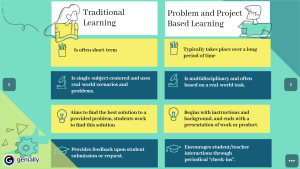
Figure 4 PPBL vs traditional learning Method
Problem and Project Based learning in the k-12 setting
PBL appears to be a successful method for raising students’ accomplishment levels and is a potent tool for tying students to their community with actual goals and audiences. It is crucial that kids understand they have a voice and what can potentially lead to change. There is a link between the students’ project’s purpose and every class. Therefore, PBL through civic education is a crucial component of students becoming engaged, contributing, and functioning citizens of their communities (Edutopia, 2017). Because they meet problems without conducting any background research and with knowledge insufficient to address the challenge, PBL calls for students to expand their existing knowledge and understanding and apply this expanded understanding to propose a solution. “Ill-structured” problems without a single, straightforward, or formulaic answer inspire students to ask questions and look for more information (Wirkala and Kuhn, 2011).
Significant Effects of Problem and Project-based learning on students’ personal and academic lives
- Critical Thinking and Problem-Solving Skills
To fulfill the criteria of the 21st century, one of the eligibility requirements is the ability to think critically and solve problems. When searching for accurate solutions and understandings about the real world, critical thinking refers to a trustworthy and effective mental process. It mostly concerns the process of evaluating concepts in a more concentrated manner (Sholihah and Lastariwati, 2020). One of the instructional approaches that promote critical thinking and problem-solving abilities is problem and project-based learning. In this model, the amount of knowledge transferred from teacher to students is not as important as the development of critical thinking competence. By utilizing their communication, problem-solving, critical thinking, and independent learning skills, it allows students the freedom to tackle educational challenges. This ability to solve problems can be observed in how students look into a situation and identify solutions (Ernawat, 2022). Through PPBL, students will learn the process of solving problems through the following steps which are a part of design thinking too.
- Determine the problem.
- Make a list of all potential solutions or actions.
- Consider all of the options.
- Decide which approach to try.
- Use the answer to your problem.
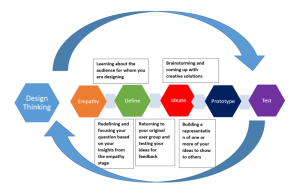
The process of students working to solve a real-world problem is an illustration of design thinking in which children use real-world situations to address problems and come up with solutions (Wikibooks, 2016). Understanding the problem at hand is a crucial indication of the problem-solving abilities that need to be developed during learning. This is consistent with the beginning steps of the PBL paradigm, which entail posing problems for students to solve. Students are taught to comprehend a problem, formulate a solution, implement the solution as planned, and evaluate all phases through problem-based learning (Sari et al., 2020).
- Collaborative Activities
Research has demonstrated that using a team to work on projects to find answers or ideas for problems in the real world increases students’ social attitudes toward teamwork. A problem and project-based learning approach involves students in team and collaborative activities. In a capstone college course, around 85% of students reported receiving good feedback regarding their team’s performance, according to a research by Kapp (2009). This course was evaluated in 2 steps of individual and collaborative assessments to show how students develop through peer reviews and feedback. Adopting PPBL from elementary to higher education creates the social attitude of teamwork for students. Not only the educational life but personal and academic life of students requires the skill of collaborative working. According to AC Nielsen Research Services (2000) as cited in (Jalinus et al., 2020) employers are looking for people with abilities including creativity, problem-solving, and cooperation. According to Wulandari et al. (2015), in the workplace, problem-solving requires strong teamwork in addition to knowledge and abilities. According to the study by Setiawan and Soenarto (2017), three competencies—teamwork skills, self-management skills, and technological skills—have a high level of needs when it comes to categorizing the effective competency of graduates required by the sector. Students can encourage one another and aid in the success of their projects by working on cooperative projects. Many students encounter both technical and non-technical issues when completing projects, and teamwork is the key to resolving these issues. Since they are aware of it, students naturally develop their collaborative skills to address difficulties (Jalinus et al., 2020).
Students explore to learn about a subject via problem- and project-based learning, which is a student-centered educational strategy.(Thomas, 2000). Most people think problem-based learning and project-based learning look similar, but there are a few significant ways they differ. While in a project-based learning session, students are required to develop their ideas further and complete a whole project, students in a problem-based learning lesson are only required to come up with a solution to an issue. (Lynch, 2017). Although there are some challenges to the implementation of PPBL like a lack of professional facilitators, a lack of time, and less structured information, the implementation of this method of learning has effective outcomes. First of all, PPBL fosters the students’ independence. In this method, it is not the teacher’s responsibility to provide or teach everything to the students; they learn every single thing through working on a project, and the teacher is a facilitator. Second, project-based learning fosters the development of delegation, quality standards, and goal-setting abilities in students. These skills include active listening, communication, problem-solving, team development, task allocation, and team relationships.(Method Schools Team, 2017). Third, engaging in project-related activities encourages student interaction and communication. As they work on the project, they make every effort to share ideas and convince one another(S U Putri and S Hidayat, 2019).Students will practice effective communication skills like clarity, brevity, conciseness, completeness, and consideration through the projects (Girdhar & Malik, 2018 p1.2). Finally, the PPBL develops the critical thinking and creativity skills of the students. Students in PPBL practice the process of solving problems critically by identifying the problem, finding a list of possible solutions, considering the possible solutions, attempting the chosen solution, implementing the solution, and assessing the solution (Colley, 2008, p.27). In addition, there are plenty of methods to advance critical thinking and creativity skills, such as increasing self-awareness, recognizing students’ cognitive states, developing vision, practicing active learning, asking questions, and examining the available evidence. Furthermore, problem- and project-based learning allows the students to perform the given tasks collaboratively with their classmates to share their teamwork skills and design a successful project. The key elements to be considered for a successful project are providing meaningful real-world connections, making time for practical learning, providing opportunities for team building, Reconsidering the driving question, differentiating through teams, focusing on student-driven learning, including self-assessment, and reflecting on the student’s progress. Implementing this model in traditional classrooms is possible. Hence, it develops students’ skills in solving real-world problems. Students will acquire enough knowledge and skills in school to prepare them for future real-world challenges.
Review Questions
We will consider the two strategies of generative learning.
- Teaching others – the readers will be able to comprehend this chapter’s context.
- Drawing- A visual graphic organizer from the concept of problem and project-based learning can help readers to imagine and get the practical method of applying the method for students.
Recommended Readings
Jalinus, N., Syahril, S., Nabawi, R. A., & Arbi, Y. (2020). How project-based learning and direct teaching models affect teamwork and welding skills among students . International Journal of Innovation, Creativity and Change., 11(11) , 85-111.
Stephanie Bell (2010). Project-Based Learning for the 21st Century: Skills for the Future, The Clearing House: A Journal of Educational Strategies, Issues and Ideas, 8:2, 39-43, DOI: 10.1080/00098650903505415
Silver. C.E.H. (2004). Problem-based learning: what and how do students learn. Journal e?education Psychology Review, Vol. 13, No.3, https://www.brown.edu/academics/medical/sites/brown.edu.academics.medical/files/uploads/Hmelo-Silver,%20Problem-Based%20Learning%20What%20and%20How%20Do%20Students%20Learn_0.pdf
Receive a badge
After reading our badge you may receive a badge clinking below button:

- Project-based Learning: The emphasis of project-based learning is on developing an interactive environment for learning in the classroom where students can actively explore problems and challenges from the real world and gain a deeper understanding.
- Problem-based Learning: Problem-based learning is a student-centered technique where students will gain knowledge about a subject or course by working through an open-ended problem discovered in the material.
- Project Management: Project management is the process of controlling a group’s activity to fulfill the project’s purposes within the time given.
- Critical Thinking: A fundamental component of critical thinking is a questioning and challenging attitude toward information and received wisdom. It entails considering concepts and facts objectively in light of our objective standpoint in light of our values, attitudes, and personal philosophies.
- Creativity Skills: It is the ability to generate something in a new form and it includes assessment, open-mindedness, problem-solving, organization, and communication.
- Bloom’s Taxonomy: This is a hierarchical classification of thinking levels that should be used when developing course objectives.
Podcast Episode
In the podcast episode, we have introduced our topic and its importance. Also interviewed an education expert, Sayed Mohammad Nazim Uddin; an Associate professor at Asian University for Women who shares his experience about the problem and project-based learning in his teaching experience, its effects, challenges, and effective strategies for implementation of the problem and project-based learning for educators.
Affandi, Ahmad & Sukyadi, Didi. (2016). Project-Based Learning and Problem-Based Learning for EFL Students’ Writing Achievement at the Tertiary Level. 10.14456/rjes.2016.2.
Alison Doyle. (2022). What is creative thinking? The Balance. https://www.thebalancemoney.com/creative-thinking-definition-with-examples-20637440
Anazifa, Rizqa & Djukri,. (2017). Project- Based Learning and Problem-Based Learning: Are They Effective to Improve Student’s Thinking Skills?. Jurnal Pendidikan IPA Indonesia. 6. 346-355. 10.15294/jpii.v6i2.11100.
Bagheri.M, Ali.W. Z. W, Abdullah. M. C. B, Daud. S. M. (2013). Effects of Project-based learning strategy on Self-directed Learning skills of Education Technology students. Research Gate, DOI: 10.30935/Medtech/6089 .
Bloom’s Taxonomy. (n.d.). WHAT IS BLOOM’S TAXONOMY? Resource for Educators. https://bloomstaxonomy.net/
Brookhart, S. M. (2010). How to Assess Higher-Order Thinking Skills in Your Classroom. Alexandria:ASCD.
Campbell. S.M. Siha.S. (20015). Teamwork. ResearchGate https://www.westga.edu/~bquest/2015/teamwork2015.pdf
Cognition and instruction/Problem-solving, critical thinking and argumentation – Wikibooks, open books for an open world. (2016). Wikibooks. https://en.wikibooks.org/wiki/Cognition_and_Instruction/Problem_Solving,_Critical_Thinking_and_Argumentation/
Collelete, A.T., & Chiappeta, E.L. (1994). Science Instruction in The Middle and Secondary School. New York: Macmillan Publishing Company
Colley. K. (2008). Project–based science instruction: A primer an introduction and learning cycle for implementing project-based science. Sci Teach 75 no8. http://impact.utoledo.edu/docs/PBS%20Instruction%20A%20Primer.pdf
Cornell University. (n.d.). Problem-based learning. Welcome | Center for Teaching Innovation. https://teaching.cornell.edu/teaching-resources/engaging-students/problem-based-learning
Devilee, A. (2022, April 12). What is problem based learning? | Instructional design. Instructional Design Australia. https://instructionaldesign.com.au/problem-based-learning/
Dewey, J. (1966). Democracy and education (1916). Jo Ann Boydston (ed.). The Middle Works of John Dewey, 9, 1899-1924.
Edutopia. (2017, June 20). Project-Based Learning: Raising Student Achievement for All Learners [Video]. YouTube. https://www.youtube.com/watch?v=eGWqBZSFgxE
Ernawati, M. D. W., Rusdi, M., Asrial, A., Muhaimin, M., Wulandari, M., & Maryani, S. (2022). Analysis of Problem Based Learning in the Scaffolding Design: Students’ Creative-Thinking Skills. Cypriot Journal of Educational Sciences, 17(7), 2333-2348.
Gallagher, S. A. (1997). Problem-based learning: Where did it come from, what does it do, and where is it going? Journal for the Education of the Gifted, 20(4), 332-362.
Girdhar. A. P, MaliK. A. K (2018). The essence of effective communication. Research Gate, https://www.researchgate.net/publication/326534323_Essence_of_Effective_Communication/citations
Hartman. B. K, Moberg. C.R., Lambert. J.M. (2013). Effectiveness of problem-based learning in the introductory business courses. Journal of Instructional Pedagogies. https://files.eric.ed.gov/fulltext/EJ1097131.pdf
Hidayat. S, Putri. S. U. (2019). The effectiveness of project-based learning on students’ communication skills in science. Journal of Physics Conference Series. DOI: 10.1088/1742-6596/1318/1/012006. https://journals.sagepub.com/doi/epdf/10.1177/1052562904266008
Hussian. O ,Mohad.B, Suliaman.A.(2014). An Innovative Learning Cycle in Problem-Based Learning. International Journal of Enhanced Research in Educational Development (IJERED), Vol. 2. www.erpublications.com
Jalinus, N., Syahril, S., Nabawi, R. A., & Arbi, Y. (2020). How project-based learning and direct teaching models affect teamwork and welding skills among students. International Journal of Innovation, Creativity and Change., 11(11), 85-111.
Jamie Birt. (2019). How to improve critical thinking skills at work in 6 steps. Indeed Career Guide. https://www.indeed.com/career-advice/career-development/how-to-improve-critical-thinking
Jones, R. W. (2006). Problem-based learning: description, advantages, disadvantages, scenarios and facilitation. Anaesthesia and intensive care, 34(4), 485-488.
Kapp, E. (2009). Improving student teamwork in a collaborative project-based course. College Teaching , 57(3) , 139-143.
Kapur. R. (2019). Significance of Self-Directed Learning. Research gate, https://www.researchgate.net/publication/335096519_Significance_of_Self-Directed_Learning
Kind, P. M., & Kind, V. (2007). Creativity in Science Education: Perspectives and Challenges for Developing School Science.
Kloppenborg, T. J., & Baucus, M. S. (2016). Project Management in Local Nonprofit Organizations: Engaging Students in Problem-Based Learning. Journal of Management Education. https://doi.org/10.1177/1052562904266008
Le. T.T.K. (2018). Project based learning in 21st century: A review of dimensions for implementation in university-level teaching and learning. 4th ICEAC International Conference on English across Cultures. https://www.researchgate.net/publication/352977987_Project-based_Learning_in_21st_Century_A_Review_of_Dimensions_for_Implementation_in_University-level_Teaching_and_Learning
Loyens.M.M.S , Kirschner.P.K, Paas.F. (2011). Problem-based learning. Institutional repository for the University of Wollongong.Vol.3, https://ro.uow.edu.au/edupapers .
Lynch, M. (2020, May 9). What is the difference between problem, project, and challenge based learning ? The Edvocate. https://www.theedadvocate.org/difference-problem-project-challenge-based-learning/
M, K. (2022). Project-based learning: Benefits, examples, and resources. PowerSchool. https://www.powerschool.com/blog/project-based-learning-benefits-examples-and-resources/
McCuddy. M. K, Christ. M. Y, Pirie. W.L, (2002). Teams in the classroom: Beyond the Group Project. Research Gate, DOI: 10.1007/978-94-017-1392-4_8 .
Method Schools Team. (2017, March 8). 7 ways project-based learning prepares students for the future. SoCal’s Leading Online K-12 Charter School. https://www.methodschools.org/blog/7-ways-project-based-learning-prepares-students-for-the-future
Mihic, M., & Zavrski, I. (2017). Professors’ and students’ perception of the advantages and disadvantages of project based learning. Int. J. Eng. Educ, 33(6), 1737-1750.
Moore, B., & Stanley, S. (2010). Critical Thinking and Formative Assessment: Increasing The Rigor in Your Classroom. Larchmont: Eye on Education Inc Yogyakarta: UNY Press
Ndraka, T. (1985). Teori metodologi administrasi. Jakarta: Bina Aksara.
Samurai, S. (2021, September 24). Project-based learning vs traditional learning: Which is better?. Kids coding, Robotics & STEM classes in Sydney. https://skillsamurai.com.au/blog/project-based-learning-vs-traditional-learning-which-is-better
Sari, Y. I., Utomo, D. H., & Astina, I. K. (2021). The Effect of Problem Based Learning on Problem Solving and Scientific Writing Skills. International Journal of Instruction, 14(2), 11-26.
Silver, H.C.E. (2004) Problem-Based Learning: What and How Do Students Learn? Educational Psychology Review, 16, 235-266. http://dx.doi.org/10.1023/B:EDPR.0000034022.16470.f3
Segar, S. (2021, January 5). Project-based learning vs. problem-based learning. SpacesEDU. https://spacesedu.com/en/project-based-learning-vs-problem-based-learning/
Stephanie Bell (2010) Project-Based Learning for the 21st Century: Skills for the Future, The Clearing House: A Journal of Educational Strategies, Issues and Ideas, 83:2, 39-43, DOI: 10.1080/00098650903505415
Strobel, J., & Van Barneveld, A. (2009). When Is PBL More Effective? a Meta-Synthesis of MetaAnalyses Comparing PBL to Conventional Classrooms. Interdisciplinary Journal of Problem-based Learning, 3(1), 4.
Thomas, J. W. (2000). A Review of Research on Project-based Learning. Report prepared for The Autodesk Foundation. (online). http://www.bie.org/index.php/site/RE/pbl_research/29.
Tripon.C. (2015). Importance of Self-Directed Learning. Logos Universality Mentality Education Novelty, Section:Social Sciences, 2015, IV (1), http://dx.doi.org/10.18662/lumenss.2015.0401.03 .
Westwood, P. (2008). What Teachers Need to Know about Teaching Methods. Camberwell, Victoria: Acer Press.
Wirkala, C., & Kuhn, D. (2011). Problem-based learning in K–12 education: Is it effective and how does it achieve its effects?. American Educational Research Journal, 48(5), 1157-1186.
Wyman. (2020, March 4). 8 ways to ensure success of project-based learning units | Resilient educator. ResilientEducator.com. https://resilienteducator.com/classroom-resources/project-based-learning-tips
About the authors

name: Amena Karimi
institution: Asian University for women
Amena Karimi is from Afghanistan. In 2019, she graduated from Kabul University in the field of law and politics. She had just finished three years of volunteer work in Integrity Watch Afghanistan as an advocate and monitor for accountability and integrity of different government sectors. Now she is a Master’s student in the field of Art of education.

name: Fatima Nasiry
institution: Asian University for Women
website: https://asian-university.org/
Fatima Nasiry is currently studying for an MA in education at the Asian University for Women. She completed a Bachelor of Technology in Civil Engineering from SVNIT Surat, India, in May 2021. She worked with CARE International in Afghanistan as a site engineer. Now she is a research assistant intern at Books Unbound and teaches digital literacy at Education Bridge for Afghanistan to Afghan students who are banned from going to school. She is interested in integrating civil engineering with education by designing a curriculum and conducting research on WASH awareness in schools and the impact of infrastructure on students’ academic performance.

name: Mrs Zainab Mirzaie
Zainab Mirzaie is currently pursuing a Master of Arts in Education at the Asian University for Women. She earned a bachelor’s in Computer Engineering and Informatics from Kabul Polytechnic University in Afghanistan. Zainab has worked in the fields of education, data management, and analysis with BRAC and AKAH international organizations and educational centers. She is extremely interested in connecting technology with education and embedding it in the context of her learning and teaching. Her research interests comprise educational technology for special education, leadership, and data science. Zainab is providing digital literacy education and English language instruction for Afghan female students through online schools.
Strong Schools Copyright © 2023 by Amena Karimi; Fatima Nasiry; and Zainab Mirzaie is licensed under a Creative Commons Attribution-NonCommercial 4.0 International License , except where otherwise noted.
Share This Book
Problem-based learning and project-based learning
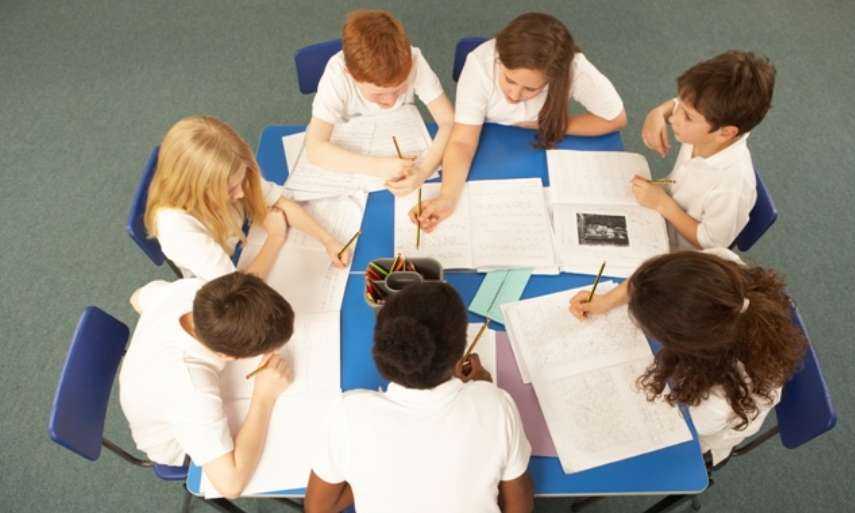
Both problem-based learning and project-based learning are referred to as PBL, and some find it confusing to separate the two pedagogies.
So, what is the difference?
Problem-based learning originated in the 1960s and is a teaching pedagogy that is student-centred. Students learn about a topic through the solving of problems and generally work in groups to solve the problem where, often, there is no one correct answer. In short, ‘it empowers learners to conduct research, integrate theory and practice, and apply knowledge and skills to develop a viable solution to a defined problem,’ (Savery, 2006).
Project-based learning has its origins back in the work of John Dewey and William Kilpatrick and dates back to 1918 when the term was first used ( Edutopia , 2014). Project-based learning is an instructional approach where students learn by investigating a complex question, problem or challenge. It promotes active learning, engages students, and allows for higher order thinking (Savery, 2006). Students explore real-world problems and find answers through the completion of a project. Students also have some control over the project they will be working on, how the project will finish, as well as the end product.
The differences
The difference between problem-based learning and project-based learning is that students who complete problem-based learning often share the outcomes and jointly set the learning goals and outcomes with the teacher. On the other hand, project-based learning is an approach where the goals are set. It is also quite structured in the way that the teaching occurs.
Project-based learning is often multidisciplinary and longer, whereas problem based learning is more likely to be a single subject and shorter. Generally, project-based learning follows general steps while problem-based learning provides specific steps. Importantly, project-based learning often involves authentic tasks that solve real-world problems while problem-based learning uses scenarios and cases that are perhaps less related to real life (Larmer, 2014).
In conclusion, it is probably the importance of conducting active learning with students that is worthy and not the actual name of the task. Both problem-based and project-based learning have their place in today’s classroom and can promote 21st Century learning.
Larmer, J. (2014). Project-based learning vs. problem-based learning vs. X-BL. Retrieved from http://www.edutopia.org/blog/pbl-vs-pbl-vs-xbl-john-larmer
Savery, J. R. (2006). Overview of problem-based learning: Definitions and distinctions. Interdisciplinary Journal of Problem-based Learning, 1 (1). Retrieved from http://dx.doi.org/10.7771/1541-5015.1002
Further information also available at:
Leggett, A. (2014). Active learning pedagogies: Problem-based learning. Retrieved from http://www.uq.edu.au/tediteach/flipped-classroom/problem-bl.html
Have you used project-based learning or problem-based learning in your classroom?
What activities did you use to engage the students?
Was there any evidence to suggest that students were more engaged?
Related articles

Project Based Learning (PBL) Explained In-Depth
- May 28, 2024

Today’s real-world problems are different. So much that, to better prepare learners, traditional methods of teaching are being continuously re-evaluated and enhanced.
Among the most innovative and effective approaches is project-based learning (PBL). A dynamic classroom approach that not only engages students. But also fosters critical thinking, collaboration and practical application.
But what exactly is it? And why is it gaining such traction in both academic and professional settings?
In this blog, we’ll delve into its core principles, key characteristics, limitations and more. We’ll also list down the 5 essential tools to elevate your project based learning strategy. So let’s dive-in!
What is meant by Project Based Learning?

Commonly abbreviated as PBL, it’s an instructional methodology. One that encourages learners to learn and apply their knowledge and skills. Especially through engaging projects set around real-world challenges and problems.
In this model, learners work on a project over an extended period. This can range from a week to an entire semester. This approach promotes deep understanding by integrating multiple subjects and skills.
Also read about the difference between learning and training .
14 Benefits of Project Based Learning
It is an important strategy for several compelling reasons that address both educational and practical skills development.
Mainly because it transforms the traditional teacher-led instruction into a more interactive and engaging learning experience. Thereby fostering a deeper understanding of the subject matter.
Some of it’s numerous benefits are listed in the table below:
| 1.Enhanced Learner Engagement | 2.Deeper Understanding | 3.Development of Critical | 4.Improved Collaboration |
| 5.Real-World Preparation | 6.Increased Autonomy and Responsibility | 7. | 8.Enhanced Reflection and Metacognition |
| 9.Integration of Knowledge and Skills | 10.Public Presentation Skills | 11.Feedback and Revision | 12.Increased Motivation to Learn |
| 13.Enhanced Problem-Solving Abilities | 14.Community Connections | ||
11 Core Elements of Project Based Learning
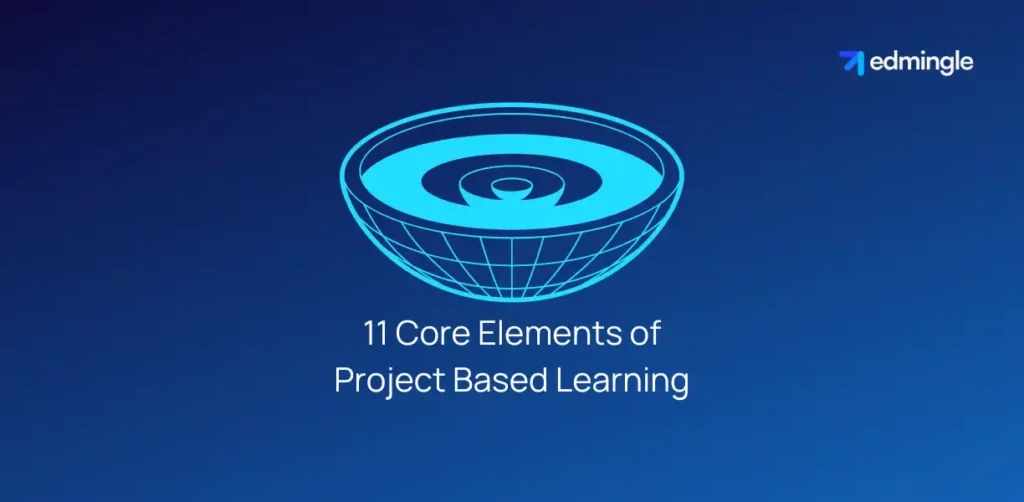
Project-based learning is built around several core elements that distinguish it from traditional teaching methods. These ensure that it is effective in engaging students and promoting deep learning.
1.Challenging Problem or Question
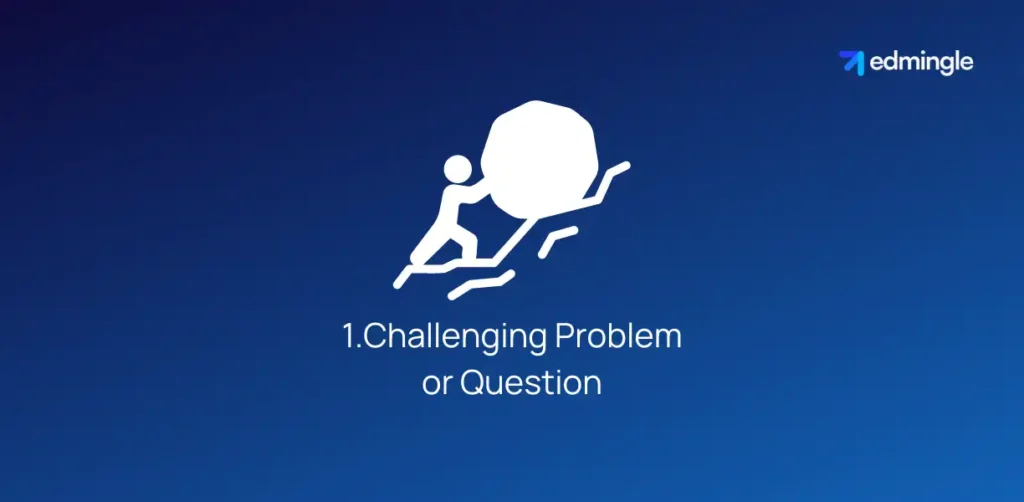
It all begins with a challenging problem or question that is relevant, meaningful and engaging to students. This driving question guides the project’s direction and scope.
2.Sustained Inquiry and Investigation
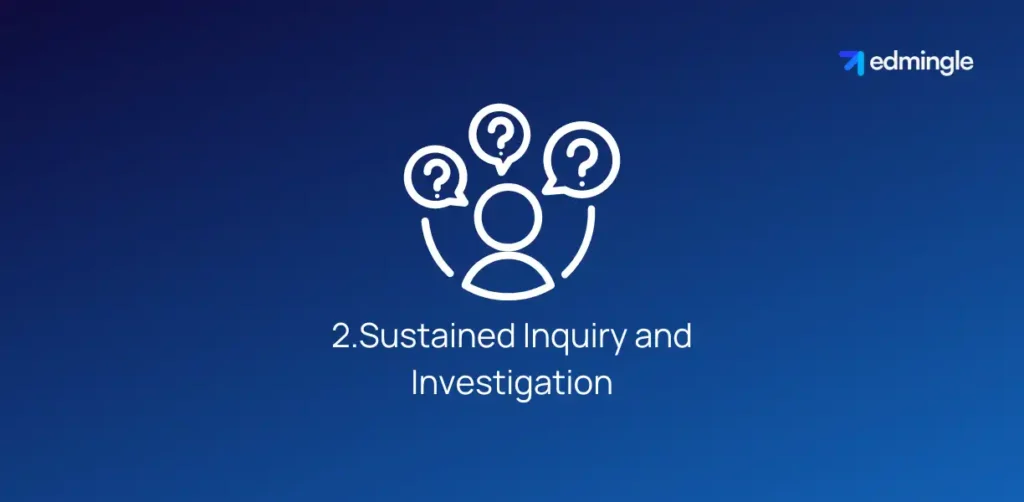
Students engage in a rigorous, extended process of asking questions, finding resources and applying information. This involves in-depth exploration and continuous questioning. To develop a deeper understanding of the subject.
3.Real-World Relevance

Since the project has real-world relevance and application. It connects learning to students’ lives, interests and future careers. Thus, making the work meaningful and motivating.
Also read about the key techniques of enhancing learner motivation to learn more.
4.Student-Centric

In this model, learners have the opportunity to make decisions about the project. This includes how they work, what resources they use and how they present their findings. This autonomy increases engagement and ownership of the learning process.
5.Reflection and Iteration
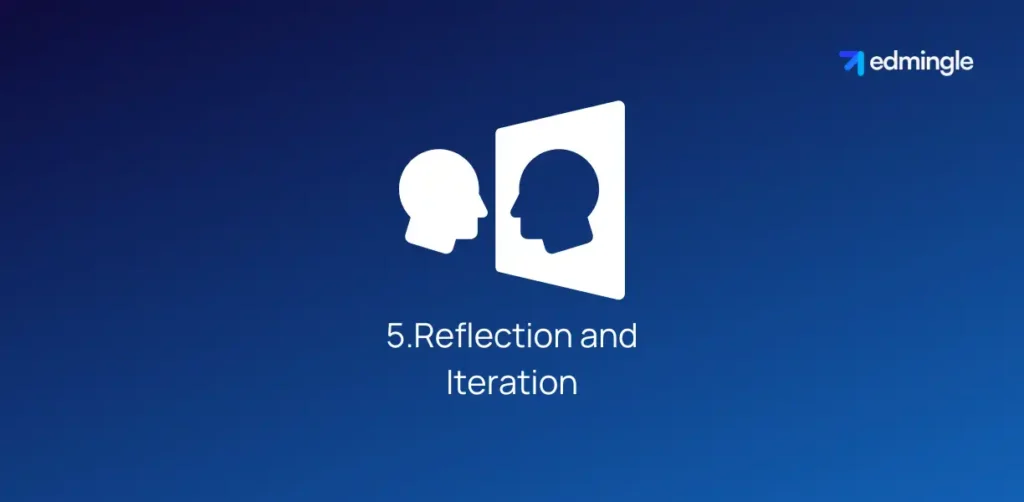
Throughout the project, students and teachers reflect on what & how they are learning and the effectiveness of their strategies. Reflection helps students connect the dots and assess their progress.
6.Critique and Revision

Students give and receive feedback to improve their work. This iterative process helps them develop higher-quality solutions along with a deeper understanding.
Explore more about the power of feedback in e-learning .
7.Public Product

The project culminates in a final product that is shared with an audience beyond the classroom. This could be a presentation, exhibition, report or other artifact. Sharing their work publicly adds purpose and accountability for the learners.
8.Interdisciplinary Approach
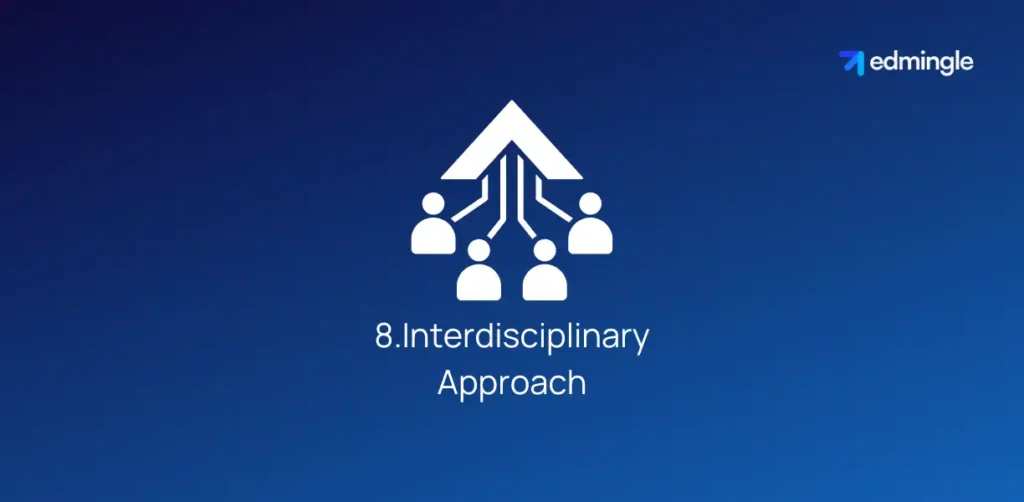
PBL often integrates multiple subject areas. Thereby allowing students to make connections across different disciplines. This approach promotes a more holistic understanding of the content.
9.Collaboration and Teamwork
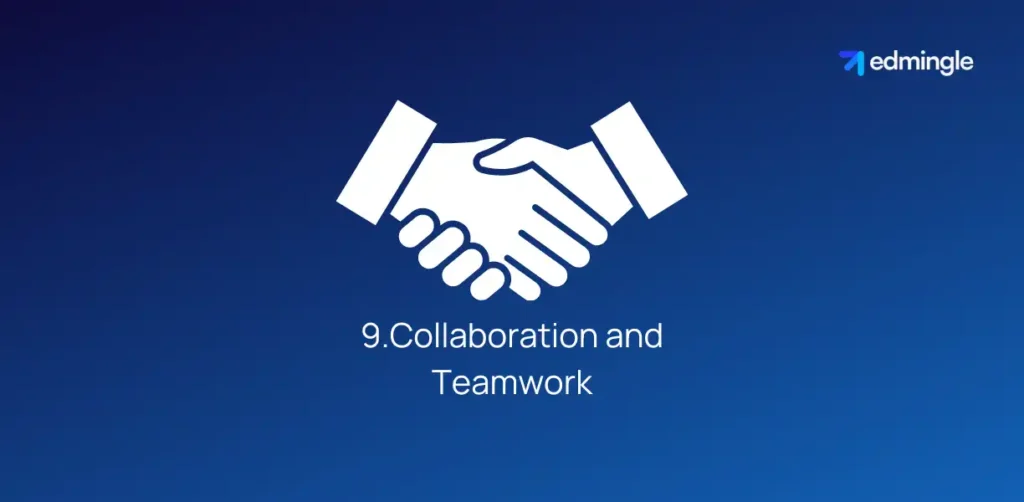
PBL emphasizes collaboration, with students working in teams to complete their projects. This helps develop communication skills, cooperation and conflict-resolution skills.
Also read about social learning in LMS platforms .
10.Teacher as Facilitator

In PBL, teachers act as facilitators or guides rather than traditional instructors. They provide support, resources and guidance to help students navigate challenges & stay on track.
Check our article on the types of teaching styles .
11.Assessment for Learning

Assessments in this model are ongoing and multifaceted. Ranging from self-assessment, peer assessment and teacher assessment. This comprehensive approach helps monitor progress and provides feedback throughout the project.
In short, these core elements ensure that projects are engaging and aligned with real-world practices.
Difference Between Project Based Learning and Problem Based Learning
Project-based and problem-based learning are both student-centered instructional approaches. Yet they differ in some key ways.
| Involves extensive, multi-faceted projects that span a longer duration. Such as several weeks or a semester. Projects encompass various subjects and essential skills. Often integrating multiple disciplines. | Centers on solving a specific problem, usually within a shorter time frame. Such as a few class periods or weeks. Focuses more narrowly on a single subject or discipline. | |
| Results in a tangible end product or presentation. Such as a report, model or digital artifact. The end product is shared with an audience beyond the classroom. Providing real-world relevance. | The goal is to find a solution to a clearly defined problem. Rather than creating a comprehensive project. The solution may be presented in various formats. Such as a written report or oral presentation. | |
| Driven by a broad, open-ended question or challenge that guides the entire project. Students have more freedom in how they approach and solve the project. | Begins with a specific, well-defined problem that lacks a straightforward solution. Students engage in inquiry and research to solve the problem. | |
| Often involves collaborative work in groups. Emphasizing teamwork and shared responsibilities. | Can involve individual students or small group work. But the emphasis is on the process of problem-solving. | |
| Building a model of a sustainable city. Creating a documentary on local history. Developing a business plan. | Diagnosing a patient case in medical school. Determining the best materials for a bridge. Devising a marketing strategy for a new product. |
While both emphasize active learning, critical thinking and student engagement. The former focuses on long-term projects that integrate multiple disciplines. Whereas the latter centers on solving specific problems with a narrower focus and shorter duration.
Also read about the types of learning styles .
Limitations of Project Based Learning
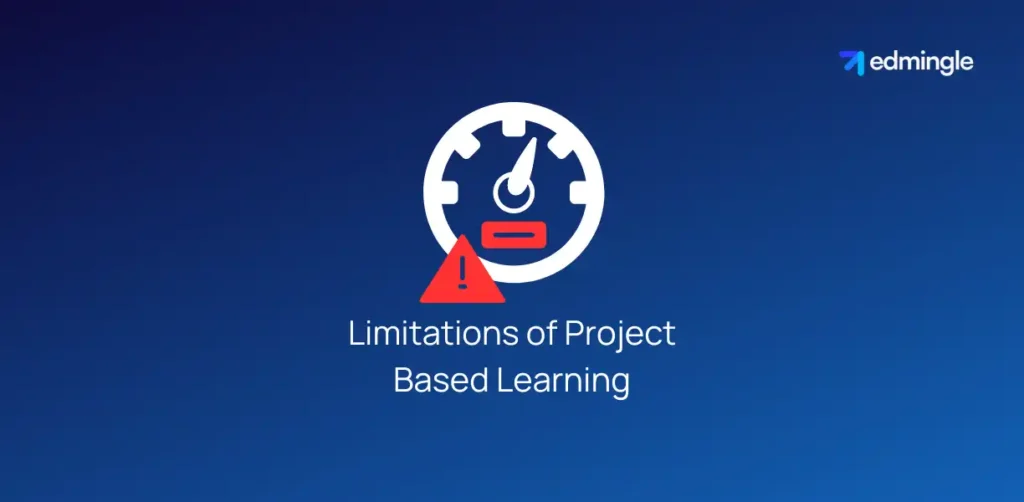
Now that we have our basics cleared out and know its numerous benefits. Let’s have a look at certain points to consider before moving forward with the implementation process.
1. Time-Consuming : It requires significant time for planning, execution and assessment. This can be challenging within the constraints of a typical school schedule.
2. Resource-Intensive : Effective PBL often demands substantial resources. Including materials, technology and access to experts, which may not be readily available in all educational settings.
3. Teacher Training and Expertise : Implementing this model effectively requires teachers to have specific 21st century skills and training. Many educators may need professional development to successfully facilitate it’s delivery.
4. Assessment Challenges : Assessing PBL can be complex due to its multifaceted nature. Traditional testing methods may not adequately capture a students’ learning and progress.
5. Variable Student Participation : Not all students may engage equally. Differences in motivation, work ethic and collaboration skills can lead to uneven participation and learning outcomes.
6. Group Dynamics Issues : Group work can lead to conflicts & unequal participation. Further developing challenges in managing diverse skill levels and personalities.
7. Dependence on Student Initiative : PBL relies heavily on student initiative and self-directed learning. This can be problematic for students who struggle with independence and time management.
8. Integration with Traditional Methods : Balancing PBL with traditional teaching methods and finding the right mix can be challenging for educators.
9. Inconsistent Outcomes : It’s effectiveness can vary widely depending on the quality of project design, teacher facilitation and learner engagement.
While it offers many advantages, it also presents certain challenges. Addressing these requires careful planning, support and ongoing professional development for educators.
How to Implement PBL?
The implementation involves several key steps to ensure it is effective and engaging for students. Here’s a brief guide.
By following these steps, you as an educator can create engaging and effective PBL experiences. Such that it promotes deep learning and skill development.
5 Essential Tools to Deliver Project Based Learning Programs
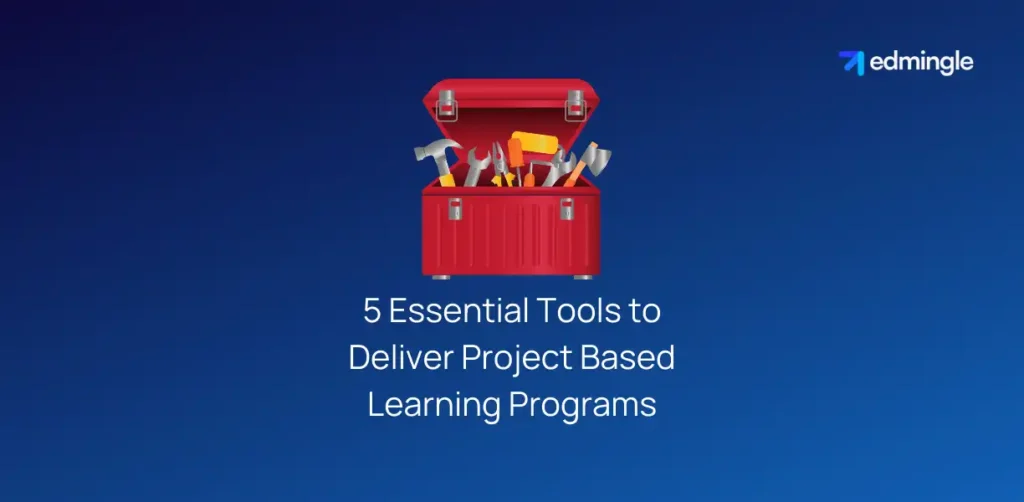
Efficient course delivery requires effective tools. In this section, we list down the 5 essential digital tools for delivering project based learning programs seamlessly.
1.Learning Management Systems (LMS)

Example : Edmingle , Canvas or Moodle .
Description : LMS platforms help manage, track and deliver educational content. They facilitate communication, collaboration and organization of resources. Thus, making project management and the entire process smoother.
Also read about LMS for Training Management & Delivery.
2.Collaboration Tools

Example : Microsoft Teams, Slack or Trello.
Description : These enhance teamwork by allowing students to communicate and share files. While managing tasks in real time, regardless of their location.
3.Interactive Learning Platforms
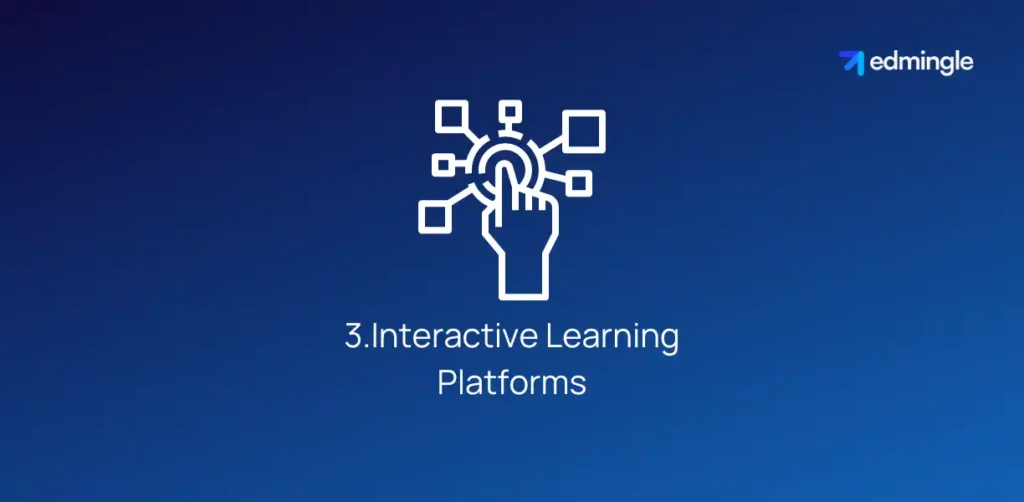
Example : Kahoot!, Nearpod or Padlet.
Description : These provide interactive and engaging ways to conduct formative assessments & gather feedback. Thereby fostering participation and making the learning process more dynamic.
4.Project Management Software
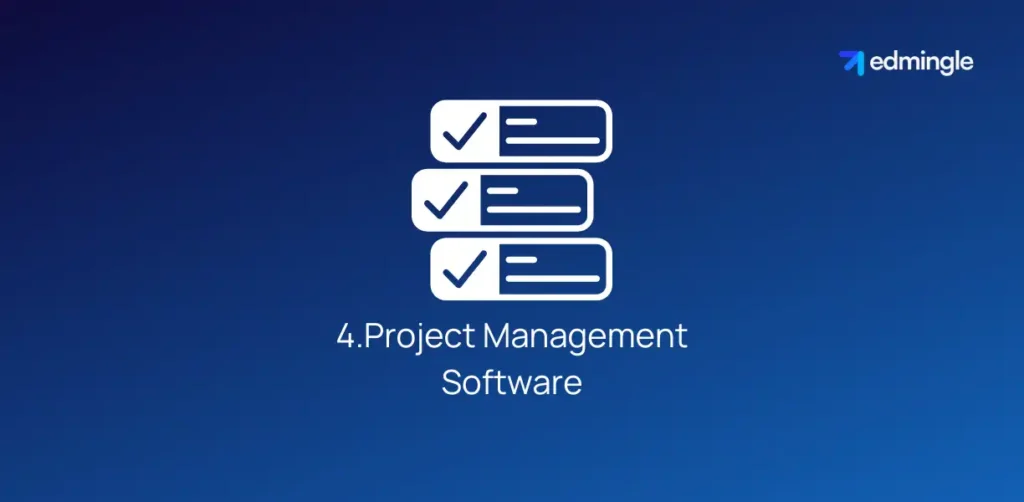
Example : Asana, Monday.com or Basecamp.
Description : These help students plan, execute and track their projects effectively. Ensuring that all team members stay on schedule and meet their deadlines.
5.Digital Portfolios

Example : Seesaw, Mahara or Google Sites.
Description : These allow students to document and showcase their work, reflections and learning progress over time.
With these tools by your side, enhancing the effectiveness and engagement of PBL becomes easier.
Project-based learning represents a transformative approach to education. Majorly by emphasizing real-world application, relevance and deep inquiry-based learning.
By engaging students in meaningful projects, it not only enhances their understanding of academic content. But also fosters critical thinking, collaboration, creativity and resilience.
The journey of implementing it may present challenges. But the rewards of seeing students thrive and develop a genuine passion for learning are well worth the effort.
With the right tools and strategies, PBL can be successfully integrated into various educational settings. From elementary schools to professional training programs.
This approach holds great promise for the future of education . As it bridges the gap between academic knowledge and practical application.
FAQs on Project Based Instruction
1.how can pbl be adapted for virtual or hybrid learning environments.
It can be adapted for hybrid learning environment by utilizing online collaboration, project management and video conferencing tools. – Read more about hybrid learning .
2.What strategies can teachers use to ensure equitable participation among all students in PBL?
By assigning specific roles and responsibilities within real-world projects and using regular check-ins. Alongside peer feedback & evaluations to monitor contributions.
3.How can PBL be assessed effectively to ensure it meets educational standards?
Clear criteria aligned with educational standards should be established from the outset. Teachers can also assess a students’ collaboration, problem-solving skills and critical thinking.
4.Can PBL be used with students of all ages and abilities?
Yes, PBL can be adapted for students of all ages and abilities.
5.How can teachers balance PBL with other instructional methods?
By using a blended learning approach, they can rotate between various teaching styles to keep learners engaged. Direct instruction can be used to introduce key concepts and skills. While PBL can provide opportunities for application and deeper learning. – Explore blended learning .
Nikhil Dutt
Nikhil, a seasoned writer, excels in content ranging from long-form content, ad copies, UX microcopies & scripts. With an in-depth understanding of social media algorithms, he's driven notable growth across platforms. Proficient in SEO & SMO, he champions holistic content creation with a mission to elevate businesses through powerful storytelling. Although an IT graduate, his writing passion defines him, making him a diverse professional. Outside work, Nikhil enjoys reading, journaling, and exploring new places. Volunteering as a Life & Relationship Coach, he's committed to helping individuals foster more joyful lives and relationships.
Remote Training Software (LMS): A Comprehensive Guide
Lms full form explained, leave a reply cancel reply.
Your email address will not be published. Required fields are marked *
Save my name, email, and website in this browser for the next time I comment.
Edmingle transcends the limitations of traditional learning management systems with its AI-powered analytics-focused LMS platform. An all-in-one SaaS training management platform for delivering training with impact.
Recent Posts

Utilizing Analytics to Detect and Resolve Bottlenecks in Learning Progress

How to Improve Learner Experience in Online Training Programs with Edmingle

The Role of Real-Time Analytics in Live Training Programs with Edmingle

Insightful Learner Analytics with Edmingle: The Future of Training

Boost Learner Engagement with AI-Driven Sentiment Analysis on Edmingle


Delve Institute of Learning Research
From Theory to Practice: Exploring the Benefits of Project-Based Learning

Welcome to the fascinating world of project-based learning! In this article, we will delve into the benefits of this innovative educational approach and explore how theory can be effectively put into practice. Project-based learning, also known as PBL, is gaining attention as a student-centered teaching method that engages learners through hands-on projects.
In This Article…
- 8 Benefits of Project-Based Learning
- Research In Support of PBL
- 5 Keys to Successful PBL
- Examples in Different Grade-Levels
- Steps to Implementing Project-Based Learning
- Challenges of Using PBL
- Assessing and Evaluating
- PBL Resources and Tools
By immersing students in real-world challenges, PBL encourages critical thinking, problem-solving, collaboration, and creativity.
Throughout this article, we will uncover real success stories of schools and educators who have embraced project-based learning and witnessed remarkable transformations in student achievement and engagement. Are you ready to take a deep dive into the world of project-based learning? Let’s embark on this exciting journey together!
The Benefits of Project-Based Learning
Project-based learning (PBL) is a teaching method in which students learn by working on a project that has a real-world application. PBL is based on the idea that students are more motivated to learn when they are actively engaged in the learning process.
So, what are the specific benefits of project-based learning? Firstly, it enhances student motivation by allowing them to take ownership of their learning and explore topics that interest them. Additionally, PBL nurtures essential skills such as communication and teamwork that are highly valued in today’s professional world. It also promotes deep understanding of subject matter as students engage in meaningful tasks that require application of knowledge.
There are many benefits to PBL, including:
Increased engagement: PBL is a student-centered approach to learning, which means that students are actively involved in the learning process. This leads to increased engagement and motivation.
Deeper learning: PBL allows students to explore topics in more depth than they would in a traditional classroom setting. This leads to deeper learning and understanding of the material.
Development of 21st-century skills: PBL helps students develop the 21st-century skills that they need to be successful in college and the workforce, such as critical thinking, problem-solving, collaboration, and communication.
Real-world application: PBL projects are often based on real-world problems, which helps students see the relevance of what they are learning. This can lead to increased motivation and engagement.
Creativity and innovation: PBL encourages students to be creative and innovative in their thinking. This is important for solving real-world problems.
Self-directed learning: PBL gives students the opportunity to learn independently and at their own pace. This helps them develop self-directed learning skills, which are essential for lifelong learning.
Collaboration: PBL projects often require students to collaborate with each other. This helps them develop teamwork and communication skills.
Reflection: PBL projects often involve reflection, which helps students learn from their experiences.
PBL is not without its challenges, however. It can be time-consuming to plan and implement PBL projects, and it can be difficult to assess student learning. However, the benefits of PBL outweigh the challenges, and it is a valuable teaching method that can help students learn in a meaningful and engaging way.
Research Supporting Project-Based Learning
Project-based learning (PBL) is a pedagogical approach that engages students in authentic, real-world problems and challenges them to collaborate, communicate, and create solutions. Some examples of research supporting PBL are:
- Boss, S., & Krauss, J. (2018). Reinventing project-based learning: Your field guide to real-world projects in the digital age. International Society for Technology in Education.
- Hattie, J., Fisher, D., & Frey, N. (2017). Visible learning for mathematics: What works best to optimize student learning. Corwin Press.
- Larmer, J., Mergendoller, J., & Boss, S. (2015). Setting the standard for project-based learning: A proven approach to rigorous classroom instruction. ASCD.
Key Elements of Successful Project-Based Learning
The key elements of successful project-based learning (PBL) include:
Challenging problem or question: The project must be based on a meaningful problem to be solved, question to be answered, or challenge to be addressed. The problem or question should be relevant to the students’ interests and abilities, and it should be open-ended enough to allow for a variety of solutions.
Sustained inquiry: The project should allow students to engage in sustained inquiry, which means that they should have the opportunity to explore the problem or question in depth. This may involve conducting research, collecting data, and analyzing information.
Authenticity: The project should be authentic, which means that it should have a real-world connection. This could involve working with a community partner, creating a product that can be used by others, or solving a problem that is relevant to the students’ lives.
Student voice and choice: Students should have a voice in the project, which means that they should be able to make decisions about the problem or question, the research they conduct, and the way they present their findings. This helps to increase student engagement and motivation.
Reflection: Students should have opportunities to reflect on their learning throughout the project. This could involve keeping a journal, writing a reflection paper, or presenting their findings to an audience. Reflection helps students to solidify their learning and make connections between the project and their own lives.
These are just some of the key elements of successful project-based learning. It is important to note that not all projects will include all of these elements. The specific elements that are included will depend on the nature of the project and the needs of the students.
Examples of Project-Based Learning in Different Educational Settings
Here are some examples of project-based learning in a 5th-grade Math classroom and a 10th-grade Literature class.
5th Grade Math: Design a new playground
Students could work together to design a new playground for their school or community. They would need to consider factors such as the age range of the children who would be using the playground, the space available, and the budget. They would also need to use their math skills to calculate the dimensions of the playground, the amount of materials needed, and the cost of the project.
5th Grade Math: Solve a Local Problem
Students could work together to solve a local problem that involves math. For example, they could research the number of homeless people in their community and develop a plan to help them. Or, they could research the amount of trash that is generated in their community and develop a plan to reduce it.
10-Grade Literature Class: Create a Podcast
Students could create a podcast about a novel they are reading. This would involve interviewing characters from the novel, discussing the themes of the novel, and creating sound effects. Plus, it would integrate technology skills and audio editing skills.
8 Steps to implement project-based learning in the classroom
Here are the steps to implement project-based learning in the classroom:
- Identify the learning goals: The first step is to identify the learning goals that you want students to achieve through the project. These goals should be specific, measurable, achievable, relevant, and time-bound.
- Choose a project topic: Once you have identified the learning goals, you need to choose a project topic that is relevant to the goals and that students will be interested in. The topic should be open-ended enough to allow for a variety of solutions.
- Create a project brief: The project brief is a document that outlines the project goals, the project topic, the timeline, and the assessment criteria. The project brief should be shared with students so that they know what is expected of them.
- Form project teams: If the project is large or complex, you may want to form project teams. This will allow students to collaborate and share ideas.
- Provide resources: Students will need access to resources, such as books, articles, websites, and experts, in order to complete the project. You should provide students with these resources or help them find them.
- Guide students: As students work on the project, you should provide them with guidance and support. This may involve answering questions, providing feedback, and helping them solve problems.
- Allow students to self-assess: Students should be given the opportunity to self-assess their work throughout the project. This will help them to identify their strengths and weaknesses and to make necessary adjustments.
- Evaluate student learning: At the end of the project, you should evaluate student learning. This can be done through a variety of methods, such as presentations, portfolios, or essays.
These are just the basic steps to implement project-based learning in the classroom. There are many other factors to consider, such as the age and ability level of the students, the availability of resources, and the school culture. However, following these steps will help you to get started with project-based learning.
Challenges and Solutions in Project-Based Learning
There are many challenges and solutions to PBL, and it is important for teachers to be aware of both in order to implement PBL effectively.
Some of the challenges of PBL include:
- Time commitment: PBL can be a time-consuming approach to teaching, as it requires students to spend time researching, planning, and completing the project.
- Assessment: It can be difficult to assess student learning in PBL, as it is not always easy to measure the skills and knowledge that students have gained through the project.
- Student motivation: Some students may not be motivated to work on a project, especially if they are not interested in the topic or if they do not see the relevance of the project to their lives.
- Teacher support: PBL requires teachers to provide a lot of support to students, as they may need help with research, planning, and problem-solving.
- Collaboration: PBL requires students to collaborate with each other, which can be challenging for some students.
Some of the solutions to the challenges of PBL include:
- Planning: Teachers should carefully plan PBL projects, taking into account the time commitment, assessment, student motivation, and teacher support required.
- Scaffolding: Teachers should provide students with scaffolding, such as templates and rubrics, to help them complete the project.
- Choice: Teachers should give students some choice in the projects that they work on, which can help to increase motivation.
- Real-world connections: Teachers should make sure that the projects have real-world connections, which can help students see the relevance of the project to their lives.
- Collaboration: Teachers should provide opportunities for students to collaborate with each other, and they should teach students how to collaborate effectively.
By being aware of the challenges and solutions to PBL, teachers can implement PBL effectively and help students learn in a meaningful and engaging way.
Assessing and Evaluating Project-Based Learning
Here are 4 ways to assess and evaluate project-based learning:
- Portfolios: Portfolios are a collection of student work that showcases their learning. Portfolios can include projects, essays, presentations, and other artifacts. They can be used to assess student learning over time and to track progress.
- Rubrics: Rubrics are scoring guides that list the criteria for success for a project. Rubrics can be used to assess student work objectively and consistently.
- Self-assessment: Self-assessment is when students reflect on their own learning and identify their strengths and weaknesses. Self-assessment can be used to help students learn from their mistakes and to set goals for improvement.
- Peer assessment: Peer assessment is when students assess each other’s work. Peer assessment can be used to give students feedback on their work and to learn from each other.
In addition to these four methods, there are many other ways to assess and evaluate project-based learning. The best approach will vary depending on the specific project and the learning goals.
Project-based learning resources and tools
There are many project-based learning resources and tools available online and in libraries. Here are a few of the most popular:
PBLWorks: PBLWorks is a website that provides resources and support for project-based learning. It includes a library of project templates, a forum for teachers to share ideas, and a blog with articles about PBL.
Project Zero: Project Zero is a research group at Harvard University that studies the design and implementation of project-based learning. It provides resources and support for teachers, including a toolkit for planning and implementing PBL projects.
Inquiry Hub: Inquiry Hub is a website that provides resources for inquiry-based learning, which is a similar approach to PBL. It includes a library of lesson plans, a forum for teachers to share ideas, and a blog with articles about inquiry-based learning.
Conclusion and Future of Project-Based Learning in Education
Project-based learning (PBL) is a student-centered teaching method in which students learn by working on a project that has a real-world application. PBL is based on the idea that students are more motivated to learn when they are actively engaged in the learning process.
What do you think? Have you used PBL in your classroom? What questions, tips, or ideas can you share?

PBL Collaboration Time, 2 Ways School Leaders Can Help
Discover how school leaders can create time for meaningful PBL collaboration, a key element of successful project-based learning. Learn strategies for scheduling dedicated time, fostering a collaborative culture, and leveraging technology to support PBL implementation.
Continue Reading >>

Unlocking the Power of Play: How Gamification in Education Sparks Brain Mechanisms
Imagine a classroom where students are eagerly solving puzzles, collaborating on challenges, and actively seeking feedback, all while deeply absorbing new information. This isn’t science fiction; it’s the power of gamification in education, a practice that leverages game-based learning principles derived from neuroscience to boost motivation, engagement, and knowledge retention. The Science of Play: Engaging…

From Dull to Dynamic: Brain-Based Learning Activities for High School Success
Are your high school students bored and disengaged in the classroom? Do you struggle to find ways to make learning more exciting and effective? Look no further! In this article, we explore the power of brain-based learning activities to transform your high school classroom from dull to dynamic. Brain-based learning activities are designed to align…

Boosting Learning Potential: How Brain-Based Learning Ignites Cognitive Development
In an era where traditional teaching methods no longer cut it, educators are constantly searching for innovative ways to enhance learning potential. That’s where brain-based learning steps in, igniting cognitive development like never before. By understanding how the brain organizes and retains information, educators can tailor their teaching techniques to maximize student engagement and retention.…

Back to School Ice Breakers
The start of a new school year can be both exciting and stressful for students and teachers alike. One way to ease the transition and create a positive classroom environment is to use some ice breakers. Icebreakers are activities that help people get to know each other, build rapport, and foster collaboration. Here are some…
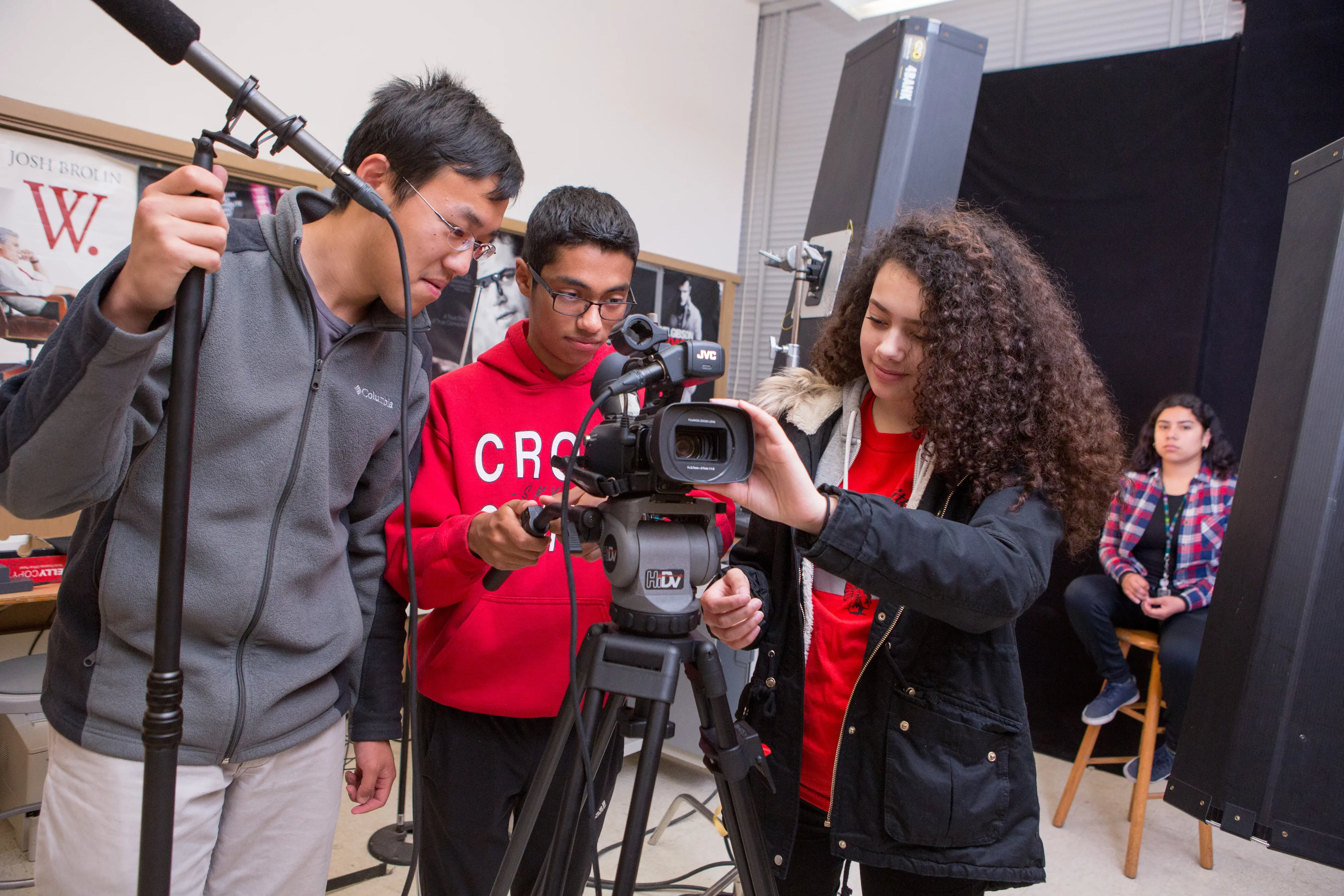
What is PBL?
Project Based Learning (PBL) is a teaching method in which students learn by actively engaging in real-world and personally meaningful projects.
In Project Based Learning, teachers make learning come alive for students.
Students work on a project over an extended period of time – from a week up to a semester – that engages them in solving a real-world problem or answering a complex question. They demonstrate their knowledge and skills by creating a public product or presentation for a real audience.
As a result, students develop deep content knowledge as well as critical thinking, collaboration, creativity, and communication skills. Project Based Learning unleashes a contagious, creative energy among students and teachers.
And in case you were looking for a more formal definition...
Project Based Learning is a teaching method in which students gain knowledge and skills by working for an extended period of time to investigate and respond to an authentic, engaging, and complex question, problem, or challenge.
Watch Project Based Learning in Action
These 7-10 minute videos show the Gold Standard PBL model in action, capturing the nuts and bolts of a PBL unit from beginning to end.
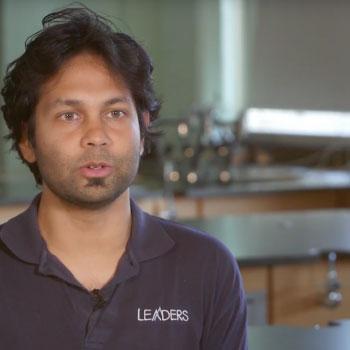
VIDEO: The Water Quality Project
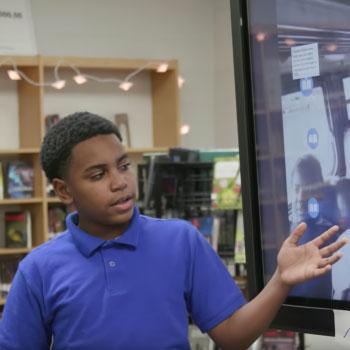
VIDEO: March Through Nashville
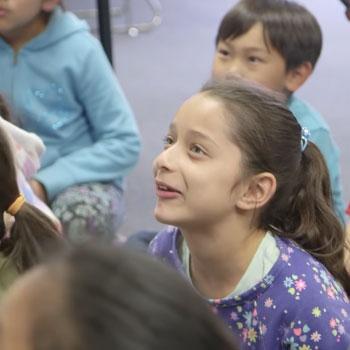
VIDEO: The Tiny House Project
How does pbl differ from “doing a project”.
PBL is becoming widely used in schools and other educational settings, with different varieties being practiced. However, there are key characteristics that differentiate "doing a project" from engaging in rigorous Project Based Learning.
We find it helpful to distinguish a "dessert project" - a short, intellectually-light project served up after the teacher covers the content of a unit in the usual way - from a "main course" project, in which the project is the unit. In Project Based Learning, the project is the vehicle for teaching the important knowledge and skills student need to learn. The project contains and frames curriculum and instruction.
In contrast to dessert projects, PBL requires critical thinking, problem solving, collaboration, and various forms of communication. To answer a driving question and create high-quality work, students need to do much more than remember information. They need to use higher-order thinking skills and learn to work as a team.
Learn more about "dessert" projects vs PBL
The gold standard for high-quality PBL
To help ensure your students are getting the main course and are engaging in quality Project Based Learning, PBLWorks promotes a research-informed model for “Gold Standard PBL.”
The Gold Standard PBL model encompasses two useful guides for educators:
1) Seven Essential Project Design Elements provide a framework for developing high quality projects for your classroom, and
2) Seven Project Based Teaching Practices help teachers, schools, and organizations improve, calibrate, and assess their practice.
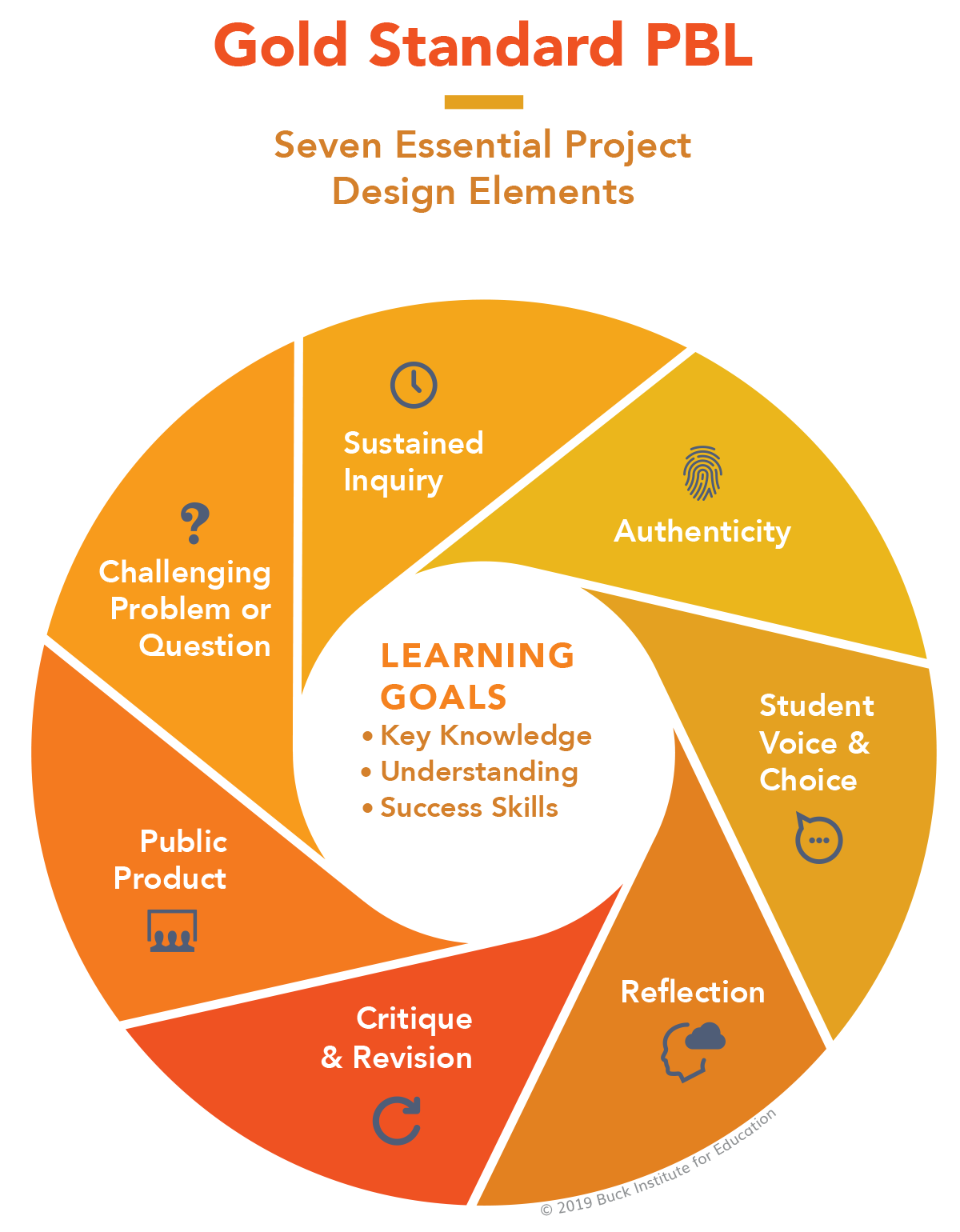
The Gold Standard PBL model aligns with the High Quality PBL Framework . This framework describes what students should be doing, learning, and experiencing in a good project. Learn more at HQPBL.org .
Yes, we provide PBL training for educators! PBLWorks offers a variety of workshops, courses and services for teachers, school and district leaders, and instructional coaches to get started and advance their practice with Project Based Learning. Learn more
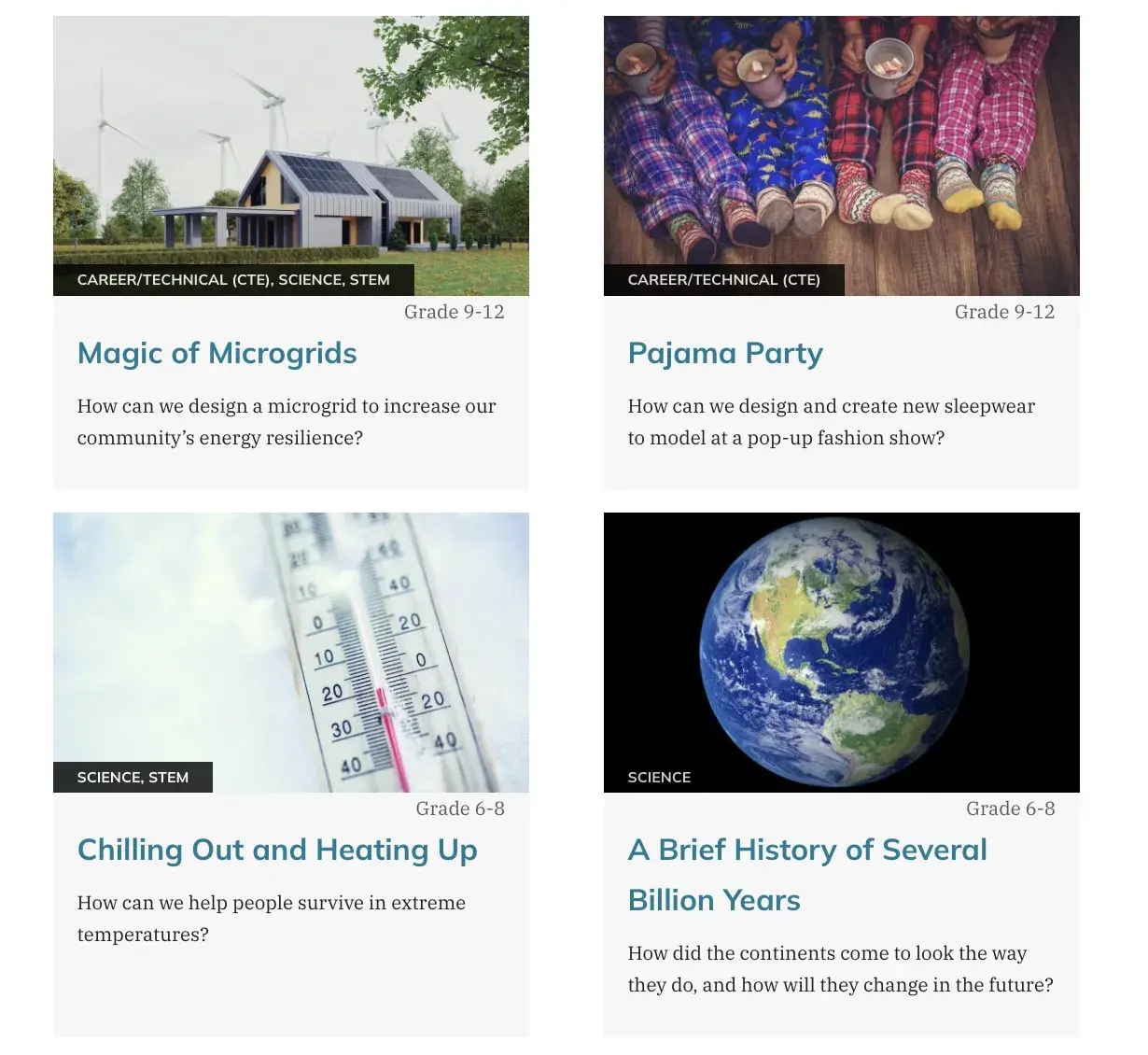
See Sample Projects
Explore our expanding library of project ideas, with over 80 projects that are standards-aligned, and cover a range of grade levels and subject areas.
Don't miss a thing! Get PBL resources, tips and news delivered to your inbox.
Project-Based Learning
This teaching guide explores the different types of project-based learning (PBL), its benefits, and tips for implementation in your classes.
Introduction
Project-based learning (PBL) involves students designing, developing, and constructing hands-on solutions to a problem. The educational value of PBL is that it aims to build students’ creative capacity to work through difficult or ill-structured problems, commonly in small teams. Typically, PBL takes students through the following phases or steps:
- Identifying a problem
- Agreeing on or devising a solution and potential solution path to the problem (i.e., how to achieve the solution)
- Designing and developing a prototype of the solution
- Refining the solution based on feedback from experts, instructors, and/or peers
Depending on the goals of the instructor, the size and scope of the project can vary greatly. Students may complete the four phases listed above over the course of many weeks, or even several times within a single class period.
Because of its focus on creativity and collaboration, PBL is enhanced when students experience opportunities to work across disciplines, employ technologies to make communication and product realization more efficient, or to design solutions to real-world problems posed by outside organizations or corporations. Projects do not need to be highly complex for students to benefit from PBL techniques. Often times, quick and simple projects are enough to provide students with valuable opportunities to make connections across content and practice.
Implementing project-based learning
As a pedagogical approach, PBL entails several key processes:
- Defining problems in terms of given constraints or challenges
- Generating multiple ideas to solve a given problem
- Prototyping — often in rapid iteration — potential solutions to a problem
- Testing the developed solution products or services in a “live” or authentic setting.
Defining the problem
PBL projects should start with students asking questions about a problem. What is the nature of problem they are trying to solve? What assumptions can they make about why the problem exists? Asking such questions will help students frame the problem in an appropriate context. If students are working on a real-world problem, it is important to consider how an end user will benefit from a solution.
Generating ideas
Next, students should be given the opportunity to brainstorm and discuss their ideas for solving the problem. The emphasis here is not to generate necessarily good ideas, but to generate many ideas. As such, brainstorming should encourage students to think wildly, but to stay focused on the problem. Setting guidelines for brainstorming sessions, such as giving everyone a chance to voice an idea, suspending judgement of others’ ideas, and building on the ideas of others will help make brainstorming a productive and generative exercise.
Prototyping solutions
Designing and prototyping a solution are typically the next phase of the PBL process. A prototype might take many forms: a mock-up, a storyboard, a role-play, or even an object made out of readily available materials such as pipe cleaners, popsicle sticks, and rubber bands. The purpose of prototyping is to expand upon the ideas generated during the brainstorming phase, and to quickly convey a how a solution to the problem might look and feel. Prototypes can often expose learners’ assumptions, as well as uncover unforeseen challenges that an end user of the solution might encounter. The focus on creating simple prototypes also means that students can iterate on their designs quickly and easily, incorporate feedback into their designs, and continually hone their problem solutions.
Students may then go about taking their prototypes to the next level of design: testing. Ideally, testing takes place in a “live” setting. Testing allows students to glean how well their products or services work in a real setting. The results of testing can provide students with important feedback on the their solutions, and generate new questions to consider. Did the solution work as planned? If not, what needs to be tweaked? In this way, testing engages students in critical thinking and reflection processes.
Unstructured versus structured projects
Research suggests that students learn more from working on unstructured or ill-structured projects than they do on highly structured ones. Unstructured projects are sometimes referred to as “open ended,” because they have no predictable or prescribed solution. In this way, open ended projects require students to consider assumptions and constraints, as well as to frame the problem they are trying to solve. Unstructured projects thus require students to do their own “structuring” of the problem at hand – a process that has been shown to enhance students’ abilities to transfer learning to other problem solving contexts.
Using Design Thinking in Higher Education (Educause)
Design Thinking and Innovation (GSM SI 839)
Project Based Learning through a Maker’s Lens (Edutopia)
You may also be interested in:
Case-based learning, game-based learning & gamification, assessment for experiential learning, creativity/innovation hub guide, designing experiential learning projects, partnerships in experiential learning: faq, experiential learning resources for faculty: introduction, reflection for experiential learning.
Project and Problem-Based Teaching and Learning
- First Online: 09 September 2020
Cite this chapter

- Michael R. L. Odell 3 &
- Jaclyn L. Pedersen 4
Part of the book series: Springer Texts in Education ((SPTE))
20k Accesses
1 Citations
1 Altmetric
In recent years, there has been a movement to align inquiry-based pedagogies with 21st century skills and the workplace. Since the 1950’s, calls for education reform have often been in response to historical events or the release of reports such as A Nation at Risk or more recently Rising Above the Gathering Storm. Sputnik was launched in 1957 causing US policymakers to rethink science education. This led to a number of innovative curriculum reform models designed in the 1960’s and revised during the 1970’s including Science- A Process Approach (SAPA), the Science Curriculum Improvement Study (SCIS) and the Elementary Science Study (ESS). These inquiry-based curricula served as a model for future development. Since the 1980’s and the development of the National Science Education Standard ( 1996 . National science education standards . Washington, DC: The National Academies Press. https://doi.org/10.17226/4962 ) and more recently the replacement with Next Generation Science Standards (2013) there has been significant support for learning STEM through inquiry. Although there are a number of inquiry-based pedagogies, this chapter addresses project-based learning (PBL) and problem-based learning (PrBL) as primary pedagogies for many schools seeking to engage students in STEM in an authentic environment. In the STEM context, PBL is well suited as a primary pedagogy for STEM learning. PrBL is also widely utilized in STEM education and may have advantages over PBL in the mathematics classroom setting. There are relatively few schools engaged in PBL/PrBLwhen compared to schools using traditional instructional approaches. PBL/PrBL may be an effective strategy to reform schools to meet the 21st century learning needs of the students they serve. What are the differences between PBL/PrBL? What are the barriers to implementing both as a primary classroom pedagogy? What teacher supports facilitate effective PBL/PrBL in the classroom? What can teacher preparation programs do to prepare new teachers to use PBL/PrBL? This chapter examines these two related inquiry-based pedagogies in the context of 21st century learning and developing schools, and provides recommendations for supports that foster them.
This is a preview of subscription content, log in via an institution to check access.
Access this chapter
Subscribe and save.
- Get 10 units per month
- Download Article/Chapter or eBook
- 1 Unit = 1 Article or 1 Chapter
- Cancel anytime
- Available as PDF
- Read on any device
- Instant download
- Own it forever
- Available as EPUB and PDF
- Compact, lightweight edition
- Dispatched in 3 to 5 business days
- Free shipping worldwide - see info
Tax calculation will be finalised at checkout
Purchases are for personal use only
Institutional subscriptions
Similar content being viewed by others
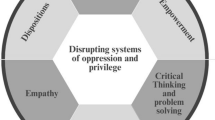
Exploring the Development of Preservice Teachers’ Visions of Equity through Science and Mathematics Integration
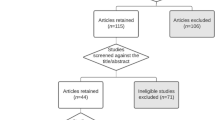
What do integrated STEM projects look like in middle school and high school classrooms? A systematic literature review of empirical studies of iSTEM projects

Potential and Challenges in Integrating Science and Mathematics in the Classroom Through Real-World Problems: A Case of Implementing an Interdisciplinary Approach to STEM
Boss, S., Johanson, C., Arnold, S. D., Parker, W. C., Nguyen, D., Mosborg, S., Nolen, S., Valencia, S., Vye, N., & Bransford, J. (2011). The quest for deeper learning and engagement in advanced high school courses. The Foundation Review , 3 (3), Article 3.
Google Scholar
Boud, D., & Feletti, G. (1997). The challenge of problem-based learning (2nd ed.). London: Kogan Page.
Bransford, J., Brown, A. L., Cocking, R. R., & National Research Council (US). (1999). How people learn: Brain, mind, experience, and school . Washington, D.C: National Academy Press.
Bybee, R. W., & Fuchs, B. (2006). Preparing the 21st century workforce: A new reform in science and technology education. Journal of Research in Science Teaching, 43 (4), 349–352. Retrieved from http://onlinelibrary.wiley.com/doi/10.1002/tea.20147/epdf .
Condliffe, B., Quint, J., Visher, M. G., Bangser, M. R., Drohojowska, S., Saco, L., & Nelson, E. (2017). Project-based learning a literature review working paper. MDRC. Retrieved from https://s3-us-west-1.amazonaws.com/ler/MDRC+PBL+Literature+Review.pdf .
Dewey, J. (1897). Education today: My pedagogical creed . New York: Putnam.
Dewey, J. (1938): Experience and education. In J. A. Boydston & S. M. Cahn, John Dewey: The later works of John Dewey, 1925–1953: 1938–1939/Experience and Education, Freedom and Culture, Theory of Valuation, and Essays, vol. 13 (pp. 1–62). Carbondale: Southern Illinois University Press.
Hmelo-Silver, C. E. (2004). Problem-based learning: What and how do students learn? Educational Psychology Review , 16 (3), 235–266. Retrieved from https://link.springer.com/article/10.1023/B:EDPR.0000034022.16470.f3 .
Hutchings, B., & O’Rourke, K. (2004). Medical studies to literary studies: Adapting paradigms of problem-based learning process for new disciplines. In M. Savin-Baden & K. Wilkie (Eds.), Challenging research in problem based learning (pp. 174–189). SRHE & OUP: Berkshire, UK.
Morris, C. D., Bransford, J. D., & Franks, J. J. (1977). Levels of processing versus transfer appropriate processing. Journal of Verbal Learning and Verbal Behavior, 16 (5), 519–533.
Article Google Scholar
National of Academy of Sciences, National Academy of Engineering, & Institute of Medicine. (2007). Rising above the gathering storm: Energizing and employing America for a brighter economic future. Washington, DC: The National Academic Press. Retrieved from https://www.nap.edu/catalog/11463/rising-above-the-gathering-storm-energizing-and-employing-america-for .
National Research Council. (2000). Inquiry and the National science education standards. Washington, DC: National Academy Press.
National Research Council. (1996). National science education standards . Washington, DC: The National Academies Press. https://doi.org/10.17226/4962 .
National Research Council. (2012). A framework for K–12 science education: Practices, crosscutting concepts, and core ideas . Washington, DC: National Academies Press.
National Science Teachers Association. (2011). Quality science education and 21st century skills . Retrieved from http://www.nsta.org/about/positions/21stcentury.aspx .
Next Generation Science Storylines & STEM Teaching Tools. (2016). Using phenomena in NGSS-designed lessons and units, (Achieve). Seattle, WA: STEM Teaching Tools, Institute for Science and Math Education, University of Washington.
Partnership for 21st Century Skills. (2015). P21 framework definitions . Retrieved from http://www.p21.org/storage/documents/docs/P21_Framework_Definitions_New_Logo_2015.pdf .
Pérez, M., & Romero, P. (2014). Secondary STEM teacher preparation as a top priority for the university of the future. The Journal of the World Universities Forum, 6 (4), 21–36.
Strobel, J., & van Barneveld, A. (2009). When is PBL more effective? A meta-synthesis of meta-analyses comparing PBL to conventional classrooms. Interdisciplinary Journal of Problem-Based Learning , 3 (1). Retrieved from https://doi.org/10.7771/1541-5015.1046 .
Texas Education Agency. (2018). Texas science, technology, engineering, and mathematics initiative (T-STEM) . Retrieved from https://tea.texas.gov/T-STEM/ .
Texas High School Project. (2010). Texas science technology engineering and mathematics academies design blueprint, rubric, and glossary . Austin, TX: Texas Education Agency.
Trilling, B., & Fadel, C. (2009). 21st century skills learning for life in our times . San Francisco, CA: Wiley.
United States. National Commission on Excellence in Education. Department of Education. (1983). A nation at risk: The imperative for educational reform: A report to the Nation and the Secretary of Education, United States Department of Education. Washington, D.C.:The Commission: [Supt. of Docs., U.S. G.P.O. distributor].
Walker, A., & Leary, H. (2009). A problem based learning meta analysis: Differences across problem types, implementation types, disciplines, and assessment levels. Interdisciplinary Journal of Problem-Based Learning , 3 (1). Retrieved from https://doi.org/10.7771/1541-5015.1061 .
Download references
Author information
Authors and affiliations.
College of Education and Psychology, College of Engineering, University of Texas at Tyler, Tyler, TX, USA
Michael R. L. Odell
College of Education and Psychology, University of Texas at Tyler University Academy, Tyler, TX, USA
Jaclyn L. Pedersen
You can also search for this author in PubMed Google Scholar
Corresponding author
Correspondence to Michael R. L. Odell .
Editor information
Editors and affiliations.
Science Teachers Association of Nigeria, Abuja, Nigeria
University of Texas at Tyler, Tyler, TX, USA
Teresa J. Kennedy
Rights and permissions
Reprints and permissions
Copyright information
© 2020 Springer Nature Switzerland AG
About this chapter
Odell, M.R.L., Pedersen, J.L. (2020). Project and Problem-Based Teaching and Learning. In: Akpan, B., Kennedy, T.J. (eds) Science Education in Theory and Practice. Springer Texts in Education. Springer, Cham. https://doi.org/10.1007/978-3-030-43620-9_23
Download citation
DOI : https://doi.org/10.1007/978-3-030-43620-9_23
Published : 09 September 2020
Publisher Name : Springer, Cham
Print ISBN : 978-3-030-43619-3
Online ISBN : 978-3-030-43620-9
eBook Packages : Education Education (R0)
Share this chapter
Anyone you share the following link with will be able to read this content:
Sorry, a shareable link is not currently available for this article.
Provided by the Springer Nature SharedIt content-sharing initiative
- Publish with us
Policies and ethics
- Find a journal
- Track your research

Project-Based vs. Problem-Based Learning: Which is Right for Your Classroom?
Our Network
Resources and Tools
Introduction to PBL
Project-based learning (PBL) is an inquiry-based and learner-centered instructional approach that immerses students in real-world projects that foster deeper learning and critical thinking skills.
In contrast to traditional instruction and rote memorization, project-based learning encourages learner agency, collaboration, and problem-solving, empowering students to become active participants in their own learning. Students collaborate to solve real world problems that require understanding content knowledge, critical thinking, creativity, and robust communication skills.
New Tech Network (NTN) schools employ a pedagogy of project-based learning and in math, this can result in enhanced student understanding by having learners make real-world connections to math content and skills. However, it can be difficult to do math on a deep level encompassing all the requisite mathematical standards. As a result, NTN strongly promotes primarily problem-based learning (PrBL) in math classrooms, although, at times there may be authentic ways to embed math in a project-based learning unit.
In this article we will highlight New Tech Network’s lens on PrBL, the similarities and differences between project-based learning and problem-based learning, and what both look like when implemented in the classroom.
What is Project-Based Learning (PBL)?
The basic principle of the project-based instruction lies in students actively participating in an authentic challenging problem that enables students to have experiential learning, connection to community members, higher classroom engagement, and a deeper understanding of content. The PBL approach diverges from traditional instruction by encouraging students to learn about and try to solve real world issues, use problem solving skills, communicate ideas, become proficient in technology tools, and make a personal connection to content. These skills prepare students for success in college and career.
To learn more about implementing project-based learning, project design, and project-based learning examples, explore the article: The Comprehensive Guide to Project-Based Learning: Empowering Student Choice through an Effective Teaching Method . For a more in-depth look at the benefits of project-based learning, read How Project-Based Learning is Effective in Education .
What is Problem-Based Learning (PrBL)?
Like project-based learning (PBL), problem-based learning (PrBL) engages students in complex tasks, employs student-centered instruction and small group work, and positions the teacher as a facilitator of learning. In addition, PrBL accurately reflects the types of explorations, discussions, questions, and interactions that are authentic to mathematics as a discipline. PrBL uses formative and performance-based assessments to give feedback and check student progress.
The key differences between project-based learning and PrBL are that PrBL focuses on one or two standards at a time and each problem takes place over a shorter time period (roughly one to four days). In PrBL, students are mainly exploring and discussing mathematical ideas, with an emphasis on the problem solving process and productive struggle, whereas in PBL there is a greater emphasis on creating a culminating product that answers a Driving Question.
Project-Based Learning vs Problem-Based Learning
NTN suggests a secondary math learning environment which utilizes problem-based learning (PrBL) and in elementary math, problems appear alongside projects and, when applicable, within a project-based learning curriculum.
Problem-based learning provides a rich problem solving environment that allows for and necessitates the learning and assessment of the New Tech Network Learning Outcomes of Agency, Written Communication, Oral Communication, Collaboration, and Knowledge and Thinking along with important content standards. There some key differences between project-based learning and problem-based learning, primarily in timing and scope, but far more similarities exist than differences as shown below:
Problem-Based Learning
- Standards: 1-2 Standards
- Time: 1-4 Days
- Main Activity: Inquiry and Discourse
- Emphasis: Problem-solving Process
Similarities
- Engages students in complex tasks
- Student-centered small-group work
- Reflects the work of the discipline
- Teacher as facilitator of learning
- Formative and performance-based assessment
Project-Based Learning
- Standards: 4+ Standards
- Time: 4-6 Weeks
- Main Activity: Applying Learning
- Emphasis: Product
The Differences:
The easiest answer to the PBL vs PrBL question is scope. NTN often supports schools and districts in a project-based learning environment, which can cause a tricky situation in terms of scaling this to a problem or choosing to do a project. Projects are typically designed to learn about a larger cluster of standards that can be taught using a single context, warrant multiple weeks of learning, and culminate in a substantial product as a presentation of learning.
However, a project is often not sufficient to adequately develop the deep understanding required of some math concepts. This is where PrBL plays a key role. PrBL allows a teacher to scale down to focus on just a few standards and to focus on students’ processes as they tackle contextual scenarios over the course of a few problems while still enabling a real world application.
The Similarities:
There are far more similarities between PrBL and PBL than differences. Both project-based learning and problem-based learning include entry events, knows and need to knows, rubrics, etc. However, as the number of standards and duration is scaled down, entry events and rubrics must be scaled down as well. But while perhaps a bit shorter/quicker in a problem rather than project, we must not lose the intent of each similarity. Here are two examples to better illustrate this point.
Keeping the Intent of Entry Events and Knows and Need to Knows in PrBL
An entry event is the student introduction or “hook” to the project or problem. A well-crafted entry event will solicit student needs to be met in order to adequately address the content and skills presented in the project or problem’s plan. For a project, the introduction needs to kick off (and help to sustain) weeks of learning. Examples of entry events might include field trips, interview with community partners, or perhaps a debate.
Moving to PrBL, the purpose of the entry event remains the same, but the scale needs to shift. For a problem you might present students with text, an image, or a video that will prompt students to pose questions. This can be something as simple as the image at right of a restaurant promotion, as long as you can then prompt students what questions they have, and what additional information they need.
You’ll want to document these questions in some way, but note that in a problem the number of questions or “need to knows” will likely be fewer than for a project due to the scope of standards you’re addressing. Gather enough questions to allow students to have direction (know what they are starting to solve) and can begin to struggle in solving the problem.
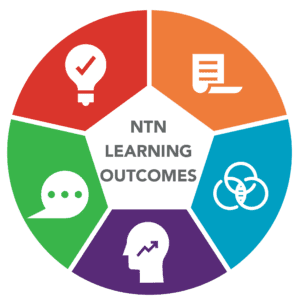
Keeping the Intent of Rubrics in PrBL
As a problem scales down the number of standards you’re addressing, so too should you scale down the number of indicators you’re giving feedback around and assessing.
While the culminating product of a project often serves as a hefty assessment through a hefty rubric, a problem-based approach offers a teacher the opportunity to get really specific about the rubric indicators they are after, sometimes narrowing down to just 1 or 2 for a product. Similarly, PrBL teachers will need to narrow the focus of rubric indicators for the other New Tech Network Learning Outcomes.
For example, for collaboration you may also want to zoom in on just one or two indicators – few enough that you can authentically teach, provide feedback, and assess in the shorter time span of a problem.
New Tech Network's Problem-Based Learning Model
Problem-based learning as we think about it at NTN consists of three phases: Launch, Explore, and Discuss . Launch-Explore-Discuss allows students to engage in inquiry, build their self-regard, and have discourse in small and large groups.
In Launch, students are introduced to the problem in a learner-centered way. Explore is when learners have time to explore solution strategies (correct or incorrect) in small groups, asking questions of each other and you. The problem ends with a Discussion in which multiple strategies are shared by learners and the whole class makes connections between different strategies, puts formal vocabulary to their ideas, and makes generalizations to connect to math standards. Each phase is discussed more in depth below.

A problem-based lesson would begin with a launch, where the problem is introduced in a learner-centered way to support learners in making sense of the problem and what is being asked as well as building excitement and interest. In order for learners to engage meaningfully in a cognitively challenging task, they need time to process and make sense of the problem.
A key aspect of the launch is not to “get learners started” by showing the first step or an example problem. The goal and the teacher’s role is to spark inquiry, maintain productive struggle, and allow learners to pursue multiple solution strategies.
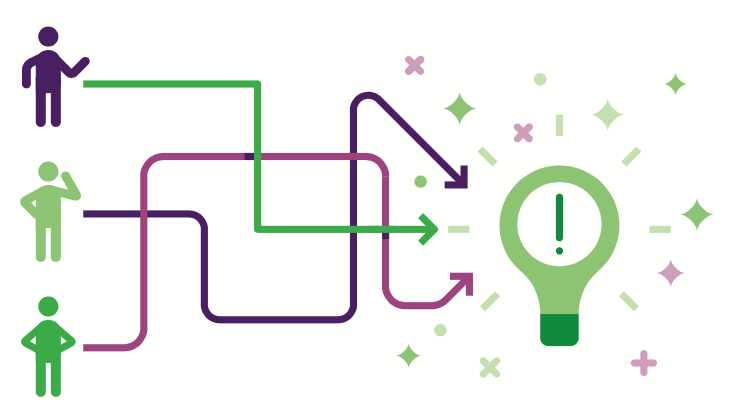
The next phase is “explore”, where learners have time to try potential solution strategies that may or may not be correct in pairs or small groups, asking questions of each other and of the teacher. This phase serves to create a math classroom centered on student thinking and ideas, by giving students time to come up with their own solution strategies.
Facilitators must lean into their role as facilitators vs “rescuers”, moving away from the idea of saving students by telling them what to do. It’s okay if some of them are wrong, as there will be time to revise during the discussion section. This is also a time for learners to practice their collaboration and discourse in a low stakes setting.

Finally, all students engage in a whole-class discussion. During this time, learners share strategies, make connections, and generalize a rule. This is a time to share academic vocabulary, formal notation, and make explicit connections to prior topics and standards. After having time to come up with strategies in “explore”, students can compare multiple strategies and collectively decide what works and what doesn’t.
By drawing connections between strategies, learners can strengthen and deepen their understanding of the content. Teachers support learners during discussion by making connections and giving formal language and notation to learner generated ideas.
These strategies are not always easy to implement. Students need to be taught how to problem solve independently, how to work collaboratively in a group, and how to understand, evaluate, and question others’ ideas. These skills are supported by cultivating and sustaining a supportive and inclusive classroom culture. In addition to a strong classroom culture, facilitators must also consider important shifts in math instruction.
Key shifts in Math encouraged in a PrBL classroom
Math classrooms enacting these shifts provide a rich problem-solving environment that allow for and necessitate the learning and assessment of the New Tech Network Learning Outcomes. The Key Shifts in math facilitation are meant to guide the ongoing, hard work of all New Tech Network (NTN) math facilitators, new or veteran. We don’t pretend that they are easy; in fact, they often run directly against how we were taught to teach or even how we were taught ourselves and take years to fully implement.
Longtime methods of presenting and practicing content, and the associated frustration of students and teachers alike, are familiar to many of us. With these shifts as a lens, we can all work to reduce math anxiety, restore student engagement, and connect to the beauty of the subject we teach.

NTN Secondary Math Key Shifts
Successfully Supporting All Students
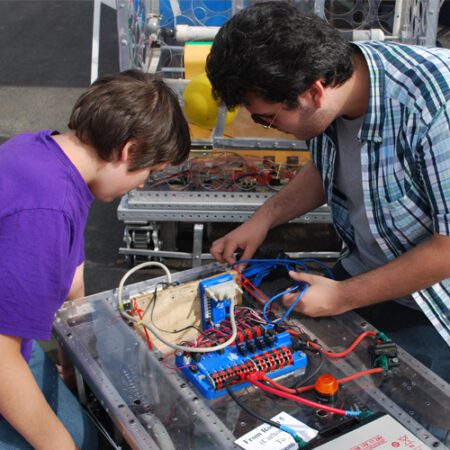
Key Shift One: Emphasis on Self Regard
Key shift two: emphasis on discourse, key shift three: emphasis on inquiry, key shift #1: improve mathematical self-regard.
It’s important for a teacher to communicate explicitly that each of their students are budding mathematicians. This directly contradicts deeply embedded cultural messages about who is “good at math” and what it means to be good at math (Boaler 2016). As a result, teacher messages must be intentional and consistent, as well as paired with a more accurate depiction of mathematics that aligns with the discipline, rather than the way mathematics is traditionally presented in schools.
For example, in the discipline, deep thinking, questioning, and creativity are key aspects of mathematics. However, in schools math classes tend to emphasize speed, breadth, and passive learning (Banilower et al. 2006).
By presenting mathematics as a discipline that requires a wider variety of skills, more students can see themselves as members of a mathematical community (Horn 2012). This also allows students of many cultural backgrounds to use their assets to be successful in mathematics (Carpenter et al. 1989).
Key Shift #2: Emphasis on Discourse
Research shows that complex knowledge such as mathematics is learned through social interactions (Vygotsky and Cole 1978; Lave and Wenger 1991). In traditional US math classrooms, discussion is typically teacher-led and consists of short, fact based questions and answers (Horn 2012).
The shift is to transform those discussions into ones that are student-led and consist of students’ conceptual ideas, questions, and mistakes, evaluating their own and others’ ideas.
Like all the shifts, this is not easy to accomplish and requires explicit instruction and support for students to learn how to participate in a small group or whole class discussion. In addition, it requires a change to class structures and the types of problems that are presented. Both must make space for student discussion and ideas to drive their own learning.
Key Shift #3: Emphasis on Inquiry
In an inquiry-based classroom, students construct their own knowledge, rather than teachers transferring knowledge to students. In this setting, the teacher’s role is to create a learning environment in which students can come up with ideas, share them, and refine them together with each other and the teacher (NCTM 2015).
One challenge is that teachers must maintain the cognitive load of the task – where students are engaging in reasoning and problem solving without being given a specific path to follow.
While these shifts are challenging, they are also mutually reinforcing. Inquiry and discourse position students as the possessors and creators of knowledge, which increases their self regard as mathematicians.
A learning environment that encourages inquiry will also lead to discussion as students come up with ideas, share them, and refine them in pursuit of understanding. As students come to regard themselves as mathematicians, they will feel more empowered to engage in discourse and PrBL.
PrBL Examples and Resources
Squirrel Race Guy is an Algebra 1 problem, designed in NTN’s Problem Planning Form and models the Explore-Launch-Discuss model described above. The planning form also includes a page that models the anticipatory planning required to design and implement strong problems.
Designing a 3D Product in 2D: Sports Bag This 7th grade sample problem is from the Mathematics Assessment Project which is part of the Math Design Collaborative initiated by the Bill & Melinda Gates Foundation. The project set out to design and develop well-engineered tools for formative and summative assessment that expose students’ mathematical knowledge and reasoning, helping teachers guide them towards improvement and monitor progress.
The Class Trip is a sample 3rd grade problem from Illustrative Math that models high-quality k-12 math problems aligned to NTN’s model of PrBL.
Resources for finding Math Problems to Adapt is a comprehensive list of resources curated by NTN for designing and adapting problems in your PrBL classroom.
Project-Based Learning is uses a real-world approach that requires students to use collaboration, problem solving and critical thinking skills that leads to a culminating product over an extended period of time. While Problem-Based Learning uses those same skills and narrows the focus to 1 or 2 standards over a shorter time period, emphasizing inquiry, exploration, and discussion of math concepts. Both approaches involve essential elements such as entry events that “hook” students with a real world problem or real math work and using rubrics for assessing learning outcomes.
New Tech Network’s Problem-Based Learning Model outlines three phases: Launch, Explore, and Discuss. Each phase plays a crucial role in engaging students in inquiry, building self-regard, and fostering discourse.
Both project-based learning and problem-based learning are both effective educational approaches that empower students to become active learners, critical thinkers, and effective collaborators. Using the resources from this article and creating a curriculum supported by projects and problems will allow students to strengthen their skills most needed for success in the 21st century.
About New Tech Network
New Tech Network is committed to meeting schools and districts where they are and helping them achieve their vision of student success. For a full list of our additional paths to impact or to speak with someone about how the NTN Model can make an impact in your district, please send an email to [email protected] .
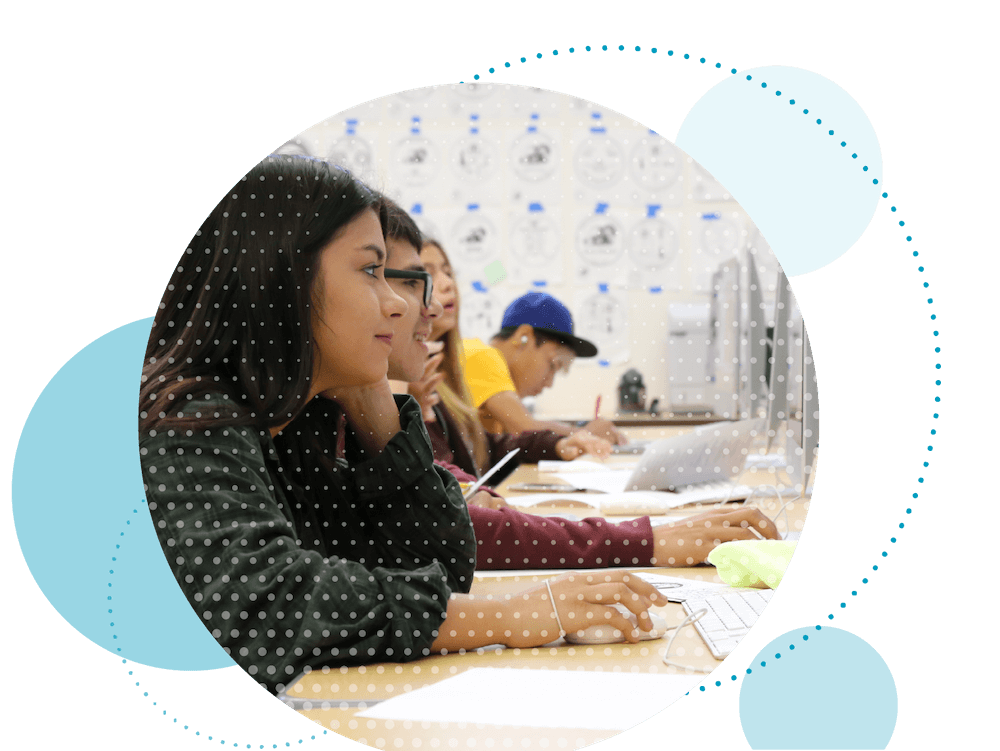
Sign Up for the NTN Newsletter
About Practera
- What is Practera
- Experiential learning?
- Latest News
Who uses Practera?
Higher education.
- Practera for educators
- Practera for students
- How it works
- Educators trial an industry experience program for free
- Practera for employers
- Digital industry projects
- ITEC – India Tech Export Catalyst
- Practera for government
Why Practera?
- Platform features
- Request a platform demo
- Explore student industry experience programs
- Design & onboarding
- What are programs?
- Submit Your Project
- Study Australia Industry Experience Program
- Mentor Recruitment
- Explore authentic student industry experience programs
Connect for a discussion
Submit a project.
- Project based learning white paper
- Experiential Learning White Paper
Project Based Learning: Benefits and Techniques of PBL

Project-based learning (PBL) enables students to learn deeply and develop core employability skills through participating in real work projects and experiences. It has benefits for students, education institutions and industry. With Practera’s support, organising project-based learning is cost-effective and simple.
What is project-based learning?
Project-based learning (PBL) is a teaching method that drives student learning by engaging them in real-world, meaningful projects. It’s a style of inquiry-based and student-centred learning. In PBL, students work in groups over a set period on a project designed to solve a genuine problem or answer a challenging question. Students demonstrate their knowledge and skills by creating a product or presentation for a public audience.
Project based learning activities allow students to develop deep content knowledge. Importantly, PBL also supports development of 21 st century skills such as critical thinking, collaboration, creativity and communication. PBL education is used across various learning environments, including high schools and universities.
It’s important to distinguish a PBL project from a traditional school or college project. Educators sometimes use light projects to supplement other learning activities. This can be likened to icing on a cake. In contrast, PBL is like the cake itself – it forms the substance of unit learning and skill development.
Want to reduce student costs by 90%? Download the ‘Quality in Online Project-Based Learning’ white paper to see how top institutions are doing it.
Why use project based learning?
The simple answer is that contemporary work is often project-based work. Forces including globalisation, automation and growth of the gig economy mean predictable and repetitive jobs are increasingly uncommon.
Instead, many current students’ careers will involve working on a series of projects. It therefore makes sense for them to have experience with project-based work, along with the knowledge and skills required to be a successful project team member.
What are the benefits of project based learning?
Project based learning also has other advantages for students. These include:
- Deeper engagement and interaction with learning content
- Encouragement of higher order thinking and problem-solving skills
- Development of peer and professional networks
- Engagement with potential employers and career mentors
- Fostering of 21 st century skills like collaboration and communication
- Enhanced autonomy and agency in learning
- A sense of mastery and self-efficacy
- Gaining valuable career insights.
Benefits for universities and industry
Universities and other educational institutions can also benefit from offering project-based learning that connects students with real-world projects and clients. The capacity to offer students high- quality PBL projects creates a differentiation point that can help you attract and retain students, improve their employability and satisfaction, and foster important partnerships with community, government and industry partners.
For educators , the PBL model can expand their repertoire of pedagogical strategies and lead to greater job satisfaction.
For industry , a PBL approach gives you access to teams of talented students eager to learn and apply their up-to-date academic knowledge. It creates opportunities to upskill staff in coaching and mentoring, and to meet potential job candidates.
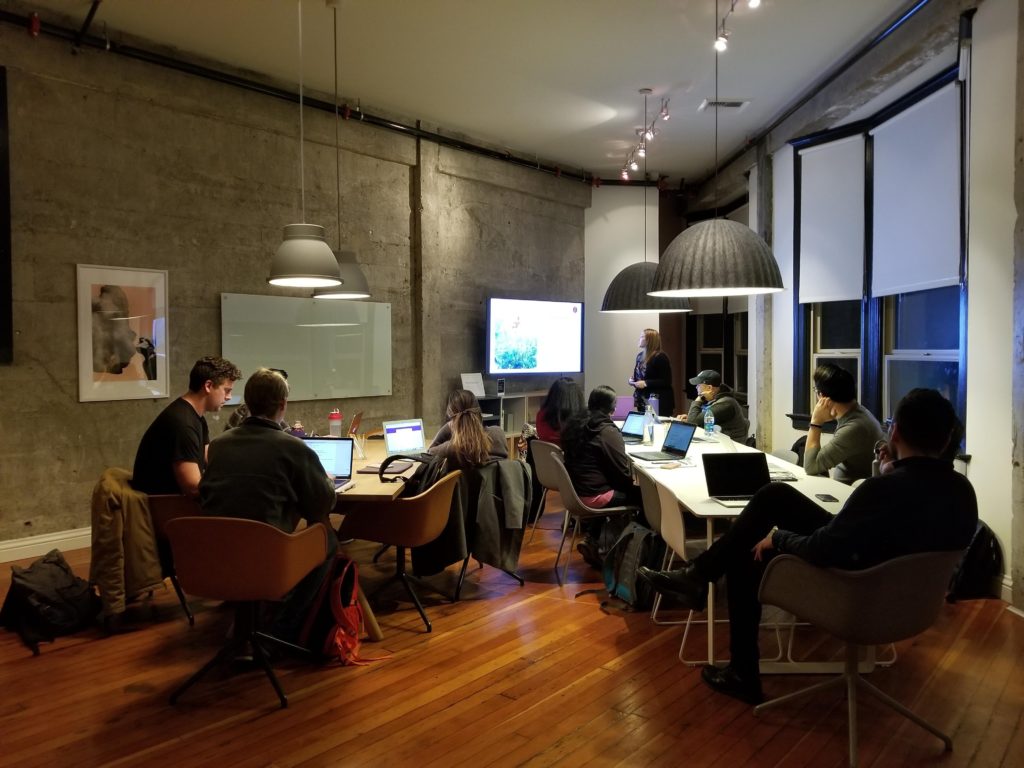
Establishing a program
If implementing a PBL program sounds like a great idea, it’s important to understand how to do it well before you get started. Research by the Buck Institute for Education has shown that a successful PBL unit must include some essential design elements for deeper learning, higher engagement and better-quality work to occur. They are:
- A challenging problem or question – the project must involve a meaningful, real-world problem that needs solving or question that needs answering, at an appropriately challenging level.
- Sustained inquiry – PBL projects need to give students the chance to engage in an extended, thorough process of questioning, finding resources, and applying information.
- Realism – the project must involve a real-life situation or task, or be related to the students’ personal concerns, life issues and interests.
- Student voice and choice – students need to be included in making decisions about the project, such as what they will create and how, and be allowed to communicate their ideas in their own voices.
- A public product for a real audience – the project needs to result in a piece of work that is shared with or presented to an audience beyond the classroom, such as industry clients or the public.
- Reflection – educators and students reflect on their learning, the quality of work produced, any challenges that arose, and the success of strategies used to overcome them.
- Feedback and revision – through reflection and critique, students should give, receive, and apply feedback (including formative and summative assessment) to enhance their processes and products.
When effectively designed, implemented and scaffolded, PBL can have a huge impact on the quality and success of your teaching practices.
How Practera can help
This might all sound quite complex, and it is if you’re trying to set everything up yourself. But with Practera’s help and resources , implementing project-based learning is simple.
Our dedicated team can help with our project-based learning managed services which help find you the most suitable program for your students and connect them with industry leaders. By connecting with our team, we offer continuous support in our programs with a dedicated program manager to ensure your students get the most out of their learning experience.
Our fully supported and quality assured programs are designed to easily connect university students with genuine industry experiences, internships and projects.
These are curated from thousands of global employers, including government departments, corporates and community organisations. Our expansive library of cost-effective project types facilitates projects ranging from two-week micro-internships to custom PBL programs to suit your requirements—all digitally enabled and scalable to thousands of learners.
Importantly, Practera can deliver these PBL programs virtually. Our innovative and user-friendly platform is designed to optimise learning quality and the student experience, regardless of whether programs are used onsite or remotely.
30-day free trial
Receive an exclusive 1:1 onboarding for your 30-day free trial with one of our experts and learn how to author, manage and launch amazing experiential learning programs with one easy-to-use platform.
No commitment or credit card needed to get started with your trial.

Monitoring progress and outcomes
Feedback about progress and outcomes is crucial for successful PBL, and you’ll want to ensure your PBL programs are achieving the desired results. Practera has you covered with our range of feedback, assessment and performance tracking tools .
Quality feedback to enhance learning outcomes
Quality feedback is one of Practera’s core strengths. Our platform allows students to receive individualised feedback from industry, peers and educators at exactly the right time to drive critical reflection, deep learning, and better performance. Integrated feedback support tools enhance the quality, consistency and timeliness of feedback—the key ingredient of successful learning! Our Team360 assessments also allow you to embed a peer feedback loop into your learning programs.
Easily assess educational outcomes
Practera gives you multiple options for assessing and progressing student learning. You can easily set up different types of assessments, commonly moderated assessments which allow for a feedback loop, along with question-and-answer options such as multiple choice and checkboxes.
For grading student work, Practera offers user-friendly rubrics that help you efficiently provide consistent and impartial grading. You can easily track participant engagement, progress and deliverables, pinpoint any issues with individual students or teams, and support them throughout their PBL experience.
Advanced technology enhances user experience
You can also monitor and quality assure your programs using Practera’s real-time analytics and data dashboards. At a glance, you can quickly identify any issues before they become bigger problems, or dig deeper for more detailed analysis. You can also capture end of program reports.
We even have a world-first AI-assistant, known as ELSA, designed specifically for experiential learning. ELSA provides 24/7 monitoring to provide real-time recommendations based on research- backed learning science, saving you time and helping deliver optimal student learning outcomes.
With COVID-19 meaning some PBL must take place virtually, Practera’s inbuilt feedback, assessment and performance tracking devices allow educational institutions to still deliver PBL activities without sacrificing learning quality.
Download your free PDF copy of this blog
Pbl is the real deal. It’s like taking learning to a new level. Who doesn’t want to solve real world problems and show their skills to a real people? It’s all about those 21st-century skills we need in the workforce.
Leave a Reply (Cancel reply)
Your email address will not be published.
Save my name, email, and website in this browser for the next time I comment.
Let’s talk section above footer – Practera
Submit a project brief to gain access to student teams around the world at no cost., for industry partners., contact us for a discussion around how practera can help you deliver your experiential learning vision., for educators and universities., useful links.
- Educators try our Platform for FREE
- Experiential learning white paper
- Learn how it works
- Watch platform demo
- Our Mission
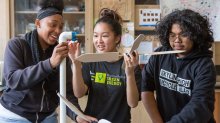
New Research Makes a Powerful Case for PBL
Two new gold-standard studies provide compelling evidence that project-based learning is an effective strategy for all students—including historically marginalized ones.
When Gil Leal took AP Environmental Science in his junior year of high school, he was surprised by how different it was from his other AP classes. Instead of spending the bulk of the time sitting through lectures, taking notes, and studying abstract texts, his class visited a strawberry farm in the valley nearby.
It wasn’t just for a tour. Leal and his peers were tasked with thinking about the many challenges that modern farms confront, from water shortages to pest infestations and erosion. More surprising to Leal: Students were asked to design their own solutions, incorporating what they had learned about things like soil composition, ecosystem dynamics, and irrigation systems.
Now an environmental science major at UCLA—and a first-generation college student—Leal sees the visit as a pivotal moment that led to his decision to pursue science in college. He had never visited a farm before, and was used to a traditional sit-and-listen learning model.
“In other classes, it was lecture, readings, test,” said Leal, “but in AP Environmental Science we worked on projects with other students, discussed our ideas, considered different perspectives—and I learned so much more this way.”
Leal’s AP class, taught by Brandie Borges, is part of a new generation of classes that transform traditional teacher-led instruction into a more student-centered, project-based approach—requiring students to work together as they tackle complex, real-world problems that emphasize uncertainty, iterative thinking, and innovation. Proponents of project-based learning (PBL) argue that it fosters a sense of purpose in young learners, pushes them to think critically, and prepares them for modern careers that prize skills like collaboration, problem-solving, and creativity.
Critics say that the pedagogy places too much responsibility on novice learners, and ignores the evidence about the effectiveness of direct instruction by teachers. By de-emphasizing knowledge transfer from experts to beginners, the critics suggest, PBL undermines content knowledge and subject fluency.
While project-based learning and direct instruction aren't incompatible, evidence that might settle the deeper controversy over PBL's effectiveness has been sparse. Only a handful of studies over the last decades have established a causal relationship between structured project-based learning and student outcomes—in either direction.
But two major new gold-standard studies—both funded by Lucas Education Research , a sister division of Edutopia—conducted by researchers from the University of Southern California and Michigan State University, provide compelling evidence that project-based learning is an effective strategy for all students, outperforming traditional curricula not only for high achieving students, but across grade levels and racial and socioeconomic groups.
Reimagining Advanced Placement Courses
The two studies involved over 6,000 students in 114 schools across the nation, with more than 50 percent of students coming from low-income households.
In the AP study , which included Gil Leal’s class along with over 3,600 students in both AP Environmental Science and AP U.S. Government and Politics courses from five districts serving a diverse student body, researchers looked at a broad range of project-based activities in the sciences and humanities.
In one example, students in Amber Graeber’s AP Government class took part in a simulation of an electoral caucus. Meanwhile, instead of simply reading about Supreme Court cases, students in Erin Fisher’s class studied historic cases and then took on real-world roles, arguing the cases in mock court, acting as reporters, and designing campaign ads and stump speeches to make their case.
Researchers found that nearly half of students in project-based classrooms passed their AP tests, outperforming students in traditional classrooms by 8 percentage points. Students from low-income households saw similar gains compared to their wealthier peers, making a strong case that well-structured PBL can be a more equitable approach than teacher-centered ones. Importantly, the improvements in teaching efficacy were both significant and durable: When teachers in the study taught the same curriculum for a second year, PBL students outperformed students in traditional classrooms by 10 percentage points.
The study results nudged at entrenched ideas about how to best teach students from different backgrounds. “There’s a belief among some educators and some policymakers that students from underserved backgrounds… aren’t ready to have student-centered instruction where they’re driving their own learning,” said USC researcher Anna Saavedra, the lead researcher on the AP study. “And so there’s this idea, and the results of this study really challenged that notion.”
Nationally, the researchers concluded, 30 percent of students from low-income households take AP tests, but that number jumped to 38 percent for students in PBL classrooms—there are more low-income students taking AP tests using project-based learning, and more are passing as well.
It may seem counterintuitive that a student-centered approach is effective in an environment that’s so focused on high-stakes testing, but the results suggest otherwise.
“Students felt like the work was more authentic,” said Saavedra, suggesting a possible explanation for the improvements. “There were more connections to their real lives. For example, in the AP Environmental Science course, they were learning about their ecological footprint and thinking: How do my behaviors affect the health of my community and of the larger world?”
Authentic Learning
But project-based learning isn’t just for high school kids. In Billie Freeland’s third-grade class, PBL not only builds students’ interest in science but also helps them make more connections with the world around them, generating a deep understanding of—and appreciation for—science, she says.
“Third-grade students work on the ‘Toy Unit,’” said Freeland. “But don’t let the name fool you.... Third graders learn the concepts of gravity, friction, force, and direction by designing toys from simple objects such as water bottles, straws, and recycled milk cartons. The unit ends with them designing their own toys that use magnetic or electrical force,” she told researchers, while emphasizing that the projects are aligned with Next Generation Science Standards (NGSS).
Freeland’s class was one of dozens involved in the large-scale study examining the effectiveness of PBL in elementary science classes . In the study, researchers from Michigan State University and the University of Michigan studied 2,371 third-grade students in 46 schools who were randomly assigned to a business-as-usual control group or a treatment group. The schools selected for the study were diverse: 62 percent of the schools’ student bodies qualified for free or reduced-price lunch, and 58 percent were students of color.
Like the high school students in the AP study, elementary students in PBL classrooms outperformed their peers, this time by 8 percentage points on a test of science learning. The pattern held across socioeconomic class and across all reading ability levels: In the project-based learning group, all boats rose on the tide—and both struggling readers and highly proficient readers outperformed their counterparts in traditional classrooms.
“The beauty of all of this, which is really quite lovely, is that we have PBL in science, a progression of it, from elementary through high school,” said Barbara Schneider, a professor of education at Michigan State University who worked on the study. “Our findings are consistent all across elementary and secondary school, which is really quite remarkable. And in both cases, we’re looking at substantial increases in science achievement.”
The Takeaway: In two gold-standard, randomized, controlled trials of thousands of students in diverse school systems across the U.S., project-based learning significantly outperformed traditional curricula, raising academic performance across grade levels, socioeconomic subgroups, and reading ability. To learn more about the AP courses and the research, watch the videos Reinventing AP Courses With Rigorous Project-Based Learning and A Project-Based Approach to Teaching Elementary Science .
5 Advantages and Disadvantages of Problem-Based Learning [+ Activity Design Steps]
Written by Marcus Guido
- Teaching Strategies

- Advantages of Problem-Based Learning
- Disadvantages of Problem-Based Learning
- Steps to Designing Problem-Based Learning Activities
Used since the 1960s, many teachers express concerns about the effectiveness of problem-based learning (PBL) in certain classroom settings.
Whether you introduce the student-centred pedagogy as a one-time activity or mainstay exercise, grouping students together to solve open-ended problems can present pros and cons.
Below are five advantages and disadvantages of problem-based learning to help you determine if it can work in your classroom.
If you decide to introduce an activity, there are also design creation steps and a downloadable guide to keep at your desk for easy reference.
1. Development of Long-Term Knowledge Retention
Students who participate in problem-based learning activities can improve their abilities to retain and recall information, according to a literature review of studies about the pedagogy .
The literature review states “elaboration of knowledge at the time of learning” -- by sharing facts and ideas through discussion and answering questions -- “enhances subsequent retrieval.” This form of elaborating reinforces understanding of subject matter , making it easier to remember.
Small-group discussion can be especially beneficial -- ideally, each student will get chances to participate.
But regardless of group size, problem-based learning promotes long-term knowledge retention by encouraging students to discuss -- and answer questions about -- new concepts as they’re learning them.
2. Use of Diverse Instruction Types
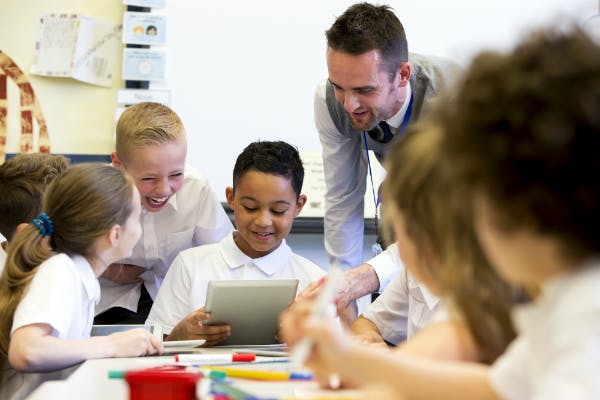
You can use problem-based learning activities to the meet the diverse learning needs and styles of your students, effectively engaging a diverse classroom in the process. In general, grouping students together for problem-based learning will allow them to:
- Address real-life issues that require real-life solutions, appealing to students who struggle to grasp abstract concepts
- Participate in small-group and large-group learning, helping students who don’t excel during solo work grasp new material
- Talk about their ideas and challenge each other in a constructive manner, giving participatory learners an avenue to excel
- Tackle a problem using a range of content you provide -- such as videos, audio recordings, news articles and other applicable material -- allowing the lesson to appeal to distinct learning styles
Since running a problem-based learning scenario will give you a way to use these differentiated instruction approaches , it can be especially worthwhile if your students don’t have similar learning preferences.
3. Continuous Engagement

Providing a problem-based learning challenge can engage students by acting as a break from normal lessons and common exercises.
It’s not hard to see the potential for engagement, as kids collaborate to solve real-world problems that directly affect or heavily interest them.
Although conducted with post-secondary students, a study published by the Association for the Study of Medical Education reported increased student attendance to -- and better attitudes towards -- courses that feature problem-based learning.
These activities may lose some inherent engagement if you repeat them too often, but can certainly inject excitement into class.
4. Development of Transferable Skills
Problem-based learning can help students develop skills they can transfer to real-world scenarios, according to a 2015 book that outlines theories and characteristics of the pedagogy .
The tangible contexts and consequences presented in a problem-based learning activity “allow learning to become more profound and durable.” As you present lessons through these real-life scenarios, students should be able to apply learnings if they eventually face similar issues.
For example, if they work together to address a dispute within the school, they may develop lifelong skills related to negotiation and communicating their thoughts with others.
As long as the problem’s context applies to out-of-class scenarios, students should be able to build skills they can use again.
5. Improvement of Teamwork and Interpersonal Skills

Successful completion of a problem-based learning challenge hinges on interaction and communication, meaning students should also build transferable skills based on teamwork and collaboration . Instead of memorizing facts, they get chances to present their ideas to a group, defending and revising them when needed.
What’s more, this should help them understand a group dynamic. Depending on a given student, this can involve developing listening skills and a sense of responsibility when completing one��’s tasks. Such skills and knowledge should serve your students well when they enter higher education levels and, eventually, the working world.
1. Potentially Poorer Performance on Tests

Devoting too much time to problem-based learning can cause issues when students take standardized tests, as they may not have the breadth of knowledge needed to achieve high scores. Whereas problem-based learners develop skills related to collaboration and justifying their reasoning, many tests reward fact-based learning with multiple choice and short answer questions. Despite offering many advantages, you could spot this problem develop if you run problem-based learning activities too regularly.
2. Student Unpreparedness

Problem-based learning exercises can engage many of your kids, but others may feel disengaged as a result of not being ready to handle this type of exercise for a number of reasons. On a class-by-class and activity-by-activity basis, participation may be hindered due to:
- Immaturity -- Some students may not display enough maturity to effectively work in a group, not fulfilling expectations and distracting other students.
- Unfamiliarity -- Some kids may struggle to grasp the concept of an open problem, since they can’t rely on you for answers.
- Lack of Prerequisite Knowledge -- Although the activity should address a relevant and tangible problem, students may require new or abstract information to create an effective solution.
You can partially mitigate these issues by actively monitoring the classroom and distributing helpful resources, such as guiding questions and articles to read. This should keep students focused and help them overcome knowledge gaps. But if you foresee facing these challenges too frequently, you may decide to avoid or seldom introduce problem-based learning exercises.
3. Teacher Unpreparedness
If supervising a problem-based learning activity is a new experience, you may have to prepare to adjust some teaching habits . For example, overtly correcting students who make flawed assumptions or statements can prevent them from thinking through difficult concepts and questions. Similarly, you shouldn’t teach to promote the fast recall of facts. Instead, you should concentrate on:
- Giving hints to help fix improper reasoning
- Questioning student logic and ideas in a constructive manner
- Distributing content for research and to reinforce new concepts
- Asking targeted questions to a group or the class, focusing their attention on a specific aspect of the problem
Depending on your teaching style, it may take time to prepare yourself to successfully run a problem-based learning lesson.
4. Time-Consuming Assessment

If you choose to give marks, assessing a student’s performance throughout a problem-based learning exercise demands constant monitoring and note-taking. You must take factors into account such as:
- Completed tasks
- The quality of those tasks
- The group’s overall work and solution
- Communication among team members
- Anything you outlined on the activity’s rubric
Monitoring these criteria is required for each student, making it time-consuming to give and justify a mark for everyone.
5. Varying Degrees of Relevancy and Applicability
It can be difficult to identify a tangible problem that students can solve with content they’re studying and skills they’re mastering. This introduces two clear issues. First, if it is easy for students to divert from the challenge’s objectives, they may miss pertinent information. Second, you could veer off the problem’s focus and purpose as students run into unanticipated obstacles. Overcoming obstacles has benefits, but may compromise the planning you did. It can also make it hard to get back on track once the activity is complete. Because of the difficulty associated with keeping activities relevant and applicable, you may see problem-based learning as too taxing.
If the advantages outweigh the disadvantages -- or you just want to give problem-based learning a shot -- follow these steps:
1. Identify an Applicable Real-Life Problem

Find a tangible problem that’s relevant to your students, allowing them to easily contextualize it and hopefully apply it to future challenges. To identify an appropriate real-world problem, look at issues related to your:
- Students’ shared interests
You must also ensure that students understand the problem and the information around it. So, not all problems are appropriate for all grade levels.
2. Determine the Overarching Purpose of the Activity
Depending on the problem you choose, determine what you want to accomplish by running the challenge. For example, you may intend to help your students improve skills related to:
- Collaboration
- Problem-solving
- Curriculum-aligned topics
- Processing diverse content
A more precise example, you may prioritize collaboration skills by assigning specific tasks to pairs of students within each team. In doing so, students will continuously develop communication and collaboration abilities by working as a couple and part of a small group. By defining a clear purpose, you’ll also have an easier time following the next step.
3. Create and Distribute Helpful Material

Handouts and other content not only act as a set of resources, but help students stay focused on the activity and its purpose. For example, if you want them to improve a certain math skill , you should make material that highlights the mathematical aspects of the problem. You may decide to provide items such as:
- Data that helps quantify and add context to the problem
- Videos, presentations and other audio-visual material
- A list of preliminary questions to investigate
Providing a range of resources can be especially important for elementary students and struggling students in higher grades, who may not have self-direction skills to work without them.
4. Set Goals and Expectations for Your Students
Along with the aforementioned materials, give students a guide or rubric that details goals and expectations. It will allow you to further highlight the purpose of the problem-based learning exercise, as you can explain what you’re looking for in terms of collaboration, the final product and anything else. It should also help students stay on track by acting as a reference throughout the activity.
5. Participate
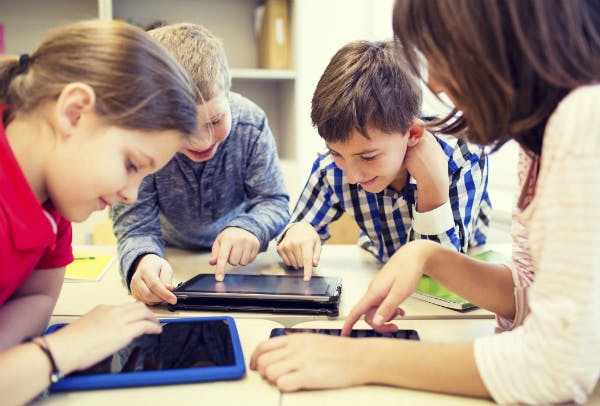
Although explicitly correcting students may be discouraged, you can still help them and ask questions to dig into their thought processes. When you see an opportunity, consider if it’s worthwhile to:
- Fill gaps in knowledge
- Provide hints, not answers
- Question a student’s conclusion or logic regarding a certain point, helping them think through tough spots
By participating in these ways, you can provide insight when students need it most, encouraging them to effectively analyze the problem.
6. Have Students Present Ideas and Findings
If you divided them into small groups, requiring students to present their thoughts and results in front the class adds a large-group learning component to the lesson. Encourage other students to ask questions, allowing the presenting group to elaborate and provide evidence for their thoughts. This wraps up the activity and gives your class a final chance to find solutions to the problem.
Wrapping Up
The effectiveness of problem-based learning may differ between classrooms and individual students, depending on how significant specific advantages and disadvantages are to you. Evaluative research consistently shows value in giving students a question and letting them take control of their learning. But the extent of this value can depend on the difficulties you face.It may be wise to try a problem-based learning activity, and go forward based on results.
Create or log into your teacher account on Prodigy -- an adaptive math game that adjusts content to accommodate player trouble spots and learning speeds. Aligned to US and Canadian curricula, it’s used by more than 350,000 teachers and 10 million students. It may be wise to try a problem-based learning activity, and go forward based on results.
Share this article
Table of Contents
Easily differentiate learning and engage your students with Prodigy Math.
Information
- Author Services
Initiatives
You are accessing a machine-readable page. In order to be human-readable, please install an RSS reader.
All articles published by MDPI are made immediately available worldwide under an open access license. No special permission is required to reuse all or part of the article published by MDPI, including figures and tables. For articles published under an open access Creative Common CC BY license, any part of the article may be reused without permission provided that the original article is clearly cited. For more information, please refer to https://www.mdpi.com/openaccess .
Feature papers represent the most advanced research with significant potential for high impact in the field. A Feature Paper should be a substantial original Article that involves several techniques or approaches, provides an outlook for future research directions and describes possible research applications.
Feature papers are submitted upon individual invitation or recommendation by the scientific editors and must receive positive feedback from the reviewers.
Editor’s Choice articles are based on recommendations by the scientific editors of MDPI journals from around the world. Editors select a small number of articles recently published in the journal that they believe will be particularly interesting to readers, or important in the respective research area. The aim is to provide a snapshot of some of the most exciting work published in the various research areas of the journal.
Original Submission Date Received: .
- Active Journals
- Find a Journal
- Proceedings Series
- For Authors
- For Reviewers
- For Editors
- For Librarians
- For Publishers
- For Societies
- For Conference Organizers
- Open Access Policy
- Institutional Open Access Program
- Special Issues Guidelines
- Editorial Process
- Research and Publication Ethics
- Article Processing Charges
- Testimonials
- Preprints.org
- SciProfiles
- Encyclopedia

Article Menu

- Subscribe SciFeed
- Recommended Articles
- Google Scholar
- on Google Scholar
- Table of Contents
Find support for a specific problem in the support section of our website.
Please let us know what you think of our products and services.
Visit our dedicated information section to learn more about MDPI.
JSmol Viewer
Principles of problem-based learning (pbl) in stem education: using expert wisdom and research to frame educational practice.

1. Introduction
- Building teacher knowledge, skills, and confidence in STEM teaching and learning, and
- Implementing useful and useable models of STEM education that focus on the pedagogical practices that underpin STEM as an integrated, cohesive, and meaningful approach to learning is something that is missing in the current educational landscape.
2. Literature Review
2.1. stem education.
STEM education is an interdisciplinary approach to learning which removes the traditional barriers separating the four disciplines of science, technology, engineering and mathematics and integrates them into real-world, rigorous, relevant learning experiences for students. (p. 4)
2.2. Origins of Problem-Based Learning (PBL)
- construct an extensive and flexible knowledge base,
- develop effective problem-solving skills,
- develop self-directed lifelong learning skills,
- become effective collaborators, and
- become intrinsically motivated to learn [ 12 ].
2.3. Summary—Linking PBL and STEM Education
3. methodology, 3.1. participant recruitment and selection, 3.2. approach.
- Why use PBL? (Why is it important? What does it have to offer?)
- What makes a good problem for PBL?
- When planning a PBL experience, what needs to be considered? (Is a team-teaching approach necessary? How should groups be formed? How do you anticipate resources that will be needed?)
- What are the important roles for the teacher and the student when engaging in PBL?
- What are some of the challenges in implementing PBL?
- As educators, we often talk about engagement from a cognitive, affective and behavioural perspective. What does PBL have to offer in terms of student and teacher engagement?
- What outcomes could be expected from engaging in a PBL process?
- What would be the success indicators for a successful PBL experience?
- We are developing a pedagogical framework for PBL in STEM education for years 6–10 (ages 11–15 years). The siloed nature of the school curriculum can present many barriers to implementing PBL. How might such barriers be overcome? What else should we consider in developing a pedagogical framework for PBL in school-based STEM education?
4.1. Theme 1: The Nature of Learning in PBL
4.1.1. learning as a process.
“It’s (PBL) more about the process of how they approach the learning, and not the product. So, understanding that problems are not something that you can solve step by step, but rather it’s something that you can try to understand first, and then when you understand it you start trying different things to approach the problem. And that reflection on what you’re doing and the result and what you need to do next, and where to find information, and what questions to ask... that’s what helps with this as a learning strategy.” (Focus Group 1)
“...a scenario (in medicine)…is the trigger for learning…they go to the doctor and they have a sore throat and various other symptoms. And what you are trying to figure out is not only what is wrong with them but…also learn about the throat and airways or something and maybe viruses and bacteria at the same time… trying to see this as a whole system. And the whole intent is that students would go to the library, seek out information, come back, have another meeting and try to resolve this issue. It may take three or four meetings before they get to the point when they go Ah ha! we’ve got this! And in the process, they have taught each other a whole lot about the scenario.” (Focus Group 2)
“The problem-based (approach) was more about a problem that you could deal with in a short space of time… the reality of engineering was a much larger project that took time and needed that time in order to be able to solve the problem …moving towards a project.” (Focus Group 2)
“And sometimes the problem would take two class periods…So, it was a much smaller, much more defined problem, but it would use the same process of looking at the problem, trying to work out what it was that they were trying to do as a team. Breaking up, going away, doing a bit of research. Which might only have been 15 min, and coming back and sharing that with the rest of the team, looking at how that helped them solve the problem that they had.” (Focus Group 2)
“It takes a long time to get the students to understand what this is. They need to understand the process of working with PBL and that takes time. So, I think patience is very important. It’s not necessarily going to be what you expect it to be the first time. …that takes a long time to make it really work, make it like a good program… be patient with the results, the outcome, what you actually expect to see.” (Focus Group 1)
4.1.2. Active Learning
“I think PBL works because it helps students connect to all the things that they know and that they’re familiar with. And when you’re able to bring previous experiences, developing learning is easier.” (Focus Group 1)
“PBL is also a way of empowering kids and students into thinking about how can I have agency in terms of these new complex problems that arise? And we do not know all the answers, for sure. And in many ways, young people have more innovative approaches to some of these problems.” (Focus Group 1)
4.1.3. Learning as ‘Looped’
“You’ve got, first of all, a loop of ‘Do I really understand that problem?’ You’ve actually then got another loop, which is ‘How do I design a solution to this problem?’ Quite apart from ‘What do I need to know that I haven’t learned in classes or that I’ve forgotten in classes?’” (Focus Group 2)
“And that’s a very different dichotomy, and the one that you’ve described really clearly, that two loop thing.…the focus [usually] is too much on the second loop. And they miss the first loop, which is the learning, that inherent knowledge base, going through that thought process.” (Focus Group 2)
4.2. Theme 2: PBL Requires a Rich Problem
4.2.1. relevant and authentic contexts.
“We work with what we call ‘real problems’ when we work with PBL, which I think is both relevant for the students no matter what age….it makes them more motivated. They choose maybe the problem themselves, they know what they want to do. It’s student-centred, which gives them a lot of opportunities.” (Focus Group 1)
“I suppose, it’s about maintaining engagement with what students are learning in STEM……. I think success criteria would be that it helps students contextualise why they learn the things they learn and they can see how it actually helps build that picture of the world around them.” (Focus Group 2)
4.2.2. Open-Ended, Complex Problems
“A certain amount of open-endedness, so that every group can engage differently with it and come up with a different solution. As long as it’s well argued and well thought through. Whereas, if it’s so convergent that everybody is hunting for the same answer, …. students lose interest, because they just go, ‘Ah, well, that groups already found the answer. So, why are we bothering?’ But, if everybody’s contributing something unique to the topic… then it’s really rich and then you discover that the whole class has got a much richer view of the story than any single group within the class.” (Focus Group 2)
“And there’s not one right or one wrong, and we may have three or four different designs that all turn out to be really valuable, and we may have one design that ended up to be a flop, but it had such great ideas as part of it that this group got an idea from that group.” (Focus Group 1)
“Students got really grumpy, because they didn’t understand that they had to ask questions. They thought that they were given an assignment, the assignment would be self-contained. They would just go away and do it and bring back the answer... they really needed to ask clarifying questions, and they didn’t realise they needed to ask clarifying questions. They just felt stuck. So, learning the process is really important.” (Focus Group 2)
“How tightly scoped does it need to be, how open-ended does it need to be? … there is a sweet spot for ensuring that it’s open enough, but still keeps them on the task that you want them to actually achieve.” (Focus Group 2)
“But if we can design curriculum where they actually can take small action steps that do empower them to feel like they can be part of a solution, even on whatever level they are…if that can be part of a curriculum to some actionable steps that they can take as individuals, then that just makes their learning and their ownership that much better.” (Focus Group 1)
4.2.3. Requires Collaboration
“...collaboration …would be a huge part of any work related to good problems that can take a team of people trying to figure things out...the sharing of the ideas of design, whatever we’re designing, to say, ‘Oh, here’s what we’re thinking, and here’s a picture, here’s materials. We’re trying to build this.’ Or, ‘These are ideas right now.’ And every group is thinking about it differently and they’re sharing and they’re giving each other feedback and they’re saying, ‘Oh, what about that? Is that going to be a problem?’ Or, ‘Oh, here’s an idea for you.’” (Focus Group 1)
“Something that is really central…what I have found really valuable for students on many levels is the sharing of the ideas of design…whatever we design…to say ‘here is what we’re thinking’…every group is thinking about it differently and their sharing, and their giving each other feedback.” (Focus Group 2)
“To create this community of learners, we have a problem we’re working on, we have different ideas, we’re going to try to pursue it differently, but we’re really collaborating and we’re not competing, we’re really collaborating to see which design is going to be most effective for what we’re trying to learn. And there’s not one right or one wrong, and we may have three or four different designs that all turn out to be really valuable, and we may have one design that ended up to be a flop, but it had such great ideas as part of it that this group got an idea from that group. …. they can be a valuable part of other people’s learning, not just the teacher as the valuable part of people’s learning.” (Focus Group 1)
4.3. Theme 3: Pedagogical Implications
4.3.1. effective scaffolding.
“It sounds quite boring, but it’s more about the structure than it is about the problem, in a sense. As long as that problem is something of interest to them and engages them [the students], their enthusiasm and their creativity and they can find a niche within it that they want to explore, you’re still going to have a very scaffolded and structured program sitting behind it. And I think that’s some of the downfalls of some of the projects we’ve seen that didn’t do that.” (Focus Group 2)
“Because students at different levels of development will have different capacity to cope with open-ended questions to a different degree. So, I think that question is really one of scaffolding. I think you have to think of the learners in the age group that you’re dealing with and their prior experience and where you’re wanting them to go. So, it’s a continuum rather than a single juncture in learning. So, it has to be a scaffolded experience.” (Focus Group 2)
4.3.2. Integrating Learning
“You’ve got to have those three levels of learning, like that surface level, the knowledge stuff, the in-between stuff which is being able to do the sort of deep level thinking where you link synoptically different things from different subject areas. And then the transfer level, which is the ability to extrapolate beyond the scenario kind of stuff. And I think you have to build that within a good project. You need the knowledge, you need the application across disciplines and you need the transferability. And you have to build a project, I think, that has those three elements.” (Focus Group 2)
“Curriculum coherence is really important for teachers. I think the curriculum needs to be coherent and I think teachers need to have this understanding of coherent. So, this idea of reading the curriculum before to get the big picture and understand that with that, with PBL that the act of construction of ideas, and that this idea of learning over time and building understanding takes time. And so, if you have a coherent curriculum that you can connect back and forth with, that it’s not something as a teacher that, ‘Oh, this week they need to understand this and this and this,’ but that it takes time. So, the idea of curriculum coherence and tying that with pedagogy.” (Focus Group 1)
“Get a clear problem statement. And that might be the first one or two weeks where students are just learning about the problem and getting successively better statements of what the problem is to be solved…. what’s the problem to be solved here? Interesting question that might take us several weeks. Then to say, ‘Oh, but then we can start to dig into what do the solutions look like to that problem.’ And that can take several weeks… So, you can do it in a very structured way, where in a sense you’ve got a cascade of problems of different layers.” (Focus Group 2)
4.3.3. Reconsidering Assessment
“I think this is where we go wrong with PBL. I think we’re very focused on learning objectives…we should not be talking about behavioural learning. We should be talking about intentions of learning…otherwise you’re locking us into a curriculum which is not creative, which is not collaborative. And that’s what the problem with objectives is—that they are too behavioural…you’re closing the learning down.” (Focus Group 1)
“I can see students in terms of the joy of learning, the persistence because of the challenge and the joy of the challenge, and also that there’s a true interest in solving this problem or whatever we’re doing, so that to me is the engagement part. And then this idea of an indicator is that they want to continue, they want to do more, they want to go on in science or in STEM because of what has taken place in their experiences.” (Focus Group 1)
5. Discussion
5.1. principles of a pbl model of school based stem education.
- Problems embedded in rich and relevant learning contexts.
- Flexible knowledge, skills, and capabilities.
- Active and strategic metacognitive reasoning.
- Collaboration based on intrinsic motivation.
5.1.1. Problems Embedded in Rich and Relevant Learning Contexts
5.1.2. flexible knowledge, skills and capabilities, 5.1.3. active and strategic metacognitive reasoning, 5.1.4. collaboration based on intrinsic motivation, 5.1.5. interconnectedness of pbl principles, 5.2. pbl in school-based stem education, 6. conclusions and implications, author contributions, institutional review board statement, informed consent statement, data availability statement, acknowledgments, conflicts of interest, abbreviations.
| PBL | Problem-based learning |
| PjBL | Project-Based Learning |
| STEM | Science, Technology, Engineering and Mathematics |
- Department of Industry, Science, Innovation and Resources. Australia’s National Science Statement. March 2017. Available online: https://www.industry.gov.au/data-and-publications/australias-national-science-statement (accessed on 29 July 2021).
- Johnson, C.C.; Peters-Burton, E.E.; Moore, T.J. STEM Road Map: A framework for Integrated STEM Education ; Routledge: Abingdon, UK, 2016. [ Google Scholar ]
- Marginson, S.; Tytler, R.; Freeman, B.; Roberts, K. STEM: Country Comparisons: International Comparisons of Science, Technology, Engineering and Mathematics (STEM) Education. Final Report ; Australian Council of Learned Academies: Canberra, ACT, Australia, 2013. [ Google Scholar ]
- National Science and Technology Council. Charting a Course for Success: America’s Strategy for STEM Education ; United States Government: Washington, DC, USA, 2018.
- PWC. A Smart Move: Future-Proofing Australia’s Workforce by Growing Skills in Science, Technology, Engineering and Maths (STEM). 2015. Available online: https://www.pwc.com.au/pdf/a-smart-move-pwc-stem-report-april-2015.pdf (accessed on 29 July 2021).
- Deloitte. The Deloitte Innovation Survey 2015. 2015. Available online: https://www2.deloitte.com/content/dam/Deloitte/lu/Documents/about-deloitte/lu-en-innovations-survey-25032015.pdf (accessed on 29 July 2021).
- National Skills Commission, Australia. The State of Australia’s Skills 2021: Now and into the Future. 2021. Available online: https://www.nationalskillscommission.gov.au/sites/default/files/2022-03/2021%20State%20of%20Australia%27s%20Skills_0.pdf (accessed on 16 September 2022).
- Timms, M.J.; Moyle, K.; Weldon, P.R.; Mitchell, P. Challenges in STEM Learning in Australian Schools: Literature and Policy Review ; Australian Council for Educational Research (ACER): Camberwell, VIC, Australia, 2018; Available online: https://research.acer.edu.au/policy_analysis_misc/28 (accessed on 29 July 2021).
- Shernoff, D.J.; Sinha, S.; Bressler, D.M.; Ginsburg, L. Assessing teacher education and professional development needs for the implementation of integrated approaches to STEM education. Int. J. STEM Educ. 2017 , 4 , 13. [ Google Scholar ] [ CrossRef ] [ PubMed ] [ Green Version ]
- Berry, M.; Chalmers, C.; Chandra, V. Can We Teach STEM in a More Meaningful and Integrated Way? In Proceedings of the 2nd International STEM in Education Conference, Beijing, China, 24–27 November 2012; Available online: https://eprints.qut.edu.au/57318/1/stem2012_82.pdf (accessed on 28 July 2021).
- Corrigan, D. Spotlight Report 2: Implementing and Integrated STEM Education in Schools—Five Key Questions Answered. Monash University: Education Futures. 2020. Available online: https://www.monash.edu/__data/assets/pdf_file/0007/2479444/sr2-stem-education-education-corrigan.pdf (accessed on 29 July 2021).
- Hmelo-Silver, C.E. Problem-based learning: What and how do students learn? Educ. Psychol. Rev. 2004 , 16 , 235–266. [ Google Scholar ] [ CrossRef ]
- Salomon, G.; Perkins, D.N. Rocky roads to transfer: Rethinking mechanisms of a neglected phenomenon. Educ. Psychol. 1998 , 24 , 113–142. [ Google Scholar ] [ CrossRef ]
- Gonzalez, L. The Problem-Based Learning Model. In Proceedings of the Eighth International Conference on Educational Innovation through Technology (EITT), Biloxi, MS, USA, 27–31 October 2019; pp. 180–183. Available online: https://ieeexplore.ieee.org/document/8924063 (accessed on 23 September 2022).
- Lombardi, P. Instructional Methods Strategies and Technologies to Meet the Needs of All Learners ; LibreTexts, 2022. [ Google Scholar ]
- Thorndahl, K.L.; Stentoft, D. Thinking Critically About Critical Thinking and Problem-Based Learning in Higher Education: A Scoping Review. Interdiscip. J. Probl.-Based Learn. 2020 , 14 . [ Google Scholar ] [ CrossRef ]
- Wang, H.; Moore, T.J.; Roehrig, G.H.; Park, M.S. STEM integration: Teacher perceptions and practice. J. Pre-Coll. Eng. Educ. Res. 2011 , 1 , 2. [ Google Scholar ] [ CrossRef ]
- Vasquez, J.A.; Comer, M.; Sneider, C. STEM Lesson Essentials, Grades 3–8: Integrating Science, Technology, Engineering, and Mathematics ; Heinemann: Portsmouth, NH, USA, 2013. [ Google Scholar ]
- Savery, J.R. Comparative pedagogical models of problem-based learning. In The Wiley Handbook on Problem-Based Learning ; Moallem, M., Hung, W., Dabbagh, N., Eds.; John Wiley: Hoboken, NJ, USA, 2019; pp. 81–104. [ Google Scholar ] [ CrossRef ]
- Osborne, J.; Dillon, J. Science Education in Europe: Critical Reflections ; Report to the Nuffield Foundation; King’s College: London, UK, 2008. [ Google Scholar ]
- Murphy, S.; MacDonald, A.; Danaia, L.; Wang, C. An analysis of Australian STEM education strategies. Policy Futur. Educ. 2019 , 17 , 122–139. [ Google Scholar ] [ CrossRef ]
- Bybee, R.W. The Case for STEM Education: Challenges and Opportunities ; NSTA Press: Arlington, VA, USA, 2013. [ Google Scholar ]
- Krajcik, J.; Delen, İ. Engaging learners in STEM education. Eest. Haridusteaduste Ajak. 2017 , 5 , 35–58. [ Google Scholar ] [ CrossRef ] [ Green Version ]
- Krajcik, J.; Delen, İ. How to support learners in developing usable and lasting knowledge of STEM. Int. J. Educ. Math. Sci. Technol. 2017 , 5 , 21. [ Google Scholar ] [ CrossRef ] [ Green Version ]
- Frykholm, J.; Glasson, G. Connecting science and mathematics instruction: Pedagogical context knowledge for teachers. Sch. Sci. Math. 2005 , 105 , 127–141. [ Google Scholar ] [ CrossRef ]
- Furner, J.M.; Kumar, D.D. The mathematics and science integration argument: A stand for teacher education. Eurasia J. Math. Sci. Technol. Educ. 2007 , 3 , 185–189. [ Google Scholar ] [ CrossRef ]
- Stohlmann, M.; Moore, T.J.; Roehrig, G.H. Considerations for teaching integrated STEM education. J. Pre-Coll. Eng. Educ. Res. 2012 , 2 , 4. [ Google Scholar ] [ CrossRef ] [ Green Version ]
- Barrows, H.S.; Tamblyn, R. Problem-Based Learning: An Approach to Medical Education ; Springer: Berlin/Heidelberg, Germany, 1980. [ Google Scholar ]
- Servant-Miklos, V.F.C.; Norman, G.R.; Schmidt, H.G. A Short Intellectual History of Problem based Learning. In The Wiley Handbook of Problem Based Learning , 1st ed.; Moallem, M., Hung, W., Dabbagh, N., Eds.; John Wiley & Sons Inc.: Hoboken, NJ, USA, 2019. [ Google Scholar ]
- Kolmos, A. Reflections on project work and problem-based learning. Eur. J. Eng. Educ. 1996 , 21 , 141–148. [ Google Scholar ] [ CrossRef ]
- Dahlgren, M.A.; Dahlgren, L.O. Portraits of PBL: Students’ experiences of the characteristics of problem-based learning in physiotherapy, computer engineering and psychology. Instr. Sci. 2002 , 30 , 111–127. [ Google Scholar ] [ CrossRef ] [ Green Version ]
- de Graaff, E.; Kolmos, A. Characteristics of Problem-Based Learning. Int. J. Eng. Educ. 2003 , 19 , 657–662. [ Google Scholar ]
- Dolmans, D.H.; De Grave, W.; Wolfhagen, I.H.; Van Der Vleuten, C.P. Problem-based learning: Future challenges for educational practice and research. Med. Educ. 2005 , 39 , 732–741. [ Google Scholar ] [ CrossRef ] [ PubMed ]
- Jonassen, D.H. Toward a Design Theory of Problem Solving. Educ. Technol. Res. Dev. 2000 , 48 , 63–85. [ Google Scholar ] [ CrossRef ]
- Liu, M.; Shi, Y.; Pan, Z.; Li, C.; Pan, X.; Lopez, F. Examining middle school teachers’ implementation of a technology-enriched problem-based learning program: Motivational factors, challenges, and strategies. J. Res. Technol. Educ. 2020 , 53 , 279–295. [ Google Scholar ] [ CrossRef ]
- Kim, M.K. Theoretically grounded guidelines for assessing learning progress: Cognitive changes in ill-structured complex problem-solving contexts. Educ. Tech Res. Dev 2012 , 60 , 601–622. [ Google Scholar ] [ CrossRef ]
- Hung, W. Theory to reality: A few issues in implementing problem-based learning. Educ. Technol. Res. Dev. 2011 , 59 , 529–552. [ Google Scholar ] [ CrossRef ]
- Jonassen, D.H. Instructional design models for well-Structured and ill-Structured Problem-Solving Learning Outcomes. Educ. Technol. Res. Dev. 1997 , 45 , 65–94. [ Google Scholar ] [ CrossRef ]
- Jonassen, D. Supporting problem solving in PBL. Interdiscip. J. Probl.-Based Learn. 2011 , 5 , 95–119. [ Google Scholar ] [ CrossRef ] [ Green Version ]
- Hung, W.; Amida, A. Problem-Based Learning in College Science. In Active Learning in College Science ; Springer International Publishing: Berlin/Heidelberg, Germany, 2020; pp. 325–339. [ Google Scholar ] [ CrossRef ]
- Wilkerson, L.; Gijselaers, W.H. Concluding comments. New Dir. Teach. Learn. 1996 , 68 , 101–104. [ Google Scholar ] [ CrossRef ]
- Grohs, J.R.; Kirk, G.R.; Soledad, M.M.; Knight, D.B. Assessing systems thinking: A tool to measure complex reasoning through ill-structured problems. Think. Ski. Creat. 2018 , 28 , 110–130. [ Google Scholar ] [ CrossRef ]
- Derler, H.; Berner, S.; Grach, D.; Posch, A.; Seebacher, U. Project-Based learning in a transinstitutional research setting: Case study on the development of sustainable food products. Sustainability 2020 , 12 , 233. [ Google Scholar ] [ CrossRef ] [ Green Version ]
- Leary, H.; Walker, A.; Lefler, M.; Kuo, Y. Self-Directed Learning in Problem-Based Learning. In The Wiley Handbook of Problem-Based Learning ; John Wiley & Sons, Inc.: Hoboken, NJ, USA, 2019; pp. 181–198. [ Google Scholar ] [ CrossRef ]
- Wilson, K. Exploring the challenges and enablers of implementing a STEM project-based learning programme in a diverse junior secondary context. Int. J. Sci. Math. Educ. 2020 , 19 , 881–898. [ Google Scholar ] [ CrossRef ]
- Savin-Baden, M. Problem-Based Learning in Higher Education: Untold Stories ; SRHE and Open University Press: Buckingham, UK, 2000. [ Google Scholar ]
- Savery, J.R.; Duffy, T.M. Problem-based learning: An instructional model and its constructivist framework. In Constructivist Learning Environments: Case Studies in Instructional Design ; Wilson, B., Ed.; Educational Technology Publications: Englewood Cliffs, NJ, USA, 1995; pp. 135–148. [ Google Scholar ]
- Savery, J.R. Fostering ownership with computer supported collaborative writing in higher education. In Electronic Collaborators: Learner-Centered Technologies for Literacy, Apprenticeship, and Discourse ; Bonk, C.J., King, K.S., Eds.; Lawrence Erlbaum: Mahwah, NJ, USA, 1998; pp. 103–127. [ Google Scholar ]
- Savery, J.R. Enhancing motivation and learning through collaboration and the use of problems. In Inspiring Students: Case Studies in Motivating the Learner ; Fellows, S., Ahmet, K., Eds.; Kogan Page: London, UK, 1999; pp. 33–42. [ Google Scholar ]
- Barrows, H.S. The Tutorial Process ; Southern Illinois University School of Medicine: Springfield, IL, USA, 1988. [ Google Scholar ]
- Gill, P.; Baillie, J. Interviews and focus groups in qualitative research: An update for the digital age. Br. Dent. J. 2018 , 225 , 668–672. [ Google Scholar ] [ CrossRef ]
- Krueger, R.A.; Casey, M.A. Focus Groups: A Practical Guide for Applied Research , 3rd ed.; Sage Publications: Thousand Oaks, CA, USA, 2000. [ Google Scholar ]
- Braun, V.; Clarke, V. Successful Qualitative Research: A Practical Guide for Beginners ; Sage: Thousand Oaks, CA, USA, 2013. [ Google Scholar ]
- Williams, A.; Katz, L. The use of focus group methodology in education: Some theoretical and practical considerations. Int. Electron. J. Leadersh. Learn. 2001 , 5 . [ Google Scholar ]
- Sim, J.; Waterfield, J. Focus group methodology: Some ethical challenges. Qual. Quant. 2019 , 53 , 3003–3022. [ Google Scholar ] [ CrossRef ] [ Green Version ]
- Bryman, A. Social Research Methods , 5th ed.; Oxford University Press: Oxford, UK, 2016. [ Google Scholar ]
- Braun, V.; Clarke, V. Using thematic analysis in psychology. Qual. Res. Psychol. 2006 , 3 , 77–101. [ Google Scholar ] [ CrossRef ]
- Liu, Y.; Pásztor, A. Effects of problem-based learning instructional intervention on critical thinking in higher education: A meta-analysis. Think. Ski. Creat. 2022 , 45 , 101069. [ Google Scholar ] [ CrossRef ]
- Mann, L.; Chang, M.; Chandrasekaran, S.; Coddington, A.; Daniel, S.; Cook, E.; Crossin, E.; Cosson, B.; Turner, J.; Mazzurco, A.; et al. From problem-based learning to practice-based education: A framework for shaping future engineers. Eur. J. Eng. Educ. 2021 , 46 , 27–47. [ Google Scholar ] [ CrossRef ]
- El Sayary, A.; Forawi, S.; Mansour, N. STEM Education and Problem-Based Learning ; The Routledge International Handbook of Research on Teaching Thinking: Abingdon, UK, 2015; pp. 357–368. [ Google Scholar ]
- Gee, K.A.; Wong, K.K. A cross national examination of inquiry and its relationship to student performance in science: Evidence from the Program for International Student Assessment (PISA) 2006. Int. J. Educ. Res. 2012 , 53 , 303–318. [ Google Scholar ] [ CrossRef ]
- Von Secker, C. Effects of inquiry-based teacher practices on science excellence and equity. J. Educ. Res. 2002 , 95 , 151–160. [ Google Scholar ] [ CrossRef ]
- Thibaut, L.; Knipprath, H.; Dehaene, W.; Depaepe, F. The influence of teachers’ attitudes and school context on instructional practices in integrated STEM education. Teach. Teach. Educ. 2018 , 71 , 190–205. [ Google Scholar ] [ CrossRef ]
- Gao, X.; Li, P.; Shen, J.; Sun, H. Reviewing assessment of student learning in interdisciplinary STEM education. Int. J. STEM Educ. 2020 , 7 , 24. [ Google Scholar ] [ CrossRef ]
- Savery, J.R. Overview of problem-based learning: Definitions and distinctions. Essent. Read. Probl.-Based Learn. Explor. Extending Leg. Howard S. Barrows 2015 , 9 , 5–15. [ Google Scholar ]
Click here to enlarge figure
| Code | Category | Theme |
|---|---|---|
| Learning that really matters | Relevant & authentic context | PBL requires a rich problem |
| Dynamic, real changes | ||
| Big context, rich meaning | ||
| Authentic, contextual picture | ||
| Connected across disciplines | ||
| Amount of open-endness | Open ended, complex problems | |
| Onion layers | ||
| Digging deeper | ||
| Scaffolded process | ||
| Convergent/divergent | ||
| Feedback | Collaboration | |
| Sharing ideas | ||
| Process assessment | ||
| Community of learners |
| MDPI stays neutral with regard to jurisdictional claims in published maps and institutional affiliations. |
Share and Cite
Smith, K.; Maynard, N.; Berry, A.; Stephenson, T.; Spiteri, T.; Corrigan, D.; Mansfield, J.; Ellerton, P.; Smith, T. Principles of Problem-Based Learning (PBL) in STEM Education: Using Expert Wisdom and Research to Frame Educational Practice. Educ. Sci. 2022 , 12 , 728. https://doi.org/10.3390/educsci12100728
Smith K, Maynard N, Berry A, Stephenson T, Spiteri T, Corrigan D, Mansfield J, Ellerton P, Smith T. Principles of Problem-Based Learning (PBL) in STEM Education: Using Expert Wisdom and Research to Frame Educational Practice. Education Sciences . 2022; 12(10):728. https://doi.org/10.3390/educsci12100728
Smith, Kathy, Nicoleta Maynard, Amanda Berry, Tanya Stephenson, Tabetha Spiteri, Deborah Corrigan, Jennifer Mansfield, Peter Ellerton, and Timothy Smith. 2022. "Principles of Problem-Based Learning (PBL) in STEM Education: Using Expert Wisdom and Research to Frame Educational Practice" Education Sciences 12, no. 10: 728. https://doi.org/10.3390/educsci12100728
Article Metrics
Article access statistics, further information, mdpi initiatives, follow mdpi.

Subscribe to receive issue release notifications and newsletters from MDPI journals
Home » Blog – LEAD Gurukul » Project Based Learning: Aligned with NEP for Modern Education
Project Based Learning: Aligned with NEP for Modern Education

Last Updated On: 28/08/2024
Mohini Rathi
School Owner
Project-based learning (PBL) aligns seamlessly with the National Education Policy (NEP) 2020, emphasising a more holistic, flexible, and skill-based approach to education. By embedding PBL into the curriculum, NEP 2020 envisions an education system that fosters critical thinking, creativity, and lifelong learning, equipping students with the tools needed to navigate the complexities of the modern world. This blog will cover how project-based learning is transforming our approach to education in India.
What is Project-Based Learning?
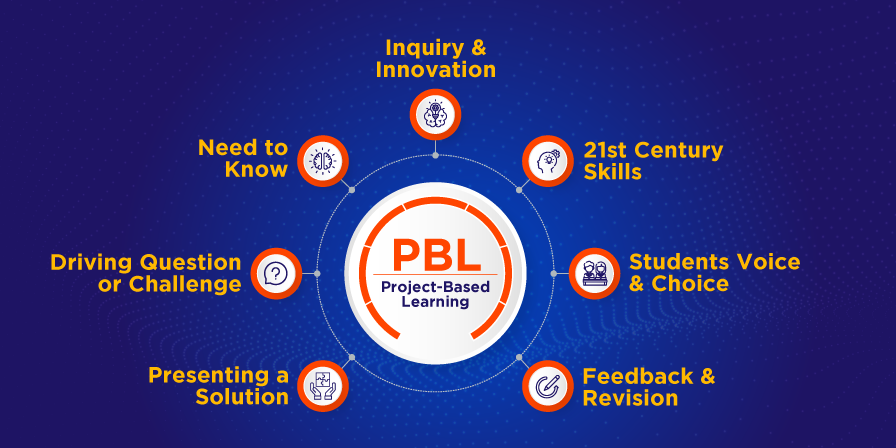
Project-based learning (PBL) is an instructional approach in which students actively explore real-world problems and challenges by working on projects over an extended period. Unlike traditional methods that often focus on rote memorisation and passive learning, PBL encourages students to engage deeply with content, apply knowledge in practical ways, and develop critical thinking and collaboration skills.
In modern education, PBL is particularly relevant as it mirrors the dynamic, problem-solving environments students will encounter in their careers. It shifts the focus from teacher-led instruction to student-centred learning, where learners take ownership of their projects, fostering a deeper understanding of the subject matter and developing essential life skills.
Compared to traditional learning methods, where students typically absorb information and demonstrate understanding through exams, PBL offers a more hands-on, experiential approach. It encourages creativity, collaboration, and real-world application, making education more meaningful and aligned with the demands of the 21st century.
Key Components of PBL
Project-Based Learning is built on several essential elements that contribute to its effectiveness and impact on education:
Student-Centered Learning
In Project-Based Learning, students are at the centre of their educational journey, taking ownership of their learning process. This autonomy empowers them to make decisions, solve problems, and explore their interests, leading to a more personalised and engaged learning experience.
Inquiry-Based Approach
The inquiry-based approach in PBL encourages students to be curious, ask meaningful questions, and dive deep into research. This method builds critical thinking skills and fosters a love for learning as students actively seek answers and solutions to complex issues.
Real-World Relevance
Projects in PBL are designed with real-world applications in mind, helping students connect academic content to practical scenarios. This relevance makes learning more impactful, as students see the direct implications of their work in real-life contexts, preparing them for future challenges.
Collaboration
Collaboration is a cornerstone of PBL, where students work in teams to achieve common goals. This collaborative environment enhances communication skills, fosters diverse perspectives, and teaches the value of teamwork, essential skills in both academic and professional settings.
How is PBL Aligned with NEP 2020?
Project-based learning plays a crucial role in achieving the objectives of NEP 2020 by fostering a more experiential, student-centric, and skill-oriented education system. PBL encourages students to engage in hands-on, real-world projects that align with NEP 2020’s vision of making learning more practical and relevant to life beyond the classroom.
PBL supports NEP 2020’s emphasis on critical thinking and problem-solving by allowing students to explore complex issues, ask questions, and develop solutions. This approach nurtures intellectual curiosity and analytical skills, preparing students to navigate and address the challenges of a rapidly changing world.
Moreover, PBL contributes to the holistic education envisioned by NEP 2020 by integrating interdisciplinary learning and collaboration into the curriculum. It enhances academic knowledge and develops essential life skills such as teamwork, communication, and adaptability, aligning perfectly with the policy’s goal of creating well-rounded, capable individuals.
PBL as a Modern Learning Approach
Project-based learning aligns closely with contemporary educational goals by fostering a learning environment that emphasises critical thinking, creativity, and the practical application of knowledge. In today’s rapidly evolving world, PBL equips students with the skills needed to thrive in complex, real-world situations, making it an essential component of modern education.
Examples of successful PBL projects in schools include designing eco-friendly products, developing community health initiatives, and creating multimedia presentations on global issues. These projects allow students to connect academic concepts with real-world challenges, enhancing their understanding and ability to apply what they’ve learned in meaningful ways.
The impact of PBL on student engagement and outcomes is profound. Students involved in PBL are more likely to be motivated and invested in their learning because they see the direct relevance of their work. This approach improves academic performance and helps students develop a deeper understanding of the material, leading to enhanced retention and more meaningful educational experiences.
Never miss a story
Stay updated with the latest news and articles related to school education
SUBSCRIBE TO OUR NEWSLETTER
Benefits of project-based learning.
These benefits make Project-Based Learning a powerful approach that enhances students’ educational experience and provides teachers with the tools to create more engaging, effective, and meaningful learning environments.
For Students
- Enhanced Critical Thinking: PBL encourages students to analyse problems, consider multiple perspectives, and develop innovative solutions, strengthening their critical thinking abilities.
- Improved Collaboration: By working in teams, students learn to communicate effectively, share responsibilities, and appreciate diverse viewpoints, enhancing their collaboration skills.
- Real-World Skills: PBL projects mimic real-world scenarios, helping students develop practical skills like problem-solving, project management, and adaptability, which are essential for future success.
- Personalised Learning: PBL allows students to explore topics that interest them, leading to a more personalised and engaging learning experience.
- Increased Knowledge Retention: PBL’s hands-on nature helps students retain knowledge better by allowing them to apply what they learn to real-world contexts.
- Confidence Building: Completing complex projects boosts students’ confidence in their abilities, empowering them to take on future challenges with greater self-assurance.
For Teachers
- Innovative Teaching Methods: PBL encourages teachers to explore creative and innovative approaches to teaching, moving beyond traditional lecture-based methods.
- Increased Student Engagement: PBL keeps students engaged and motivated, making learning more dynamic and interactive.
- Professional Growth: Implementing PBL can lead to professional development opportunities for teachers as they continuously adapt and refine their teaching strategies.
- Better Classroom Management: PBL fosters a more collaborative and student-centred classroom environment, often leading to improved classroom management.
- Continuous Feedback: Teachers can provide ongoing feedback throughout the project, helping students improve their work and deepen their understanding in real time.
- Positive Impact on Student Learning: By aligning teaching with real-world applications, PBL positively impacts student learning outcomes, leading to more meaningful educational experiences.

Challenges and Solutions in Implementing PBL under NEP
Addressing these challenges with thoughtful strategies and robust teacher training can help ensure the successful implementation of Project-Based Learning, which aligns with the transformative goals of NEP 2020.
Common Challenges:
- Lack of Resources: Schools may need more resources, such as materials or technology, to support PBL activities effectively.
- Time Constraints: Implementing PBL can be time-consuming, requiring careful planning and a shift from traditional teaching methods, which may be challenging in already packed curriculums.
- Teacher Readiness: Not all educators are familiar with PBL, which can make it difficult to facilitate projects and guide students through the learning process.
LEAD Group’s Role in Implementing PBL
Lead group’s curriculum integration.
LEAD’s curriculum is meticulously designed to incorporate Project-Based Learning (PBL) at every stage, ensuring students actively engage in hands-on, experiential learning. By embedding PBL into its core curriculum, LEAD Group allows students to apply their knowledge to real-world scenarios, fostering critical thinking and problem-solving skills. The curriculum is structured to align with NEP 2020, making it flexible and comprehensive, providing educators with a clear roadmap to integrate PBL seamlessly into their teaching practices.
Teacher Training and Professional Development
LEAD offers comprehensive teacher training programs that equip teachers with the skills and knowledge necessary to implement PBL in their classrooms effectively. These professional development initiatives include workshops, coaching sessions, and continuous support, ensuring that teachers are confident and capable of guiding students through PBL projects.
LEAD Group conducts in-person teacher training workshops four times a year, providing timely opportunities for teachers to receive hands-on training and address any queries they might have.
LEAD Group’s approach to teacher training emphasises the importance of reflective practice and collaboration, enabling teachers to share best practices and innovate their teaching strategies.
Digital and Technological Tools
LEAD Group’s digital platform is a powerful tool that supports PBL by providing educators and students with access to a wide range of resources, project management tools, and collaboration features. This platform facilitates seamless communication and organisation, making it easier to manage complex projects. Additionally, LEAD Group’s smart classroom solutions , equipped with interactive technology, enhance PBL experiences by creating immersive, engaging learning environments where students can explore, experiment, and collaborate in real-time.
Student Assessment and Feedback
LEAD’s Assessment Builder tool revolutionises how assessments are managed and utilised in schools. This tool allows teachers to customise assessments to match the rigour and topics of their curriculum, ensuring that evaluations are aligned with specific learning objectives and student needs.
Integrated with the Teacher App, the Assessment Builder enables seamless entry of marks and tracking of student performance. This end-to-end integrated assessment system not only streamlines the assessment process but also includes features for generating remedial actions based on student performance.
By using LEAD’s Jasper Assessment Builder, schools can transform their assessment practices, making them more flexible and responsive to student progress. The tool supports a comprehensive approach to feedback, helping students understand their strengths, identify areas for improvement, and enhance their learning experience through targeted support and interventions.
Implementing PBL in the Classroom
Integrating Project-Based Learning (PBL) into the curriculum can be transformative. Here’s a step-by-step guide to help teachers get started:
Identify Learning Objectives: Define clear learning goals aligning with your curriculum standards. Determine what skills and knowledge students should gain from the project.
Design the Project: Develop a relevant, challenging, and engaging project for students. Ensure it has real-world applications and allows students to explore the subject deeply.
Plan the Project Timeline: Break down the project into manageable steps, setting clear milestones and deadlines. This helps keep students on track and ensures steady progress.
Facilitate Collaboration: Encourage students to work in teams, fostering collaboration and communication. Assign roles and responsibilities to ensure all students contribute meaningfully to the project.
Provide Continuous Feedback: Throughout the project, offer regular feedback to guide students, helping them refine their ideas and improve their work.
Assess the Project: Develop assessment criteria for the process and the final product. Consider including self-assessment and peer review in the evaluation.
Tips for Teachers:
- Be a Facilitator: Rather than directing every step, guide students by asking questions and encouraging exploration. Allow them to take ownership of their learning.
- Manage Time Effectively: Keep the project on schedule by regularly checking in with students and adjusting timelines as needed.
- Encourage Reflection: After completing the project, have students reflect on their learning experience, what they did well, and what they could improve.
Tools and Resources Available Through LEAD:
LEAD provides various tools and resources to support the implementation of PBL, including lesson plans, and professional development workshops for teachers.
LEAD Academy provides a comprehensive platform for teachers with access to over 30 courses on a wide range of topics, including professional development, building effective classroom spaces, and modern education systems. Teachers can engage in level-based courses and earn certifications upon completion, enhancing their skills and knowledge.
Project-Based Learning Ideas and Examples
Project-based learning can be adapted to various grade levels and subjects, allowing students to explore in-depth topics while developing essential skills. For younger elementary school students, projects include creating a community garden to learn about plant biology and environmental stewardship or building a simple machine to understand basic physics concepts.
In middle school, students could work on designing a sustainable city model, integrating lessons from geography, mathematics, and social studies. Another example could be developing a public health campaign to raise awareness about nutrition, combining science with communication skills.
For high school students, more complex projects involve creating a business plan for a startup, which can incorporate elements of economics, marketing, and technology. Alternatively, they could engage in historical research projects, where they investigate and present on significant events or figures, honing their research, analysis, and presentation skills. These examples show how PBL can be tailored to various educational levels, providing meaningful, hands-on learning experiences across subjects.
Future Directions for PBL and NEP in Modern Education
Looking ahead, the future of school learning is likely to become more student-centred, with a stronger emphasis on experiential and inquiry-based learning methods. As technology advances, virtual and augmented reality tools could enhance PBL experiences, allowing students to engage in immersive, real-world simulations that deepen their understanding of complex subjects.
In the long term, the combined impact of NEP and PBL on the education system could lead to a generation of learners who are not only academically proficient but also equipped with the critical thinking, creativity, and problem-solving skills needed to thrive in an ever-changing world. This shift could transform the educational landscape, making it more adaptive, inclusive, and responsive to the needs of both students and society.
As the education landscape evolves, schools and educators are encouraged to explore and adopt Project-Based Learning as a transformative approach that empowers students with the skills and knowledge needed for success in the modern world. By embracing PBL, educators can create more engaging, meaningful, and impactful learning experiences that align with the goals of NEP 2020.
Partnering with LEAD offers access to innovative education solutions, resources, and professional development opportunities to support this journey. Together, we can shape the future of education, making it more dynamic, student-centered, and prepared to meet the challenges of tomorrow.
Mohini is a Product Manager at LEAD School. She is an IIT Bombay alumnus. Her love of solving problems drives her as a product manager. Her varied experience of products across industries allows her to have multiple outlooks on every problem. She is a strong believer of the butterfly effect, and hence keeps making small efforts for the big changes and is excited to be a part of LEAD School.
Exciting OFFERS ending SOON!!
Give your school the lead advantage, give your child the lead advantage.

Here's a handy guide for you
Download the EBook
Download the nep ebook.
Thank you for visiting nature.com. You are using a browser version with limited support for CSS. To obtain the best experience, we recommend you use a more up to date browser (or turn off compatibility mode in Internet Explorer). In the meantime, to ensure continued support, we are displaying the site without styles and JavaScript.
- View all journals
- Explore content
- About the journal
- Publish with us
- Sign up for alerts
- Open access
- Published: 27 August 2024
Enhancing students’ attitudes towards statistics through innovative technology-enhanced, collaborative, and data-driven project-based learning
- Andreea Cujba 1 &
- Manoli Pifarré ORCID: orcid.org/0000-0002-4271-4824 1
Humanities and Social Sciences Communications volume 11 , Article number: 1094 ( 2024 ) Cite this article
Metrics details
- Complex networks
Given the substantial body of educational research highlighting the significant influence of student attitudes on academic performance, particularly in disciplines like statistics where anxiety is prevalent, there is a need to investigate how innovative methodologies could reshape these attitudes. This paper will capitalize on the advancements from previously uncombined innovative methodologies of teaching statistics, such as project-based learning, data analytics, collaborative work, or the use of technology. Specifically, this paper reports on the design, implementation, and evaluation of innovative technology-enhanced, collaborative, and data-driven project-based learning, aiming to positively impact students’ attitudes towards statistics as a cornerstone to improve statistical knowledge. To achieve this, a quasi-experimental research study involving 174 secondary students was undertaken, with participants divided into an experimental group (EG) and a control group (CG). Results indicate a notable positive shift in attitudes among EG students following the intervention. The EG students decreased their anxiety after the intervention and, increased their affect and positive attitude toward using technology for learning statistics. By contrast, the CG students do not show any positive effect on their attitudes. These findings underscore the potential of the innovative instructional design implemented in this project to not only foster practical statistical problem-solving skills but also cultivate positive attitudes crucial for statistical competence. Educational implications are discussed.
Similar content being viewed by others

Fostering twenty-first century skills among primary school students through math project-based learning

Students’ performance, attitude, and classroom observation data to assess the effect of problem-based learning approach supplemented by YouTube videos in Ugandan classroom
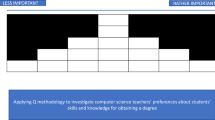
Applying Q-methodology to investigate computer science teachers’ preferences about students’ skills and knowledge for obtaining a degree
Introduction.
In our increasingly digital world, technology generates vast quantities of data, and with the rise of artificial intelligence, this influx is set to skyrocket. To effectively harness and make sense of this data, citizens need to be equipped with robust data analytic skills. As evidence-based decision-making becomes increasingly imperative, advanced data analytic abilities will be indispensable. However, a significant challenge lies in the fact that many secondary students lack the positive attitudes necessary to engage with and learn data analytics skills and statistics (Garfield and Ben‐Zvi, 2007 ; Szczygieł and Pieronkiewicz, 2021 ).
Previous educational research has confirmed the role of developing positive attitudes to obtaining better results and meaningful learning of mathematics and statistics (e.g., Albelbisi and Yusop, 2018 ; Dowker et al., 2019 ; Muñoz et al., 2018 ; Silva and Sousa, 2020 ).
In the same vein, Emmioğlu and Capa-Aydin ( 2012 ) point out that positive attitudes towards statistics correlate positively with higher students’ results in statistics courses. Furthermore, several studies indicate that most students and adults do not statistically reason about important issues that affect their lives because they have not acquired the necessary skills (Domu et al., 2023 ; Garfield and Ben‐Zvi, 2007 ; Haddar et al., 2023 ; Özmen and Baki, 2021 ). Therefore, many students do not understand the usefulness or application of statistics in real and daily life and develop negative attitudes, e.g., anxiety, towards statistical content (Gal and Ginsburg, 1994 ; Williams, 2015 ). Rejection towards this subject is also accounted for by the widespread and well-known mathematical anxiety (Szczygieł and Pieronkiewicz, 2021 ) due to the student’s perception that statistics posits a great deal of mathematical content, without a real application and is difficult to understand (Gal and Ginsburg, 1994 ).
This paper capitalizes on the advancements from previously uncombined innovative methodologies of teaching statistics, such as project-based learning, data analytics, collaborative work, or the use of technology; and it designs an innovative instructional design to promote positive students’ attitudes towards statistics. Moreover, the paper reports on the implementation, and evaluation of technology-enhanced, collaborative, and data-driven project-based learning and its impact on students’ attitudes towards statistics via a quasi-experimental study. The paper contributes with an innovative pedagogy that combines and integrates the advancements of already testing teaching methods for engaging students in big data analysis, increasing their positive attitudes towards statistics, a cornerstone to improve students’ statistics skills and learning.
Literature review
Attitudes have been broadly defined as not directly observable, inferred aspects consisting of beliefs, feelings, and behavioural predispositions towards the object to which they are directed (Nolan et al., 2012 ). Although the attitude definition is not consistent in the literature, in accordance with the most frequent definitions in research, an attitude is a psychological tendency that is expressed by evaluating a particular entity with some degree of favour or disfavour (Savelsbergh et al., 2016 ). Hence, this psychological tendency is shaped through experience and determines future behaviours. In this line of argument, an attitude can be seen as a personal characteristic that has an influence on subject’s behaviour (Di Martino and Zan, 2015 ).
In the context of learning, attitudes towards mathematics, and statistics in particular, are profound feelings and emotional reactions shaped by students’ experience in solving statistics tasks and throughout time (Tuohilampi, 2016 ). In other words, attitudes toward statistics can be seen as students’ expectations towards this subject, and according to them, the student will have one reaction or another in statistics class (Batanero and Díaz, 2011 ). Math anxiety is the sensation of concern and worry felt when thinking about mathematics or while doing a mathematics task (Abín et al., 2020 ).
Educational research claims that positive attitudes towards mathematics and statistics can be promoted by implementing innovative teaching methods that include, among others, the following five educational variables: (a) student-centred learning; (b) project-based learning and solving real problems or challenges familiar to students; (c) data analytics (henceforth DA) skills; (d) collaborative learning and e) use of interactive technologies (Chew and Dillon, 2014 ; Savelsbergh et al., 2016 ).
In this line of argument, recently, the growth in the everyday use of digital technologies is creating vast reservoirs of data. These data have huge but largely untapped potential. The economic sector has already considered the necessity to understand the “big data” generated in each sector and turn it into insight and action. Therefore, there is an increasing demand for citizens with the skills and creativity capable to perform data-driven decision making (Frischemeier et al., 2022 ). For example, the Guidelines for Assessment and Instruction in Statistics Education (GAISE) Report (Bargagliotti et al., 2020 ) for the pre-K-12 classroom explicitly emphasize the need for innovative instructional programmes about data analytics to teach students to: formulate questions that can be answered using data, learn to collect data, organize data, create graphs and charts with data to answer their questions. In this context, there is a need for studies that innovate and extend best practices in teaching statistics in schools using data analysis and technology-enhancement through a project-based learning approach (Chew and Dillon, 2014 ; Koparan and Güven, 2014 ). Countless investigations point to the positive impact of technology on students’ attitudes, and so technology-driven teaching becomes a useful pedagogical tool for teaching and learning statistics (Emmioğlu and Capa-Aydin, 2012 ; Ramirez et al., 2012 ).
In this line of research, this paper aims to design, implement, and evaluate a technology-enhanced, project-based intervention that could offer secondary students the statistical and digital skills needed to use data to address real-life problems. Specifically, in this paper, we analyse the effects that this technology-enhanced project-based intervention could have on students’ attitudes toward statistics. Our working hypothesis is that students will improve their positive attitudes towards statistics because the technology-enhanced project-based intervention will create a meaningful and positive learning environment that will raise the student's awareness of the role of data, statistics, and technology in many everyday problems.
In the next sections, we revise previous research on the effects of the four uncombined, innovative educational variables in statistics education, namely: (i) project-based learning, (ii) data analytics approach, (iii) use of technology, and (iv) collaborative work. This will be followed by our research study, the results and discussion of our findings and, finally, the educational implications for statistics education.
Project-based learning and data analytics approach
The use of project-based Learning (henceforth PBL) has been increasingly practised globally in schools. This methodology is characterized by the introduction of the following four educational variables: student-centred learning, problem-solving structured in different research phases, contextualized learning contents in real and open-ended challenges and collaborative work (Haatainen and Aksela, 2021 ). In this line, Batanero and Díaz ( 2011 ) claim the importance of contextualizing the data used in real-life problems when designing PBL in statistics. This aspect encourages, firstly, the student's interest and motivation, even more so if they can choose to tackle the problems they are interested in; secondly, students value the relevance of statistics since it can solve real-life problems and facilitate scientific and economic development. Overall, they adhere to the theory that PBL can improve the students’ attitudes toward statistics. In this same line of argument, Santos ( 2016 ) adds to the equation the influential role of digital technologies in solving collaboratively real-life problems and increasing the positive attitudes towards learning statistics to solve a problem in small groups.
Different quasi-experimental studies have reported the benefits of this innovative methodology on students learning and on students’ attitudes and affect towards statistics (Bateiha et al., 2020 ; Chong et al., 2019 ; Özdemir et al., 2015 ; Markulin et al., 2021 ). In these studies, it is reported that PBL methodology promotes the creation of a creative environment, as most students perceived the project to be an easy and enjoyable activity that favours the learning of mathematical concepts as well as the development of key soft skills such as sense of responsibility, communication skills and ability to work in small groups (Özdemir et al., 2015 ). Besides, PBL encourages students to take a more active role by allowing them to take responsibility for and decisions on their own learning process while the teacher guides them through their learning processes, by taking into account their interests (Moreno-Guerrero et al., 2020 ). These PBL characteristics could have a positive impact on students’ attitudes towards statistics (Özdemir et al., 2015 ), and on students’ affect towards learning statistics (Chong et al., 2019 ).
Recently, along with the appearance of interactive technologies, new ways of engaging with real-life data—notably via interactive data visualizations—have emerged and new ways of thinking and learning from complex data have evolved (Engel, 2017 ; Sutherland and Ridgway, 2017 , Rao et al., 2023 ). In this context, various authors have seen the need to develop studies that introduce the perspective of data analytics when designing PBL in teaching statistics (Kazak et al., 2021 ; Zotou et al., 2020 ). From this perspective, data analytics is seen as a process of engaging students creatively in exploring data to understand our world better, draw conclusions, make decisions and predictions, and critically evaluate present/future courses of action (Fujita et al., 2018 ). Data analytics does not focus on learning mathematical procedures but on understanding and interpreting data to solve a real-life problem (Chew and Dillon, 2014 ). Furthermore, data analytics reinforces the active role of students in learning statistics as they must make the effort to focus on the process of understanding and interpreting data to address a real-life problem. The students are encouraged to solve the problem since the teacher acts only as a guide and will not provide them with a solution.
Interactive technologies have been essential in teaching and learning statistics and data analytics. Technologies can provide a creative and interactive environment to represent, visualize and manipulate data in a way that encourages students to think and learn from complex data. In this respect, our educative intervention has designed a technology-enhanced, project-based learning environment that promotes the use of a variety of technological tools for learning key statistical concepts and developing key skills, e.g., explore, understand and interpret data to solve a real problem. In the next section, we will present key studies that have used technology affordances to promote better statistical literacy and positive attitudes toward statistics.
Use of technology to increase the students’ attitudes toward statistics
In the use of technology for teaching mathematics, there is a trend towards constructivist tasks based on research, which supports collaborative approaches, resolution of problems, and the practice of learning by doing. Bray and Tangney ( 2017 ) point this out through a systematic analysis of 139 studies and, in view of the results, conclude that contemporary technologies increase collaboration and allow a practical application of mathematics through visualization, modelling and manipulation. They claim that technologies provide an interactive, dynamic, and contextualized learning of the subject. These technological affordances facilitate experimentation and testing of ideas and manage to change classroom dynamics from the teacher leading the session and transmitting knowledge to more dynamic student-centred research.
Technological tools are also increasingly used in teaching statistics as the means to mediate and promote learning of problem-solving strategies and statistical challenges. Among the affordances of technologies to promote statistical education, Ridgway et al. ( 2017 ) highlight data visualizations as they facilitate interaction with data in a more intuitive, dynamic, and exploratory way. Such software programmes as TinkerPlots (dynamic data exploration, available at https://www.tinkerplots.com/ ) or common online data analysis platform (CODAP, available on http://codap.concord.org ) are widely used to promote statistical literacy and positive attitudes toward statistics. Among the main characteristics of these software programmes, the more salient are the next four: (a) they facilitate modelling activities, in which students can deeply analyse real-world situations through mathematical representations and asking questions, (b) they mediate between conceptual thinking and investigate probability events and identify patterns, (c) they improve intuition about data representation and analysis, and (d) they facilitate the creation of graphs (Gonzalez and Trelles, 2019 ; Kazak et al., 2014 ).
Various authors provide evidence of how the characteristics of technologies such as TinkerPlots, CODAP, and Fathom improve the students’ learning and attitudes. Gonzalez and Trelles ( 2019 ) investigated how a group of 15-year-old students increased their motivation through modelling activities in mathematics through TinkerPlots. In this study, modelling is defined as a learning system that encourages students to ask questions and analyse situations that could be real through mathematics. Other authors agree that the use of technological tools, such as CODAP is essential to develop students’ statistical reasoning (Casey et al., 2020 ; Mojica et al., 2019 ). The ability of CODAP to facilitate working with large data sets makes it easier for students to focus on making decisions about data analysis and reasoning about different forms of data representation, rather than on struggling with computational work, since no programming knowledge is required (Casey et al., 2020 ; Frischemeier et al., 2021 ). In this line, Kazak et al. ( 2014 ) showed how 11-year-olds improved their understanding of statistics with the help of TinkerPlots through collaborative work in small groups. The authors used TinkerPlots as a technology that mediated conceptual thinking to investigate various probability events in statistics and identify patterns. They argued that this software favoured the improvement of the students’ intuition about data representation and analysis and facilitated the creation of graphs.
Many other studies amplify the potential of technology in favouring positive attitudes and learning of mathematics by integrating technology in the classroom along with other teaching and learning strategies that have also proved relevant for improving mathematics learning. Attard and Holmes ( 2020 ) show that new technologies manage to place the student at the centre of the teaching–learning process: technology captures the attention and interest of students by means of immediate instructions and feedback. In addition, technology offers students an additional and different space for communication, beyond the classroom (Attard and Holmes, 2020 ).
The technology-enhanced, project-based study presented in this paper explicitly implements the findings of recent educational research based on supporting classroom dialogue, thinking and collaborative learning. In the next section, we will present these key findings.
Collaborative work
Collaborative work has been embedded in PBL (Fredriksen, 2021 ; Lyons et al., 2021 ; Ozdamli et al., 2013 ; Özdemir et al., 2015 ) and its impact on students’ development of positive attitudes towards mathematical learning is highly reported (Kazak et al., 2014 ; Moreno-Guerrero et al., 2020 ; Özdemir et al., 2015 ). Furthermore, educational research claims that interactive technologies can afford group work and communication and enrich the development of key problem-solving strategies (Kazak et al., 2014 ; Major et al., 2018 ; Noll et al., 2018 ).
Promotion of collaborative learning involves working explicitly on ground rules, interactional processes, and exploratory talk (Mercer, 2019 ). Exploratory talk improves attitudes toward learning as it facilitates the exploration and understanding of content and promotes intersubjectivity between group members when creating jointly new knowledge and understandings (Gómez, 2016 ; Knight and Mercer, 2015 ; Mercer et al., 2019 ). Dialogue is also very important for better organization and management of the group. This aspect is verified by Kazak et al. ( 2014 ) through an intervention based on collaborative work with technology. In this experiment, students were instructed to communicate with their classmates in a dialogical way, following five ground rules: (1) ensuring that all members of the group contribute with ideas; (2) asking classmates for arguments, listening to explanations and making an effort to understand; (3) being interested in what the others think; (4) taking into account different points of view or alternative methods, and (5) trying to reach a consensus before carrying out an action with the computer. This study, whose main objective was to teach key concepts of statistics and probability to 11-year-old students, through qualitative analysis of the dialogues from the groups, concluded that the students improved their communication with and opinions about their classmates. It also proved that their contributions were incorporated and integrated, thus facilitating the consensus of ideas.
Our study aims to contribute to research on the design and application of innovative methods in teaching statistics. To this end, our research took a quasi-experimental approach toward answering the following research question: what are the effects of a collaborative, technology-enhanced and data-driven project-based intervention on students’ attitudes towards statistics? Our general working hypothesis was that the design and implementation of a long-term real-classroom intervention that embeds and combines the three key educative variables for the promotion of statistics education, i.e., collaborative learning, technology-enhanced learning, and project-based learning, would have a positive impact on the students’ attitudes towards statistics. Furthermore, our expectations were that those students who received a collaborative, technology-enhanced project-based intervention would improve their attitudes towards statistics unlike their counterparts who followed a regular standard curriculum.
Our research aims to confirm or reject the next four hypotheses:
H1. Students following the collaborative, technology-enhanced, data-driven project-based intervention (henceforth SPIDAS) will improve their global attitude towards statistics. This increment will be higher than their counterparts who follow a traditional intervention.
H2. Students following the SPIDAS intervention will decrease their anxiety towards statistics, unlike their counterparts who follow a traditional intervention.
H3. Students following the SPIDAS intervention will increase their affect towards statistics more than their counterparts who follow a traditional intervention.
H4. Students following the SPIDAS intervention will improve their attitude towards learning statistics with technology more than their counterparts who follow a traditional intervention.
This research is part of a larger EU ERASMUS+ project called International Strategic Partnership for Innovative in Data Analytics in Schools (SPIDAS henceforth) aiming to innovate and extend best practices in data analytics in schools. In this paper, we will report only on one aspect of the ERASMUS+ project; with an eye on analysing the impact of a SPIDAS educational intervention on students’ attitudes towards learning statistics, a quasi-experimental design was planned in which an experimental group (henceforth EG) followed the SPIDAS instruction, and a control group (henceforth CG) followed the traditional education method.
Readers can learn more about the design, implementation, and multi-method evaluation of the statistics innovative instructional carried out in this Erasmus+ project in Cujba and Pifarré ( 2023 , 2024 ) and in https://spidasproject.org.uk/ web site.
Participants
A total of 174 students from two Spanish private publicly funded schools in the 8th grade (13–14 years old) participated, either as part of the experimental group (EG) or the control group (CG). 110 students belonging to the EG and had a homogeneous gender distribution: 52.7% (58) of them were girls and 47.3% (52) of them were boys. In the CG participated 64 students and the gender distribution was also homogeneous: 53.12% (34) of them were girls, and 46.88% (30) of them were boys. Additionally, both schools had similar medium socioeconomic characteristics, and the sample demonstrated a comparable level of general academic achievement, as evidenced by the results of the National Test of Basic Skills. Several studies showed a significant correlation between socioeconomic status and academic achievement, being negative in schools with lower socioeconomic status backgrounds (Berkowitz et al., 2017 ).
Additionally, the study assessed participants’ prior statistical knowledge, uncovering a notable deficiency in this area (Cujba and Pifarré, 2023 ). For further insights into the beneficial effects of the innovative instructional design detailed in this paper on enhancing students’ statistical knowledge, readers are encouraged to explore the Cujba and Pifarré ( 2023 ) findings.
Materials and procedure
Following previous research in the area (e.g., Nolan et al., 2012 ), this study evaluates the students’ attitudes towards statistics with technology using a questionnaire developed and validated exploratory into Spanish (Cujba and Pifarré, 2024 ) . In synthesis, the validation process consisted of three steps: firstly, the questionnaire development was based on a thorough revision of previous international questionnaires. Secondly, a double back-translation of the original items was carried out and followed a consensus process among expert judges’ methodology (content validity). Thirdly, the questionnaire developed was applied and tested to a sample of 254 13/14-year-old Spanish Secondary Education students. As a result of this process, a three-factor structure (namely anxiety, learning statistics with technology and effect) was found through exploratory factor analysis using the varimax rotation with the SPSS programme. Evidence of internal consistency was provided with an α = 0.83 (“anxiety” factor α = 0.83; “learning statistics with technology” factor α = 0.76; “affect” factor α = 0.77). The results showed suitable psychometric properties to use the questionnaire to evaluate secondary education students’ attitudes toward statistics with technology in the Spanish language.
The final version of the questionnaire contains 16 items structured along three factors: anxiety, learning statistics with technology, and affect. The questionnaire was applied to the 174 students who participated in this study at two different moments: before and after the educational intervention. The students were tested individually, and their attitudes were evaluated using a Likert scale of 4 options: 1 = Totally disagree, 2 = Disagree, 3 = Agree, and 4 = Totally agree. Scores on all negatively worded items (i.e., anxiety factor items) were reversed prior to data analysis.
Experimental group (EG) intervention: the collaborative, technology-enhanced data-driven project-based intervention—SPIDAS
The EG educational intervention lasted 30 h, distributed over 2 months. Students completed a real-life statistical project on how the weather influences daily activities, a topic of great current interest that requires well-argued, data-based answers. Students worked in small groups of 3–4, combining on-site classroom activities with work outside the classroom. For the outside work, the groups collaborated synchronously on shared documents using the Google Drive platform.
SPIDAS project incorporates and combines innovatively the three key pedagogical axes considered by the literature review as relevant in promoting data analysis skills in students, namely: (1) data-driven project-based learning, (2) collaborative learning and (3) the use of technology to help to learn statistics through visual learning (Frischemeier et al., 2021 ). In our project, we used the open-source software CODAP. This software has the same attributes as TinkerPlots. Both software are easy to use by inexperienced users, allow flexible plot creation, deal with data as a first-order persistent object, support an exploratory and confirmatory analysis, and are very interactive (McNamara, 2018 ). As a disadvantage, TinkerPlots needs previous installation and a payment license per computer.
Next, we describe how the three pedagogical axes were incorporated into the SPIDAS educational intervention. Fig. 1 graphically illustrates how the SPIDAS intervention leverages and combines the advancements of these three innovative methods for teaching statistics. Readers can learn more about the SPIDAS educational intervention in: https://spidasproject.org.uk .

SPIDAS intervention.
Data-driven project-based learning : The SPIDAS intervention explicitly incorporates the four educational variables highlighted in the PBL literature review (e.g., Batanero and Díaz, 2011 ; Bateiha et al., 2020 ; Haatainen and Aksela, 2021 ): (a) structure of students’ learning process in enquiry phases; (b) statistical literacy contextualized in real and daily life; (c) active role of the students and guidance role of the teacher and (d) development of ‘data analytics (DA) cycle’ drawn on PPDAC statistical enquiry cycle (Wild and Pfannkuch, 1999 ), statistical thinking process (Wild et al., 2011 ) and informal statistical inference (Makar and Rubin, 2018 ). In synthesis, the main tasks of the data-driven project are presented in Table 1 . To give more information about the instructional design, Table 1 and Figs. 2 – 5 present examples of activities of one group of students.

Example of Define the problem activity.

Example of students’ graph for Explore data .
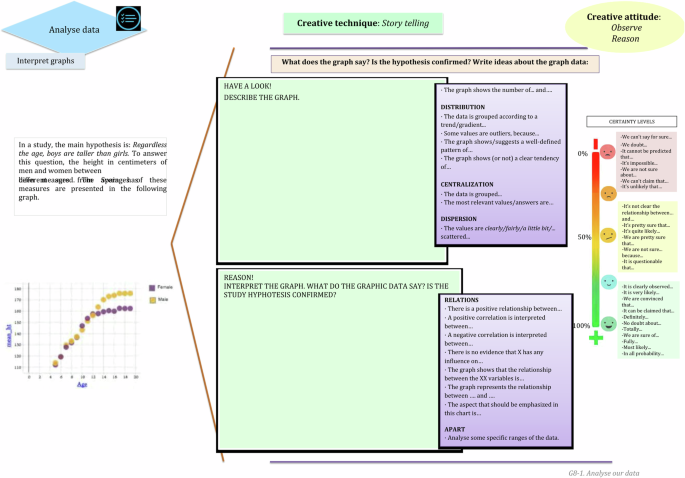
Example of Draw conclusions activity.
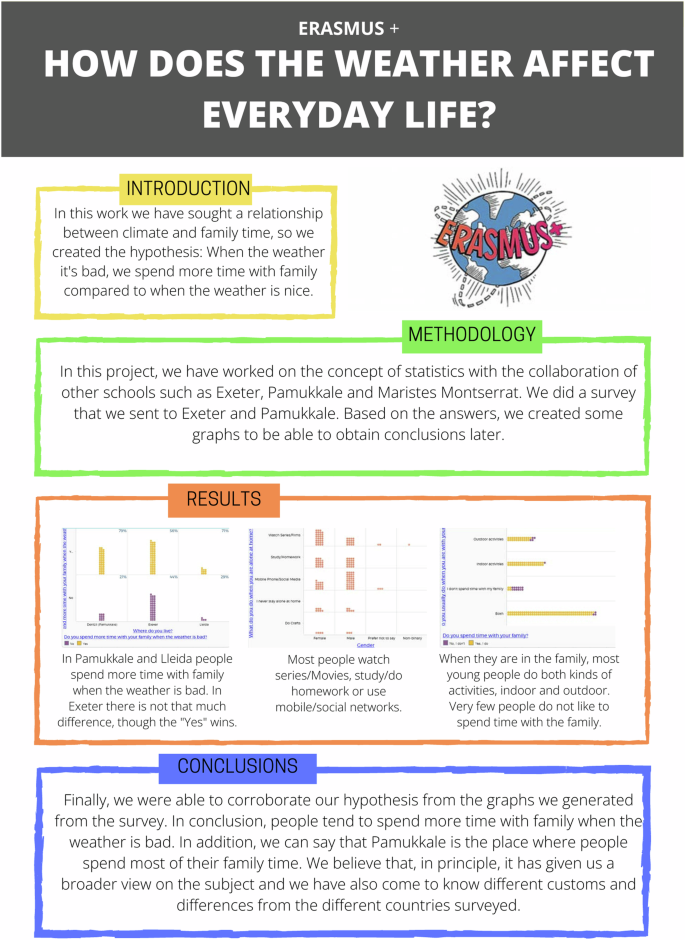
Example of Make decisions activity. It is presented students’ infographic to communicate their project decisions and conclusions.
Collaborative learning : Students worked in small groups during the whole project and were encouraged to actively create, reflect and evaluate ideas by using effective communication skills and ground-rules. Three specific strategies from “Thinking Together” programme (Mercer et al., 2019 ) for promoting good small-group work and exploratory talk were explicitly taught and these are (a) reflection on group roles, (b) reflection on attitudes and behaviours that promote collaborative learning, and (c) development of effective ground rules.
Technology : The SPIDAS project used two types of technologies: CODAP data analysis software and different applications linked to Google Drive. CODAP software allows graphical visualization of data and supports students understanding and interpretation of their data. Due to the CODAP interactive and manipulative design, students can actively explore their own data and obtain meaningful graphical representations that could help draw data-based conclusions (e.g., Fig. 3 ). Considering the extensive research about the role of interactive technologies (Major et al., 2017 ; Pifarré, 2019 ) to enhance collaborative work and dialogic discussions, some Google Drive applications (such as Docs, Slides) were used. These applications allow the creation of synchronic and multi-user workspaces that in our project fostered four key processes of collaborative work with technology: (a) discussion of shared ideas; (b) co-construction of new ideas, planning and reflection on joint work; (c) support to the development of statistics literacy and (d) enrichment of data analytics strategies such as organization of data, manipulation of data, creation of graphs, analysis of data and making decisions based on data.
The innovative instructional design advocated for student-centred methodologies, wherein teachers adopted a dual role: part lecturer, part coach, fostering collaborative learning within student groups. They facilitated the data analytics projects undertaken by each group, providing guidance throughout the process and supporting them in drawing conclusions and making informed decisions based on their analyses.
Control group (CG) intervention
The CG followed a traditional intervention. It also lasted 2 months. It was a teacher-centred intervention and the teacher mainly used lectures to teach the same statistical concepts taught in the EG. The statistical literacy taught integrates the next concepts: mean, median, mode, range, variability, qualitative and quantitative variables, frequency, proportional reasoning, count, reading graphs, sample, and population. CG students followed the lectures, had a passive role, paid attention to the explanations of the teachers and applied what they had learned by carrying out a series of individual and routine exercises. Unlike the EG, in the CG all the students worked with the same data provided by the teacher. Some of these exercises were carried out outside the classroom, as homework and these exercises were solved individually.
Regarding the use of technology, Excel software was used. This technological tool consists of a spreadsheet that allows calculations and graph creation. Working with this software requires being knowledgeable about the mathematical operations necessary to execute the desired parameters. We believe that with Excel, students should invest more time in understanding which calculations and formulas they need to apply and how, rather than lesson analysing and interpreting data. The teachers explained in class the operations that were to be carried out with Excel, so that, at home, the students could carry out most of the activities. These activities contained real-life data, yet lacked contextualization of the problem or daily life situation.
Data analysis
In order to analyse the sample normality a Shapiro–Wilk statistical test was run with SPSS. Due to the sample is not normally distributed, non-parametric tests were used. On one hand, for comparing the intragroup differences between the pre-test and post-test results, the Wilcoxon test was established. On the other hand, Mann–Whitney U test was used to analyse the intergroup differences between the post-test results in both groups (experimental vs. control).
This section will analyse the effects of the technology-enhanced, collaborative and data-driven project-based learning on four variables (or factors) included in the questionnaire on the students’ attitudes towards statistics, namely: (a) global attitude towards statistics learning; (b) anxiety towards statistics; (c) affection towards statistics; and (d) attitude towards statistics with technology. The global attitude score resulted from the sum of the 16 items included in the questionnaire ( Annex ). Similarly, the score for each factor was calculated by adding the ratings of all the items that composed each factor. Therefore, the factors of anxiety (i5, i7, i10, i11, i12) and affection (i1, i3, i8, i14, i15) contained five items each and the statistics learning with the technology factor contained six items (i2, i4, i6, i9, i13, i16). The Likert scale was a four-point scale: 1 (strongly disagree), 2 (disagree), 3 (agree), or 4 (strongly agree).
Intervention effect on intragroup differences
Wilcoxon analyses were carried out to study the effect of the educational interventions on each experimental (EG and CG) group of students’ attitudes toward statistics. The effect size was checked with Cohen’s d statistic. Table 2 summarizes these results. Experimental group students showed significant differences ( α = 0.05) in their global attitude score. Besides, experimental group students displayed significant scoring differences in the anxiety and technology factors. Although there was a positive trend in the affection factor, no statistical significance was found.
The control group students did not show significant differences neither in global attitude scores nor in any of the three factors analysed.
Intervention effect on intergroup differences
A Mann–Whitney U test analysis was carried out to investigate the differences between the two groups, before and after students’ participation in the SPIDAS intervention. The effect size was checked with Cohen’s d statistic. Table 3 summarizes these results. These analyses display significant differences ( α = 0.05) between EG and CG students as regards their global attitude score and in three factors of the questionnaire: namely Anxiety, Affection, and use of Technology. Figure 6 displays the mean scores obtained by the two groups in pre- and post-measurements of the different factors of the questionnaire and the significant statistical differences observed in the analysis.

Pretest and posttest results and statistical differences between EG and CG students.
Furthermore, these results firstly show that the experimental group obtained higher mean post-test scores than the control group regarding the overall attitude questionnaire towards statistics (see Fig. 6 ). The experimental group presented a higher global attitude score in the questionnaire both before and after the intervention. Although before the intervention the global attitude of the EG students was already higher than that obtained by the CG, the post-intervention improvement was greater and statistically significant in the EG and not in the CG, whose improvement was hardly perceived. This result allows us to conclude that the SPIDAS intervention had a positive impact on the student's attitudes toward learning statistics with technology.
Secondly, EG students significantly decreased their levels of anxiety toward learning statistics after their participation in the SPIDAS intervention, unlike the CG students, who showed a statistically low decrease in this variable. The difference in the post-measure between both groups was statistically significant, being the EG score higher than that of CG students (Fig. 6 ).
Thirdly, regarding the affection factor, in EG students there was a tendency to improve this factor after the SPIDAS intervention. The post-test value was higher than that of the pre-test in this group. On the other hand, in the CG the post score in the affection factor decreased. Therefore, the impact of the traditional intervention had a negative impact on the student’s perception of their abilities to learn and solve statistical problems. The comparison between the two groups (see Fig. 6 ) yielded statistically significant differences between the EG and the CG, in the pre- and post-measures. In addition, the EG showed a higher score in the post-measure while the CG decreased its post-score. This result increased the differences between the two groups in this variable. These data allow us to conclude that the impact of the SPIDAS intervention also had a positive impact on the affection variable towards learning statistics.
Finally, with respect to technology, EG students significantly improved their attitude toward learning statistics with technology after the SPIDAS intervention, unlike the CG students who hardly showed any improvement. The comparison of post-intervention scores between both groups (see Fig. 6 ) as regards the technology factor shows statistical differences between both groups, namely, EG students obtained higher scores in this factor compared to CG students. Thus, the technology-enhanced intervention positively influenced the students’ attitude towards learning statistics.
Discussion and conclusions
The main objective of this study was to investigate the effects of technology-enhanced, collaborative, and data-driven project-based learning on the students’ attitudes towards statistics. This study distinguishes itself from other PBL studies on statistics because we investigated a long-term intervention in real classrooms and integrated into one intervention the three pedagogical variables that previous research highlighted as relevant in statistics education: (a) the use of technological tools and affordances for analysing and visualizing data, (b) enrichment of collaborative strategies and (c) project-based learning with a data analysis approach.
Results show that the designed SPIDAS intervention had a highly positive impact on the students’ attitudes toward statistics (Hypothesis 1) and on student’s affect towards learning statistics (Hypothesis 3). Our results support those obtained by other authors that indicate that the PBL is an innovative methodology that meets the necessary characteristics to improve students’ attitudes and increase their interest and motivation towards statistics, as the active role of students in investigating real-life questions is notable (Koparan and Güven, 2014 ; Siswono et al., 2018 ). The EG intervention granted students an active role in investigating a problem that both captured their interest and was related to a daily problem, with the added use of technology. According to Siswono et al. ( 2018 ), improvement in learning statistics is greater if the PBL is combined with technology.
Furthermore, our SPIDAS intervention explicitly taught students a series of collaborative strategies, such as the assumption of different roles, drawing up a joint work plan, managing time for solving problems, distributing responsibilities and co-evaluating group work. Previous educational research highlights that the improvement of the organization and management strategies of group work has a positive impact on the better functioning of small group work and on the creation of positive synergy between group members, which in turn has a positive impact on the all-students’ attitudes towards learning (Chang and Brickman, 2018 ; Pai et al., 2015 ). In this respect, our study confirms these results.
Unlike the results obtained by the EG students, the traditional intervention followed by the CG did not improve the students’ attitudes towards statistics. Previous research points out that one of the limitations of traditional teaching is that it does not contextualize statistical concepts with real-life situations and thus, students cannot establish meaningful links with daily life problems. This has a negative impact on the students’ attitudes towards learning statistics (Bateiha et al., 2020 ; Hwa, 2018 ; Özdemir et al., 2015 ). Our CG students learned statistical concepts focusing on mathematical procedures and calculations of sets of data that bore no relation with their real-life context. This makes it difficult for students to build meaningful learning and feel that statistical concepts could be useful for them outside the school context and for solving daily problems (Lalayants, 2012 ). Different studies highlight that the practical use of curricular content in collaboration with peers and with the teacher’s guidance is one of the key elements that can explain students’ learning (Andrade and Chacón, 2018 ; Torrecilla, 2018 ). These elements are emphasized in the experimental intervention and, on the contrary, are not usually part of a more traditional teaching.
Despite the positive results obtained by EG in all the factors of the questionnaire, it was revealed that for both groups—EG and CG—there was a certain lack of interest of the students towards statistics (item 3 → EG p = 0.007; CG p = 0.047) and they did not get to enjoy learning statistics (item 1 → EG p = 0.081; CG p = 0.104), since these items present lower scores in post-intervention measure than the pre-test measure. Also, technology did not make the learning of statistics more interesting (item 16 → EG p = 0.976; CG p = 0.50). Despite this negative perception of learning statistics, the actual improvement in EG compared to CG is remarkable as it is supported by statistically significant differences.
One possible explanation for the slight improvement in the EG students’ affection may be accounted for in that the PBL involves more complex procedures, more effort, and more time in fulfilling the tasks than traditional teaching to learn the content (Koparan and Güven, 2014 ). Being the first experience of the students with a PBL, they may need being involved in further and longer-term PBL experiences to present better and more positive perceptions about learning statistics. Therefore, more long-term studies using innovative methodologies are needed to investigate more about the impact of these methodologies on students’ attitudes and affection in learning statistics (Siswono et al., 2018 ).
Our results also reveal that the SPIDAS instruction had a positive impact on the decrease of the students’ anxiety towards learning statistics (H2). In addition, our results show that the educational intervention followed by the EG had a greater impact than the traditional intervention followed by the control group in reducing students’ anxiety towards learning statistics. These findings are consistent with those found in previous research studies, which claimed a strong relationship between mathematical anxiety, motivation and mathematical achievement (Abín et al., 2020 ; Henschel and Roick, 2017 ; Passolunghi et al., 2016 ).
On the other hand, unlike the results obtained with EG students, the CG students’ anxiety may not have decreased because they learned statistical contents with insufficient context and application to real life. In this line of argument, Lalayants ( 2012 ) claimed in his study that the fear felt by a group of university students towards learning statistics was caused mainly by the lack of connection between their studies and statistics. Basically, they did not understand how to apply the content to real-life situations. The same group of university students declared in the questionnaire that it would have helped them reduce anxiety if they had found any of the following aspects in their statistics classes, i.e., practical real-life problem-solving related to their future profession, teachers who cared about their negative feelings, working sessions with technology, and collaborative work in small groups, as opposed to individual work.
Although students decreased their anxiety towards statistics after their participation in the SPIDAS intervention, students still expressed certain levels of anxiety when doing statistics (item 11 of the questionnaire → EG p = 0.069; CG p = 0.661). On this issue, some authors defend that a low level of anxiety toward statistics is not necessarily totally negative. In some cases, a low level of anxiety can motivate students not to give up and continue working to understand the content (Çiftçi, 2015 ).
These results coincide with those found in previous studies that indicate the benefits of implementing a collaborative and student-centred learning methodology (Bateiha et al., 2020 ) and carrying out contextualized activities involving real-life problems (Chong et al., 2019 ) contributed to the students’ increased affection. These characteristics were included in the SPIDAS intervention and, therefore, helped to improve the EG students’ value judgments and motivation in the present study.
Regarding the intensive use of a variety of technological tools to learn key statistical concepts and data analysis skills (Hypothesis 4), our study indicates a statistically significant improvement in the EG students’ attitude towards learning statistics with technology. CG students do not show any progress on this variable. Therefore, the designed SPIDAS intervention confirms that the combination of the use of technology and collaborative work in small groups are powerful pedagogical tools to improve students’ attitudes towards statistics.
These results are consistent with those found by various authors, such as Kazak et al. ( 2014 ), who present the use of the TinkerPlots software as an enabling technology for understanding statistical concepts. Other authors conclude that new technologies encourage collaboration, motivation and facilitate the performance of student-centred activities, a combination that improves students’ attitudes toward learning statistics (Attard and Holmes, 2020 ; Bray and Tangney, 2017 ; Gonzalez and Trelles, 2019 ; Moreno-Guerrero et al., 2020 ).
It is worth noting the higher increase shown by EG in comparison with CG in Item 6 (EG p = 0.000; CG p = 0.031). In our view, this result suggests that the use of CODAP throughout the SPIDAS intervention supported the students’ creation of useful data visualizations and students’ learning of data analytics skills. CODAP software facilitates learning, and this has a noticeable positive impact on student attitudes (Woodard et al., 2020 ).
As a final conclusion, this study suggests that implementing technology-enhanced, collaborative, and data-driven project-based learning can provide the basis for an appropriate teaching approach to improve secondary students’ attitudes toward statistics, to have a positive impact on the student's motivation to learn statistics and on the reduction of anxiety in solving problems about this subject. In light of the results of this study, these three educative variables should be considered and included in the design of educative interventions that have the objective to engage students in data analytics in which students are able to select a real problem to investigate, collect and explore appropriate data, make inferences and discuss their conclusions using a data-based approach.
The study shows some limitations that call for further research. Firstly, it was the first interaction of students with statistics, the use of CODAP software in PBL and this learning approach requires a high cognitive implication from students during the learning process (Ge and Chua, 2019 ). This novelty may cause a cognitive overload that could reduce the impact of the innovative intervention on the students’ attitudes toward statistics. Therefore, the design of longer interventions with a longitudinal research approach capable of improving the students’ attitudes over a longer period of time would probably soften the impact of cognitive overload.
Secondly, our study has revealed that despite the innovative intervention, some EG students still feel anxiety towards learning statistics. Despite this, some research claims that a certain level of anxiety can boost students’ positive actions to not give up and, as a result, successfully fulfil a task (Çiftçi, 2015 ). Therefore, it would be interesting to design more qualitative research methods capable of capturing and measuring positive levels of anxiety for learning statistics.
Thirdly, as previous studies noted the relevance of socioeconomic status in academic achievement (Berkowitz et al., 2017 ), for future research, the socioeconomic level of the students will be considered as an independent variable.
Fourthly, the questionnaire used in the study has been useful for evaluating students’ attitudes toward statistics using technology. However, the questionnaire needs further validation to extend the results to other contexts. To this end, as a future research action, we plan to expand the sample, analyse its external validity, and compare the results of the confirmatory factor analysis obtained in this study against other samples (such as students from other courses of Secondary Education, Upper Secondary Education and even university students).
The overall results found in this study are promising for improving students’ data analysis competences with technology and they can be seen as a contribution to the United Nations Education 2030 Agenda which emphasises the need to equip all students with technological and mathematical knowledge. By following this agenda, it is expected that a greater number of students will reach the minimum levels of knowledge in mathematics.
Data availability
The data supporting this study’s findings are available from the corresponding author ([email protected]), upon reasonable request. The data are not publicly available because they contain information that could compromise the privacy of research participants.
Abín A, Núñez JC, Rodríguez C et al (2020) Predicting mathematics achievement in secondary education: the role of cognitive, motivational, and emotional variables. Front Psychol 11. https://doi.org/10.3389/fpsyg.2020.00876
Albelbisi NA, Yusop FD (2018) Secondary school students’ use of and attitudes toward online mathematics homework. Turk Online J Educ Technol 17(1):144–153. https://files.eric.ed.gov/fulltext/EJ1165745.pdf
Google Scholar
Andrade E, Chacón E (2018) Implicaciones teóricas y procedimentales de la clase invertida [Theoretical and procedural implications of flipped classroom]. Pulso 41:251–267
Article Google Scholar
Attard C, Holmes K (2020) It gives you that sense of hope: an exploration of technology use to mediate student engagement with mathematics. Heliyon 6(1):e02945. https://doi.org/10.1016/j.heliyon.2019.e02945
Article PubMed PubMed Central Google Scholar
Bargagliotti A, Franklin C, Arnold P et al (2020) Pre-K12 Guidelines for Assessment and Instruction in Statistics Education (GAISE) report II. American Statistical Association and National Council of Teachers of Mathematics
Batanero C, Díaz C (2011) Estadística con proyectos [Statistics with projects]. Universidad de Granada
Bateiha S, Marchionda H, Autin M (2020) Teaching style and attitudes: a comparison of two collegiate introductory statistics classes. J Stat Educ 28(2):154–164. https://doi.org/10.1080/10691898.2020.1765710
Berkowitz R, Moore H, Astor RA et al. (2017) A research synthesis of the associations between socioeconomic background, inequality, school climate, and academic achievement. Rev Educ Res 87(2):425–469. https://doi.org/10.3102/0034654316669821
Bray A, Tangney B (2017) Technology usage in mathematics education research—a systematic review of recent trends. Comput Educ 114:255–273. https://doi.org/10.1016/j.compedu.2017.07.004
Casey S, Hudson R, Harrison T et al. (2020) Preservice teachers’ design of technology-enhanced statistical tasks. Contemp Issues Technol Teach Educ 20(2):269–292
Chang Y, Brickman P (2018) When group work doesn’t work: insights from students. CBE—Life Sci Educ 17(3):ar52. https://doi.org/10.1187/cbe.17-09-0199
Chew PK, Dillon DB (2014) Statistics anxiety update: refining the construct and recommendations for a new research agenda. Perspect Psychol Sci 9(2):196–208. https://doi.org/10.1177/1745691613518077
Article PubMed Google Scholar
Chong FMS, Shahrill M, Li HC (2019) The integration of a problem-solving framework for Brunei high school mathematics curriculum in increasing student’s affective competency. J Math Educ 10(2):215–228
Çiftçi SK (2015) Effects of secondary school students’ perceptions of mathematics education quality on mathematics anxiety and achievement. educational. Educ Sci: Theory Pract 15(6):1487–1501. https://doi.org/10.12738/estp.2015.6.2829
Cujba A, Pifarré M (2023) Relaciones entre el aprendizaje de la estadística y las actitudes del alumnado en el marco de un proyecto de análisis de datos con tecnología. Educ Mat 35(2):196–225. https://doi.org/10.24844/em3502.08
Cujba A, Pifarré M (2024) Validación exploratoria de un cuestionario de actitudes hacia la estadística con tecnología. Campus Virtuales 13(1):47–58. https://doi.org/10.54988/cv.2024.1.1266
Di Martino P, Zan R (2015) The construct of attitude in mathematics education. In: Pepin B, Roesken-Winter B (eds) From beliefs to dynamic affect systems in mathematics education. Springer, Switzerland, pp. 269–277
Domu I, Pinontoan KF, Mangelep NO (2023) Problem-based learning in the online flipped classroom: its impact on statistical literacy skills. J Educ e-Learn Res 10(2):336–343. https://doi.org/10.20448/jeelr.v10i2.4635
Dowker A, Cheriton O, Horton R et al. (2019) Relationships between attitudes and performance in young children’s mathematics. Educ Stud Math 100(3):211–230. https://doi.org/10.1007/s10649-019-9880-5
Emmioğlu ESMA, Capa-Aydin YESIM (2012) Attitudes and achievement in statistics: a meta-analysis study. Stat Educ Res J 11(2) https://iase-web.org/documents/SERJ/SERJ11(2)_Emmioglu.pdf
Engel J (2017) Statistical literacy for active citizenship: a call for data science education. Stat Educ Res J 16(1):44–49. https://doi.org/10.52041/serj.v16i1.213
Fredriksen H (2021) Investigating the affordances of a flipped mathematics classroom from an activity theoretical perspective. Teach Math Appl: Int J IMA 40(2):83–98. https://doi.org/10.1093/teamat/hraa011
Frischemeier D, Biehler R, Podworny S et al (2021) A first introduction to data science education in secondary schools: teaching and learning about data exploration with CODAP using survey data. Teach Stat 43:S182–S189. Wiley Editorial https://doi.org/10.1111/test.12283
Frischemeier D, Kazak S, Leavy A et al (2022) International perspectives on early statistical thinking: comparison of primary school curricula in different countries. In Peters SA, Zapata-Cardona L, Bonafini F, Fan A (eds) Bridging the gap: empowering & educating today’s learners in statistics. Proceedings of the 11th International Conference on Teaching Statistics (ICOTS11 2022), Argentina
Fujita T, Kazak S, Turmo MP et al (2018) Strategic partnership for innovative in data analytics in schools. https://blogs.exeter.ac.uk/spidasatexeter/files/2019/01/State_of_Art_Review_partA_final_draft_V3.pdf
Gal I, Ginsburg L (1994) The role of beliefs and attitudes in learning statistics: towards an assessment framework. J Stat Educ 2(2) https://doi.org/10.1080/10691898.1994.11910471
Garfield J, Ben‐Zvi D (2007) How students learn statistics revisited: a current review of research on teaching and learning statistics. Int Stat Rev 75(3):372–396. https://doi.org/10.1111/j.1751-5823.2007.00029.x
Ge X, Chua BL (2019) The role of self‐directed learning in PBL: implications for learners and scaffolding design. In: Moallem M, Hung W, Dabbagh N (eds) The Wiley handbook of problem‐based learning. pp 367–388
Gómez LF (2016) Intención y competencia pedagógica: el uso del aprendizaje colaborativo en la asignatura de matemáticas en secundaria [Intention and pedagogical competence: use of collaborative learning in the subject of mathematics in secondary school]. Prop Represent 4(2):133–179. https://doi.org/10.20511/pyr2016.v4n2.121
Gonzales N, Trelles C (2019) Mathematical modeling and Tinker Plots in solving problems. In: 2019 XIV Latin American Conference on Learning Technologies (LACLO). San Jose Del Cabo, Mexico, pp. 367–374. https://doi.org/10.1109/LACLO49268.2019.00068
Haatainen OM, Aksela M (2021) Project-based learning in integrated science education: active teachers’ perceptions and practices. LUMAT: Int J Math Sci Technol Educ 9(1):149–173. https://doi.org/10.31129/LUMAT.9.1.1392
Haddar AG, Hendriyanto D, Munandar H et al. (2023) Analysis of the effectiveness of project steam-based learning model to improve students’ critical thinking skills. Community Dev J 4(5):10519–10525
Henschel S, Roick T (2017) Relationships of mathematics performance, control and value beliefs with cognitive and affective math anxiety. Learn Individ Differ 55:97–107. https://doi.org/10.1016/j.lindif.2017.03.009
Hwa SP (2018) Pedagogical change in mathematics learning: harnessing the power of digital game-based learning. J Educ Technol Soc 21(4):259–276
Kazak S, Fujita T, Pifarré MT (2021) Students’ informal statistical inferences through data modeling with a large multivariate dataset. Math Think Learn 25(1):23–43. https://doi.org/10.1080/10986065.2021.1922857
Kazak S, Fujita T, Wegerif R (2014) Year six students’ reasoning about random “bunny hops” through the use of TinkerPlots and peer-to-peer dialogic interactions. In Makar K, de Sousa B, Gould R (eds) Proceedings of the 9th International Conference on Teaching Statistics (ICOTS 9). Flagstaff, AZ, USA. Voorburg, The Netherlands: International Statistical Institute
Knight S, Mercer N (2015) The role of exploratory talk in classroom search engine tasks. Technol Pedagog Educ 24(3):303–319. https://doi.org/10.1080/1475939X.2014.931884
Koparan T, Güven B (2014) The effect of project based learning on the statistical literacy levels of student 8th grade. Eur J Educ Res 3(3):145–157. https://doi.org/10.12973/eu-jer.3.3.145
Lalayants M (2012) Overcoming graduate students’ negative perceptions of statistics. J Teach Soc Work 32(4):356–375. https://doi.org/10.1080/08841233.2012.705259
Lyons KM, Lobczowski NG, Greene JA et al. (2021) Using a design-based research approach to develop and study a web-based tool to support collaborative learning. Comput Educ 161:104064. https://doi.org/10.1016/j.compedu.2020.104064
Major L, Haßler B, Hennessy S (2017) Tablet use in schools: impact, affordances and considerations. In: Handbook on digital learning for K-12 schools. Springer, Cham, pp. 115–128
Major L, Warwick P, Rasmussen I et al. (2018) Classroom dialogue and digital technologies: a scoping review. Educ Inf Technol 23(5):1995–2028. https://doi.org/10.1007/s10639-018-9701-y
Makar K, Rubin A (2018) Learning about statistical inference. In: Ben-Zvi D, Makar K, Garfield J (eds) International handbook of research in statistics education. Springer International handbooks of education. Springer International Publishing, pp 261–294
Markulin K, Bosch M, Florensa I (2021) Project-based learning in Statistics: a critical analysis. Caminhos Educ Mat Rev 11(1):200–220
McNamara A (2018) Key attributes of a modern statistical computing tool. Am Stat 1–30 https://doi.org/10.1080/00031305.2018.1482784
Mercer N (2019) Language and the joint creation of knowledge: the selected works of Neil Mercer. Routledge
Mercer N, Hennessy S, Warwick P (2019) Dialogue, thinking together and digital technology in the classroom: some educational implications of a continuing line of inquiry. Int J Educ Res 97:187–199. https://doi.org/10.1016/j.ijer.2017.08.007
Mojica GF, Barker H, Azmy CN (2019) Instrumented learning in a CODAP-enabled learning environment. In: Contreras JM, Gea MM, López-Martín MM, Molina-Portillo E (eds) Actas del Tercer Congreso Internacional Virtual de Educación Estadística. CIVEEST
Moreno-Guerrero AJ, Rondon GM, Martinez HN et al. (2020) Collaborative learning based on Harry Potter for learning geometric figures in the subject of mathematics. Mathematics 8(3):369. https://doi.org/10.3390/math8030369
Muñoz JM, Arias MA, Mato MD (2018) Elementos predictores del rendimiento matemático en estudiantes de Educación Secundaria Obligatoria [Elements of mathematical predictive performance in compulsory secondary education students]. Profesorado 22:391–408. https://doi.org/10.30827/profesorado.v22i3.8008
Nolan MM, Beran T, Hecker KG (2012) Surveys assessing students' attitudes toward statistics: a systematic review of validity and reliability. Stat Educ Res J 11(2):103–123
Noll J, Clement K, Dolor J et al. (2018) Students’ use of narrative when constructing statistical models in TinkerPlots. ZDM 50(7):1267–1280. https://doi.org/10.1007/s11858-018-0981-x
Ozdamli F, Karabey D, Nizamoglu B (2013) The effect of technology supported collaborative learning settings on behaviour of students towards mathematics learning. Procedia-Soc Behav Sci 83:1063–1067. https://doi.org/10.1016/j.sbspro.2013.06.198
Özdemir AS, Yildiz F, Yildiz SG (2015) The effect of project based learning in “ratio, proportion and percentage” unit on mathematics success and attitude. Eur J Sci Math Educ 3(1):1–13
Özmen ZM, Baki A (2021) Statistics instructors’ perceptions of statistics literacy in different undergraduate programs. Int J Res Educ Sci 7(3):852–871. https://doi.org/10.46328/ijres.1817
Pai HH, Sears DA, Maeda Y (2015) Effects of small-group learning on transfer: a meta-analysis. Educ Psychol Rev 27(1):79–102. https://doi.org/10.1007/s10648-014-9260-8
Passolunghi MC, Caviola S, De Agostini R et al. (2016) Mathematics anxiety, working memory, and mathematics performance in secondary-school children. Front Psychol 7:42. https://doi.org/10.3389/fpsyg.2016.00042
Pifarré M (2019) Using interactive technologies to promote a dialogic space for creating collaboratively: a study in secondary education. Think Skills Creat 32:1–16. https://doi.org/10.1016/j.tsc.2019.01.004
Ramirez C, Schau C, Emmioglu E (2012) The importance of attitudes in statistics education. Stat Educ Res J 11(2) https://iaseweb.org/documents/SERJ/SERJ11(2)_Ramirez.pdf
Rao VNV, Legacy C, Zieffler A et al. (2023) Designing a sequence of activities to build reasoning about data and visualization. Teach Stat 45(S1):S80–S92. https://doi.org/10.1111/test.12341
Ridgway J, Nicholson J, Campos P et al (2017) Tools for visualising data: a review. In Molnar A (ed) Teaching statistics in a data rich world. Proceedings of the satellite conference of the International Association for Statistical Education (IASE)
Santos LM (2016) La resolución de problemas matemáticos y el uso coordinado de tecnologías digitales [Mathematical problems resolution and the coordinated use of digital technologies]. In: Angel R (ed) Cuadernos de Investigación y Formación en Educación Matemática. Universidad de Costa Rica, Costa Rica, pp. 333–346
Savelsbergh ER, Prins GT, Rietbergen C et al. (2016) Effects of innovative science and mathematics teaching on student attitudes and achievement: a meta-analytic study. Educ Res Rev 19:158–172. https://doi.org/10.1016/j.edurev.2016.07.003
Silva ODLD, Sousa Á (2020) Effects of life satisfaction on students’ attitudes towards statistics and technology and their interrelationships. In: 13th International Conference of Education, Research and Innovation (ICERI2020). IATED Academy, pp. 4994–5002
Siswono TYE, Hartono S, Kohar AW (2018) Effectiveness of project based learning in statistics for lower secondary schools. Eurasia J Educ Res 18(75):197–212. https://doi.org/10.14689/ejer.2018.75.11
Sutherland S, Ridgway J (2017) Interactive visualisations and statistical literacy. Stat Educ Res J 16(1):26–30. https://doi.org/10.52041/serj.v16i1.210
Szczygieł M, Pieronkiewicz B (2021) Exploring the nature of math anxiety in young children: intensity, prevalence, reasons. Math Think Learn 24(3):248–266. https://doi.org/10.1080/10986065.2021.1882363
Torrecilla MS (2018) Flipped Classroom: Un modelo pedagógico eficaz en el aprendizaje de Science [Flipped classroom: an effective pedagogical model in Science learning]. Rev IberoamEduc 76(1):9–22. https://doi.org/10.35362/rie7612969
Tuohilampi L (2016) Contextualizing mathematics related affect: significance of students’ individual and social level affect in Finland and Chile. REDIMAT 5(1):7–27. https://doi.org/10.4471/redimat.2016.1823
Wild CJ, Pfannkuch M (1999) Statistical thinking in empirical inquiry. Int Stat Rev 67(3):223–248
Wild CJ, Utts JM, Horton NJ (2011) What is statistics? In: Ben-Zvi D, Makar K, Garfield J (eds) International handbook of research in statistics education. Springer international handbooks of education. Springer International Publishing, pp 5–36
Williams AS (2015) Statistics anxiety and worry: the roles of worry beliefs, negative problem orientation, and cognitive avoidance. Stat Educ Res J 14(2):53–75. http://iase-web.org/documents/SERJ/SERJ14(2)_Williams.pdf
Woodard V, Lee H, Woodard R (2020) Writing assignments to assess statistical thinking. J Stat Educ 28(1):32–44. https://doi.org/10.1080/10691898.2019.1696257
Zotou M, Tambouris E, Tarabanis K (2020) Data-driven problem based learning: enhancing problem based learning with learning analytics. Educ Technol Res Dev 68(6):3393–3424. https://doi.org/10.1007/s11423-020-09828-8
Download references
Acknowledgements
This paper has been funded by the Strategic Partnership for the Innovative Application of Data Analytics in Schools (SPIDAS) project, European Union’s Erasmus+, under Grant 2017-1-UK01-KA201-036520. Furthermore, the paper has been partially funded by the Spanish Ministry of Science and Innovation under Grant PDC2022-133203-I00. All views expressed are those of the authors, not the European Commission or the Spanish Ministry. Finally, the authors would like to thank the teachers and the pupils of the schools Claver Raïmat Jesuïtes-Lleida and Maristes Montserrat-Lleida for their participation in the study reported in this paper.
Author information
Authors and affiliations.
Department of Psychology, Faculty of Education, Universitat de Lleida, Lleida, Spain
Andreea Cujba & Manoli Pifarré
You can also search for this author in PubMed Google Scholar
Contributions
Manoli Pifarré, as the project’s principal investigator, led the conceptual background and the methodology of the paper. Both authors were equally involved in data collection, analysis, and manuscript writing.
Corresponding author
Correspondence to Manoli Pifarré .
Ethics declarations
Competing interests.
The authors declare no competing interests.
Ethical approval
Approval was obtained from the University of Lleida ethics committee. The vice-rector of research and transfer signed the International Strategic Partnership for Innovative in Data Analytics in Schools (SPIDAS) ERASMUS+ project implementation in the schools that were partners of the project. The procedures used in this study adhere to the tenets of the Declaration of Helsinki.
Informed consent
The schools and teachers participating in this study were also partners in the SPIDAS ERASMUS+ project. The headteachers and the participating teachers were responsible for collecting signed informed consent forms from the parents of all students involved in the study. The signed informed consents were collected previously to the educative intervention. These forms explicitly requested permission from the families to use the data for research purposes.
Additional information
Publisher’s note Springer Nature remains neutral with regard to jurisdictional claims in published maps and institutional affiliations.
Supplementary information
Rights and permissions.
Open Access This article is licensed under a Creative Commons Attribution-NonCommercial-NoDerivatives 4.0 International License, which permits any non-commercial use, sharing, distribution and reproduction in any medium or format, as long as you give appropriate credit to the original author(s) and the source, provide a link to the Creative Commons licence, and indicate if you modified the licensed material. You do not have permission under this licence to share adapted material derived from this article or parts of it. The images or other third party material in this article are included in the article’s Creative Commons licence, unless indicated otherwise in a credit line to the material. If material is not included in the article’s Creative Commons licence and your intended use is not permitted by statutory regulation or exceeds the permitted use, you will need to obtain permission directly from the copyright holder. To view a copy of this licence, visit http://creativecommons.org/licenses/by-nc-nd/4.0/ .
Reprints and permissions
About this article
Cite this article.
Cujba, A., Pifarré, M. Enhancing students’ attitudes towards statistics through innovative technology-enhanced, collaborative, and data-driven project-based learning. Humanit Soc Sci Commun 11 , 1094 (2024). https://doi.org/10.1057/s41599-024-03469-5
Download citation
Received : 13 September 2023
Accepted : 15 July 2024
Published : 27 August 2024
DOI : https://doi.org/10.1057/s41599-024-03469-5
Share this article
Anyone you share the following link with will be able to read this content:
Sorry, a shareable link is not currently available for this article.
Provided by the Springer Nature SharedIt content-sharing initiative
Quick links
- Explore articles by subject
- Guide to authors
- Editorial policies
PENGARUH MODEL PEMBELAJARAN PROJECT- BASED LEARNING DENGAN PENDEKATAN STEM UNTUK MENINGKATKAN AKTIVITAS BELAJAR PADA MATA PELAJARAN INFORMATIKA DI SMPIT AL-MADANI
Lutfiah Anisa Sholaihah, - (2024) PENGARUH MODEL PEMBELAJARAN PROJECT- BASED LEARNING DENGAN PENDEKATAN STEM UNTUK MENINGKATKAN AKTIVITAS BELAJAR PADA MATA PELAJARAN INFORMATIKA DI SMPIT AL-MADANI. S1 thesis, Universitas Pendidikan Indonesia.
Baca Full Text klik disini
| Text S_PSTI_2009579_Title.pdf | |
| Text S_PSTI_2009579_Chapter1.pdf | |
| Text S_PSTI_2009579_Chapter2.pdf Restricted to Staf Perpustakaan | |
| Text S_PSTI_2009579_Chapter3.pdf | |
| Text S_PSTI_2009579_Chapter4.pdf Restricted to Staf Perpustakaan | |
| Text S_PSTI_2009579_Chapter5.pdf | |
| Text S_PSTI_2009579_Appendix.pdf Restricted to Staf Perpustakaan |
Pembelajaran berperan penting dalam pengembangan potensi dan karakter peserta didik. Dalam era digital saat ini, pelajaran Informatika memiliki peranan krusial dalam membekali peserta didik dengan pengetahuan teknologi informasi. Di SMPIT Al-Madani, tingkat partisipasi siswa dalam pembelajaran Informatika masih rendah, dengan kurangnya keterlibatan dalam kolaborasi dan pemecahan masalah. Penelitian ini menggunakan metode campuran (mixed method) untuk mengevaluasi pengaruh model pembelajaran project-based learning dengan pendekatan STEM terhadap aktivitas belajar. Pendekatan kuantitatif mengukur efek model pembelajaran melalui analisis data numerik dari tes, sementara pendekatan kualitatif mengumpulkan data dari lembar observasi dan dokumentasi untuk mendapatkan wawasan mendalam tentang keterlibatan siswa. Hasil penelitian menunjukkan nilai statistik [F(1,29) = 15,027, p = 0,001, partial eta squared = 0,341], dengan p < 0,05 perbedaan signifikan secara statistik. Nilai partial eta squared sebesar 0,341 mengindikasikan ukuran efek berada pada kategori "large effect". Temuan ini diperkuat oleh data kualitatif, menunjukkan bahwa penerapan project-based learning dengan pendekatan STEM efektif meningkatkan aktivitas belajar di SMPIT Al-Madani. ----- Learning plays an important role in developing the potential and character of students. In the current digital era, Informatics lessons have a crucial role in equipping students with information technology knowledge. At SMPIT Al-Madani, the level of student participation in Informatics learning is still low, with a lack of involvement in collaboration and problem solving. This research uses a mixed method to evaluate the effect of the project-based learning model with a STEM approach on learning activities. The quantitative approach measures the effects of the learning model through analysis of numerical data from tests, while the qualitative approach collects data from observation sheets and documentation to gain in-depth insight into student engagement. The results showed the statistical value [F(1,29) = 15.027, p = 0.001, partial eta squared = 0.341], with p < 0.05 statistically significant difference. The partial eta squared value of 0.341 indicates that the effect size is in the "large effect" category. These findings are strengthened by qualitative data, showing that the application of project-based learning with a STEM approach is effective in increasing learning activities at SMPIT Al-Madani.
| Item Type: | Thesis (S1) |
|---|---|
| Additional Information: | https://scholar.google.com/schhp?hl=en&authuser=0 ID SINTA Dosen Pembimbing: Nuur Wachid Abdul Majid: 6054692 Rizki Hikmawan: 6122897 |
| Uncontrolled Keywords: | Project-Based Learning, STEM, aktivitas belajar, Informatika. learning activities, Informatics |
| Subjects: | |
| Divisions: | |
| Depositing User: | Lutfiah Anisa Sholaihah |
| Date Deposited: | 26 Aug 2024 04:15 |
| Last Modified: | 26 Aug 2024 04:15 |
| URI: |
Actions (login required)
| View Item |

IMAGES
VIDEO
COMMENTS
Problem-based learning (PBL) is a student-centered approach where students learn about a subject or course by working in groups or individually to find the solution for an open-ended problem (Cornell, n.d.), and project-based learning (PBL) or project-based instruction is an instructional approach that gives students the opportunity to acquire ...
Both problem-based learning and project-based learning are referred to as PBL, and some find it confusing to separate the two pedagogies. ... Students learn about a topic through the solving of problems and generally work in groups to solve the problem where, often, there is no one correct answer. In short, 'it empowers learners to conduct ...
The prevalence of project-based learning (PBL) has increased significantly, contributing to serious discussions about its advent. ... The PBL approach is an effective way to develop 21st-century capabilities by promoting critical thinking as well as problem-solving, interpersonal communication, information and media literacy, cooperation ...
In K-12 education, project-based learning (PBL) has gained momentum as an effective inquiry-based, teaching strategy that encourages students to take ownership of their learning journey. By integrating authentic projects into the curriculum, project-based learning fosters active engagement, critical thinking, and problem-solving skills.
In this strategy, students engage with people outside the classroom at the beginning, middle, and end of a project to hear stories that relate to the problem context, receive guidance on the technical aspects of the content they are learning, and ask questions. 5: Groups work together in small bursts of time to solve problems.
Difference Between Project Based Learning and Problem Based Learning. While both emphasize active learning, critical thinking and student engagement. The former focuses on long-term projects that integrate multiple disciplines. Whereas the latter centers on solving specific problems with a narrower focus and shorter duration.
By immersing students in real-world challenges, PBL encourages critical thinking, problem-solving, collaboration, and creativity. Throughout this article, we will uncover real success stories of schools and educators who have embraced project-based learning and witnessed remarkable transformations in student achievement and engagement.
In Project Based Learning, the project is the vehicle for teaching the important knowledge and skills student need to learn. The project contains and frames curriculum and instruction. In contrast to dessert projects, PBL requires critical thinking, problem solving, collaboration, and various forms of communication.
Introduction. Project-based learning (PBL) involves students designing, developing, and constructing hands-on solutions to a problem. The educational value of PBL is that it aims to build students' creative capacity to work through difficult or ill-structured problems, commonly in small teams. Typically, PBL takes students through the ...
The foundational concept behind project-based learning (PBL) and problem-based learning (PrBL) is to develop students who can manage their own learning. Directing and managing one's own learning is a central tenet of 21st century pedagogy. See Chap. 32, 21st Century Skills, for additional information.
Conclusion. Project-Based Learning is uses a real-world approach that requires students to use collaboration, problem solving and critical thinking skills that leads to a culminating product over an extended period of time. While Problem-Based Learning uses those same skills and narrows the focus to 1 or 2 standards over a shorter time period ...
1. Introduction. In recent years institutions of higher education have been trying to provide students with both hard skills, namely cognitive knowledge and professional skills (Vogler et al., 2018), and soft skills, such as problem-solving and teamwork (Casner-Lotto & Barrington, 2006).However, these skill related goals are not easy to be achieved as traditional learning has been playing a ...
Project based learning also has other advantages for students. These include: Deeper engagement and interaction with learning content. Encouragement of higher order thinking and problem-solving skills. Development of peer and professional networks. Engagement with potential employers and career mentors.
A Note on Math and the Two PBLs. Teachers at some K-12 schools that use project-BL as a primary instructional method, such as the New Technology Network and Envision Schools, have begun saying that they use problem-BL for math.Especially at the secondary level, teaching math primarily through multi-disciplinary projects has proved challenging. (Not that occasional multi-disciplinary projects ...
Proponents of project-based learning (PBL) argue that it fosters a sense of purpose in young learners, pushes them to think critically, and prepares them for modern careers that prize skills like collaboration, problem-solving, and creativity. Critics say that the pedagogy places too much responsibility on novice learners, and ignores the ...
Project-based learning (PBL) or project-based instruction is a student-centered teaching method that encourages learning through engaging, real-world, curriculum-related questions or challenges.. This, of course, goes deeper than doing any old project. The goal is to get students to engage with a question or challenge that requires concentration and nuanced problem-solving skills.
Project Based Problem Solving and Decision Making is an essential everyday resource for professional project managers, as well as students studying project management. Dr. Kerzner is not only a world-renowned author in project management but also serves as the Senior Executive Director at the International Institute for Learning, Inc. (IIL).
It combines group learning, problem-solving, interdisciplinary learning, project management, and facilitatorship to foster creativity. The integration of intellectual and non-intellectual factors in PBL creates a supportive learning environment conducive to the development of creativity, making it a powerful tool in the modern educational ...
Therefore, Project Based Learning is generally accepted as an effective method for teaching processes, such as problem solving and decision making (Thomas, 2000). Besides, experts should help in developing character’s emotional, social elements apart from cognitive (Katz, 2000).
Email: [email protected]. Enhancing Student's Problem -solving Skills through Project-based Learning. Ebrahim Karan and Lisa Brown *. ABSTRACT. The goal of the study is to overcome two main ...
Project-based learning is considered a highly effective way of education and is considered the highest level of teacher didactic skills. The fundament of project-based learning, is the correct idea that students should not learn abstract definitions, but rather they should learn by solving complex projects (Čapek, Citation 2019).
Advantages of Problem-Based Learning. 1. Development of Long-Term Knowledge Retention. Students who participate in problem-based learning activities can improve their abilities to retain and recall information, according to a literature review of studies about the pedagogy.. The literature review states "elaboration of knowledge at the time of learning" -- by sharing facts and ideas ...
Developing teacher knowledge, skills, and confidence in Science, Technology, Engineering, and Mathematics (STEM) education is critical to supporting a culture of innovation and productivity across the population. Such capacity building is also necessary for the development of STEM literacies involving the ability to identify, apply, and integrate concepts from STEM domains toward understanding ...
Project Based Learning (PBL) is an approach where students solve real-world problems. Learn how Project-Based Learning (PBL) benefits schools and teachers and aligns with NEP 2020 goals. ... In modern education, PBL is particularly relevant as it mirrors the dynamic, problem-solving environments students will encounter in their careers. It ...
(1) Data-driven project-based learning: The SPIDAS intervention explicitly incorporates the four educational variables highlighted in the PBL literature review (e.g., Batanero and Díaz, 2011 ...
At SMPIT Al-Madani, the level of student participation in Informatics learning is still low, with a lack of involvement in collaboration and problem solving. This research uses a mixed method to evaluate the effect of the project-based learning model with a STEM approach on learning activities.